Facing a New Reality
Educating and entertaining kids during a global pandemic
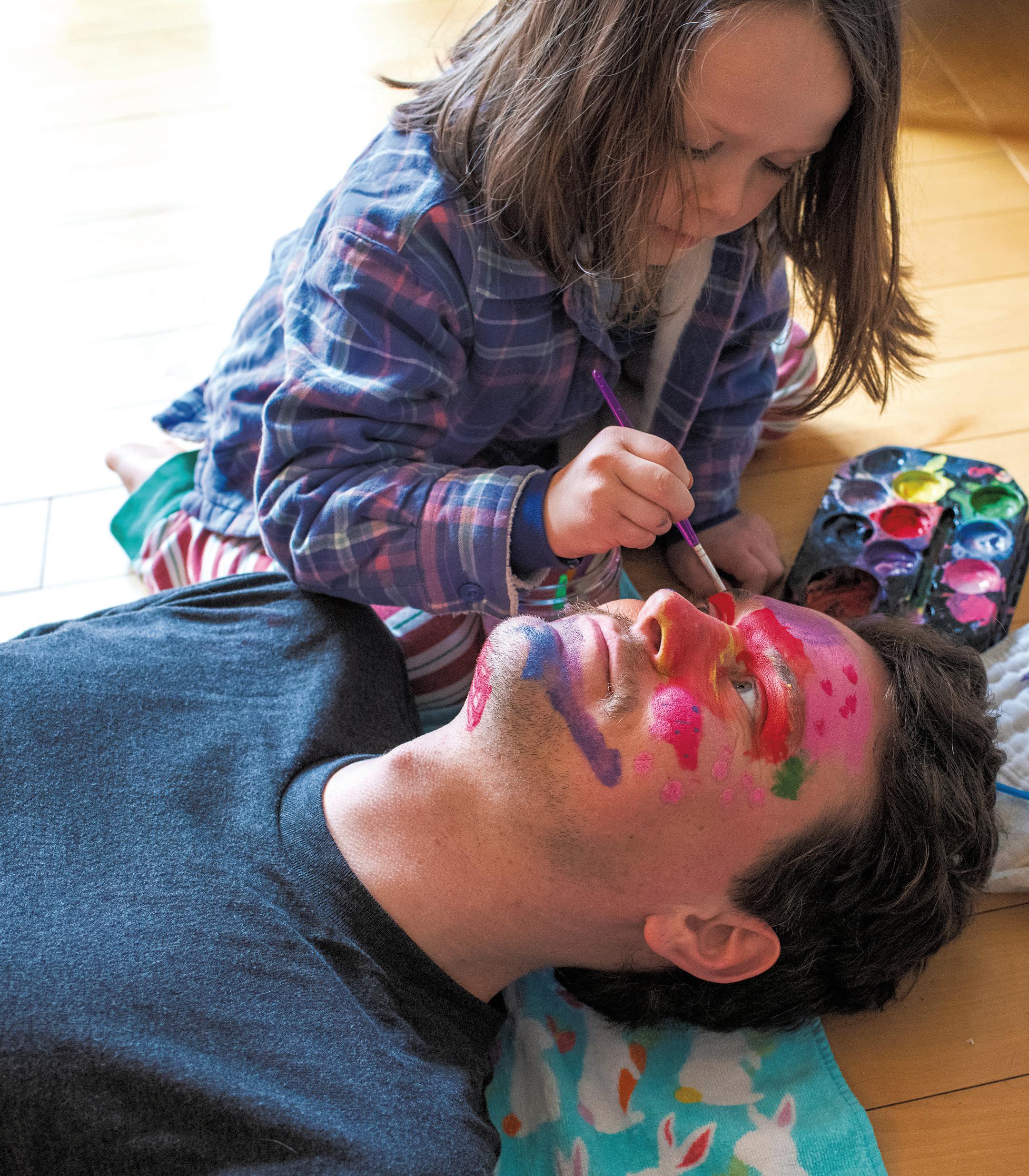
BROUGHT TO YOU BY











Educating and entertaining kids during a global pandemic

BROUGHT TO YOU BY










Everyone can help stop the spread of COVID-19
BROUGHT TO YOU BY
Don’t
Stay at home
Only leave for essentials
Practice social distancing
Check in on loved ones by phone
Exercise outdoors
Open Essential businesses only
Grocery stores and restaurants (for takeout and delivery)
Pharmacies
Critical manufacturing
YOU
Gather with friends or family
Leave home unless essential
Invite people over
Host play dates for kids Closed
Non-essential in-person businesses
Close contact businesses (spas, salons, barbers, etc.)
Concerts, sporting events, festivals, etc.
FOR MORE INFORMATION:
Health: healthvermont.gov/COVID19 Dial 2-1-1 coronavirus.gov
Employment: labor.vermont.gov Financial: accd.vermont.gov/covid-19
Mental Health: Available 24/7 - Crisis line: text VT to 741741
The National Suicide Prevention Lifeline is available 24/7 AT 800-273-8255
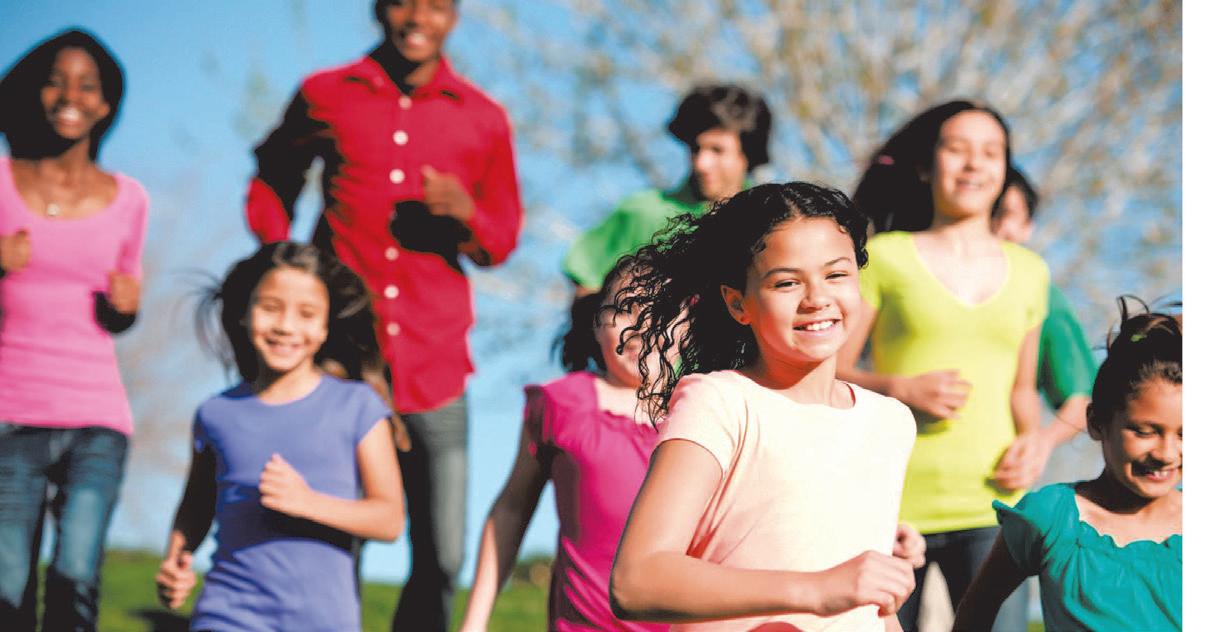








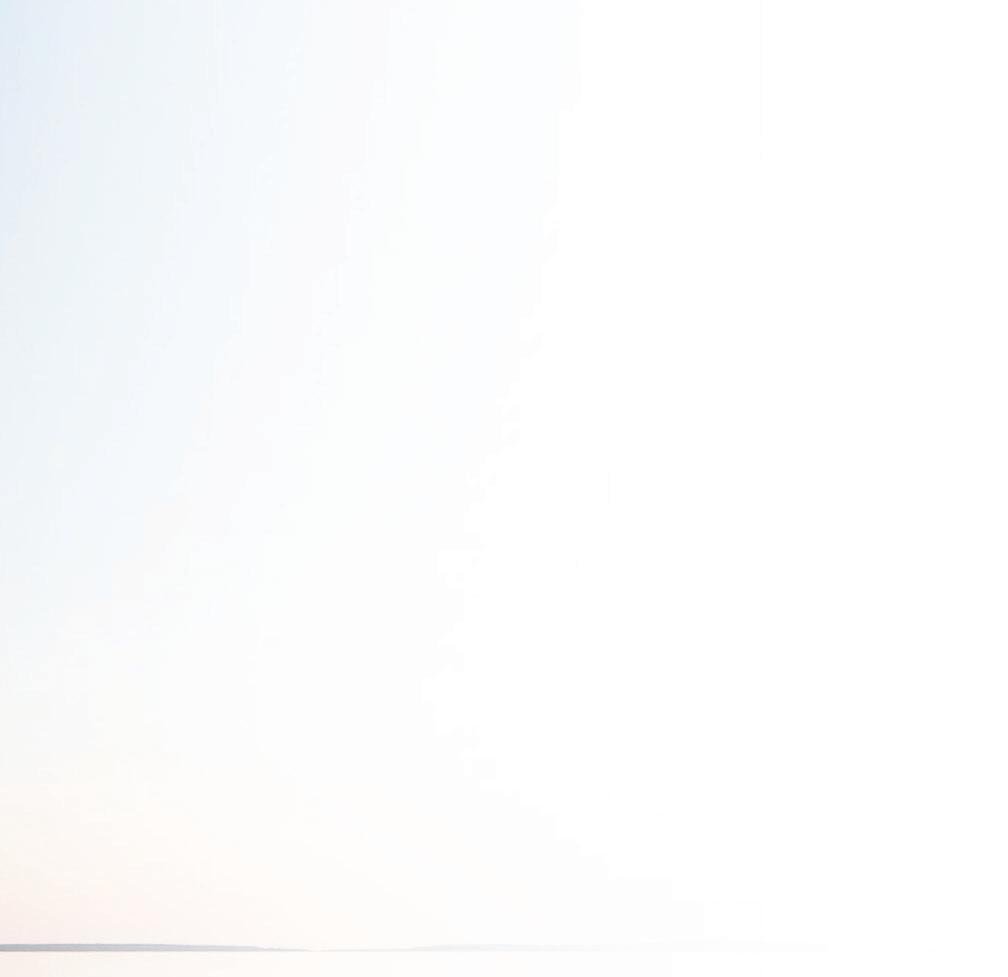

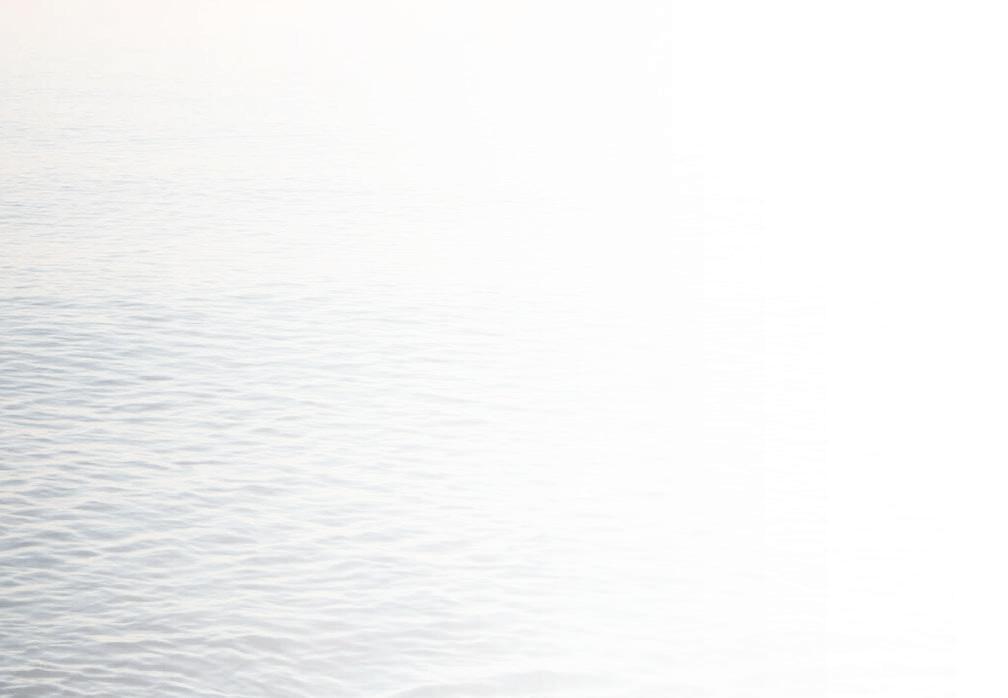


this time of uncertainty, NEFCU remains available to our members ~
COPUBLISHER/ EXECUTIVE EDITOR

Cathy Resmer cathy@kidsvt.com
COPUBLISHER
Colby Roberts colby@kidsvt.com
MANAGING EDITOR
Alison Novak alison@kidsvt.com
STAFF WRITER/ CALENDAR WRITER
Brett Ann Stanciu brett@kidsvt.com
MARKETING & EVENTS DIRECTOR
Corey Grenier corey@kidsvt.com
ACCOUNT EXECUTIVE
Kaitlin Montgomery kaitlin@kidsvt.com
PROOFREADERS
Katherine Isaacs, Carolyn Fox
PRODUCTION MANAGER
John James
CREATIVE DIRECTOR
Don Eggert
DESIGNERS
Rev. Diane Sullivan
Jeff Baron
CIRCULATION MANAGER
Matt Weiner
BUSINESS MANAGER
Marcy Carton
CONTRIBUTING WRITERS
Keegan Albaugh, Meredith Bay-Tyack, Heather Fitzgerald, Astrid Hedbor
Lague, Kathleen Kesson, Elisa Järnefelt, Erinn Simon, Trish Van Vliet
PHOTOGRAPHERS
Sam Simon, Tessa Valyou
P.O. BOX 1184 • BURLINGTON, VT 05402
802-985-5482 • KIDSVT.COM
Published 11x per year.
Circulation: 35,000 at locations throughout northern and central Vermont.
© 2020 Da Capo Publishing Inc. All rights reserved.
Editorial content in Kids VT is for general informational purposes. Parents must use their own discretion for following the advice in any editorial piece. Acceptance of advertising does not constitute service/product endorsement. Kids VT is a proud member of the Parenting Media Association. Kids VT distribution is audited for accuracy.
Da Capo Publishing shall not be held liable to any advertiser for any loss that results from the incorrect publication of its advertisement. If a mistake is ours, and the advertising purpose has been rendered valueless, Da Capo Publishing may cancel the charges for the advertisement, or a portion thereof as deemed reasonable by the publisher.
Da Capo Publishing reserves the right to refuse any advertising, including inserts, at the discretion of the publishers.
The highlight for our kids is our new tradition of hosting a weekly FAMILY
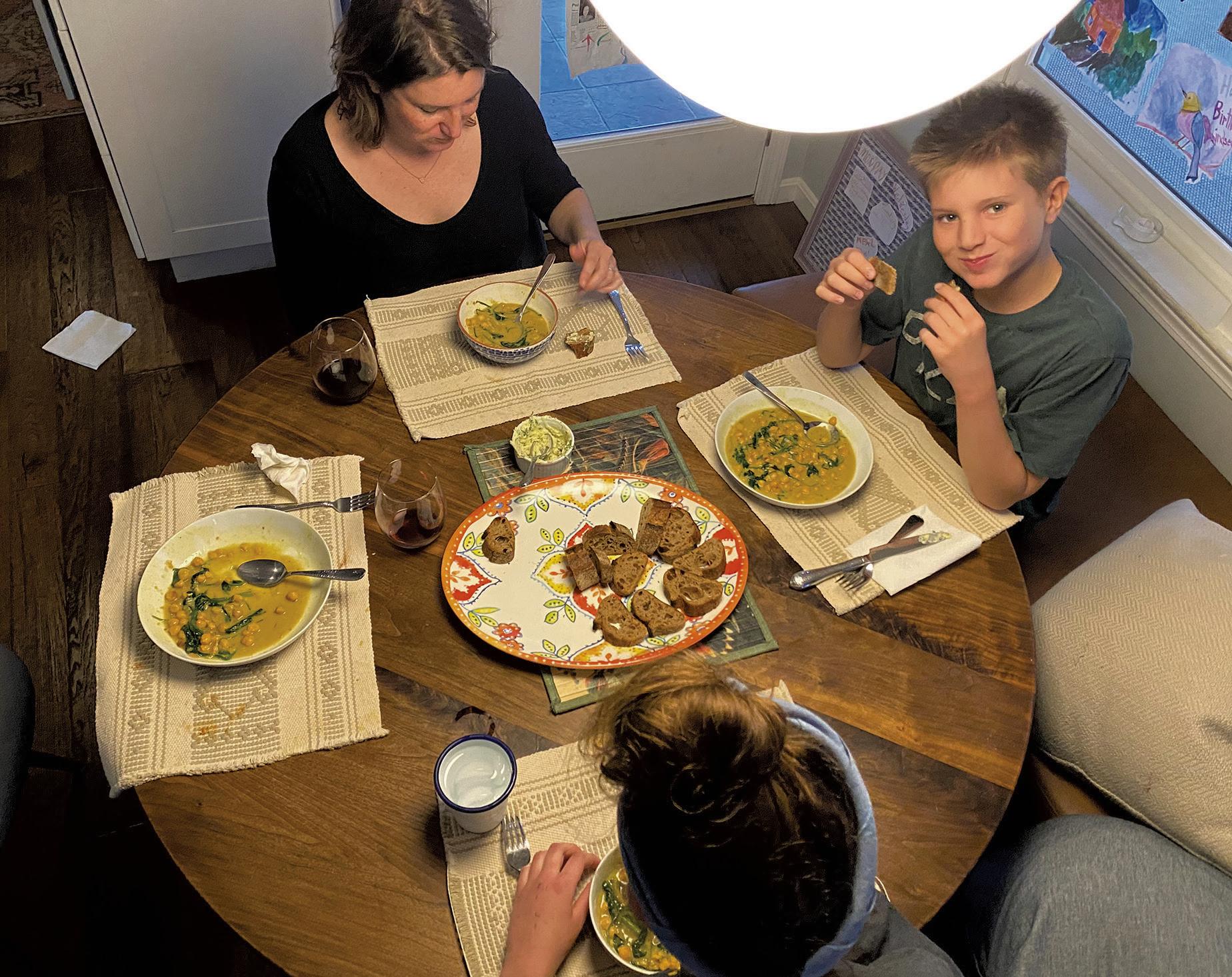
SLEEPOVER. The whole family (two adults, two kids, one dog) camps out in the same room, which is no easy feat in our small house. We make a paper-garland countdown calendar at the beginning of the week, and the kids rip o a ring each night until there’s only one left and the slumber party has arrived!
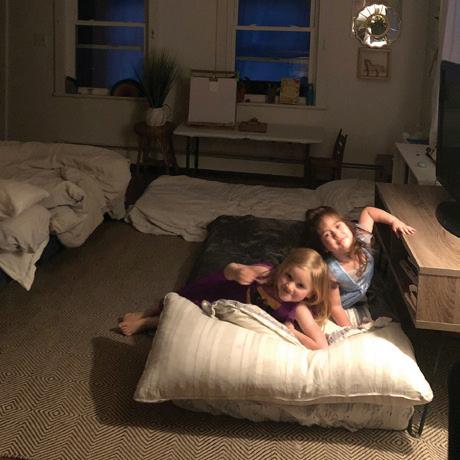
As parents, we’re accustomed to celebrating our kids’ firsts — first laugh, first step, first day of school, first lost tooth. But it’s rare, as adults, to experience our own “firsts.”
In the past few weeks, though, my life has been filled with firsts. I’m sure yours has, too. A few of them:
• First time I felt worried going to the grocery store
• First time I heard a sweet chorus of 20 fourth graders echo through my living room, as my son takes part in a virtual morning meeting
• First time I felt my heart go pitter-patter at the sight of hand sanitizer, in the form of four small bottles delivered to our mailbox by a neighbor who works for a company that produces it
• First time I awkwardly and skittishly moved away when I saw a friendly face walking toward me
• First time I used Zoom — to do many things, from meeting with my book club to taking a yoga class
• First time I’ve felt a deep sense of uncertainty about when I will see my loved ones again.
And, of course, like many families, mine is experiencing for the first time what it’s like to be cooped up, working and eating and breathing together, pretty much 24-7. My kids are suddenly each other’s one-and-only playmates. I can’t help but think that these days of being forced to discover how to get along will shape and strengthen their relationship for years to come.
Another first: We had to completely revise our plans for this issue of Kids VT When we assigned stories in early March, we couldn’t have imagined that a global pandemic would disrupt our lives so thoroughly.
It also upended our circulation strategy. With schools, childcare providers and attractions closed, we decided to distribute this issue inside our sister publication, Seven Days. Welcome, Seven Days readers! We hope you like what you see here.
Over the past two weeks, we also asked contributors to rewrite articles and brainstormed new topics to cover to reflect our current reality. On page 22, you’ll find “Distance Learning,” in which homeschooling parents o er advice on navigating the months ahead. For more on the topic of education, read Kathleen Kesson’s essay on page 38, in which she writes about the lessons she learned from “unschooling” her four children years ago. Some of Kesson’s gems: Boredom is productive. Take things apart. Get outside. And deep breaths — lots of them.
On page 12, Meredith Bay-Tyack’s “Growing Up Green” column focuses on low-waste craft projects, like inventing your own games and building small cities, that will keep your little ones occupied — at least for a bit. And in “Pop Culture” on page 16, Keegan Albaugh writes about the community connections that are bolstering him during this time.
I’ve been buoyed by the beautiful kid-made artwork and adorable photos of children and pets that readers have sent to us via Facebook. You’ll find as many of them as we could fit into this issue on pages 9 and 37. It’s comforting to think about families all over Vermont — putting crayons to paper, snuggling with their dogs and cats, cooking and baking up a storm, and supporting each other in ways big and small. We may be apart right now, but we’ll get through this together.
ALISON NOVAK, MANAGING EDITOR
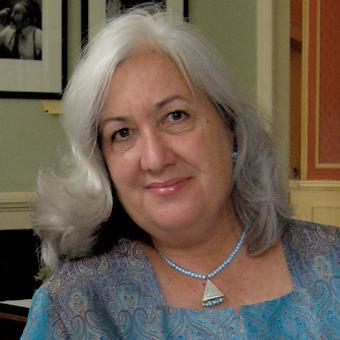
We are having a BOARD GAME TOURNAMENT Every time we play a game, we record who won, almost won and lost. “Gold” is worth three points; “silver,” two; and “bronze,” one. When we get to the end of the chart, I guess we are going to tally it all up and declare the big winner.
I’m hopeful our best memories of this time will be endless card games, evening walks, and lots of laughter through our group text with my brother and his girlfriend in New Hampshire. And I won’t soon forget the CARROT CAKE with cream cheese frosting we made.
BRETT ANN STANCIU, STAFF/CALENDAR WRITERKATHLEEN KESSON (“Use Your Words,” page 38) is a professor emerita at Long Island University Brooklyn and the former director of the John Dewey Project on Progressive Education at the University of Vermont and director of education at Goddard College. She currently lives in Barre and is actively engaged in working to make Vermont schools more equitable, sustainable and joyful. She serves on the board of the Community Engagement Lab and works closely with Vermont Learning for the Future (vtlff.org), a network for educators, parents and community members. Her latest book is Unschooling in Paradise, which she has made available for 99 cents in the Kindle store on Amazon.




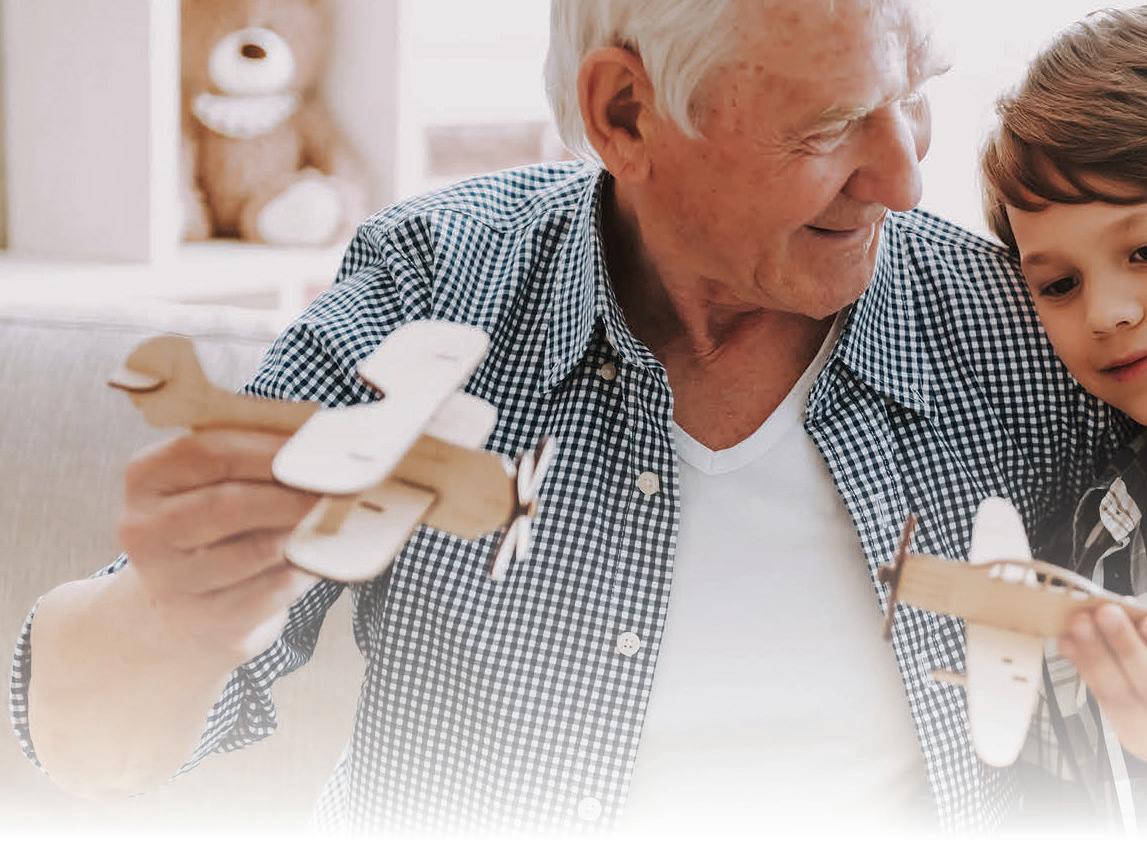
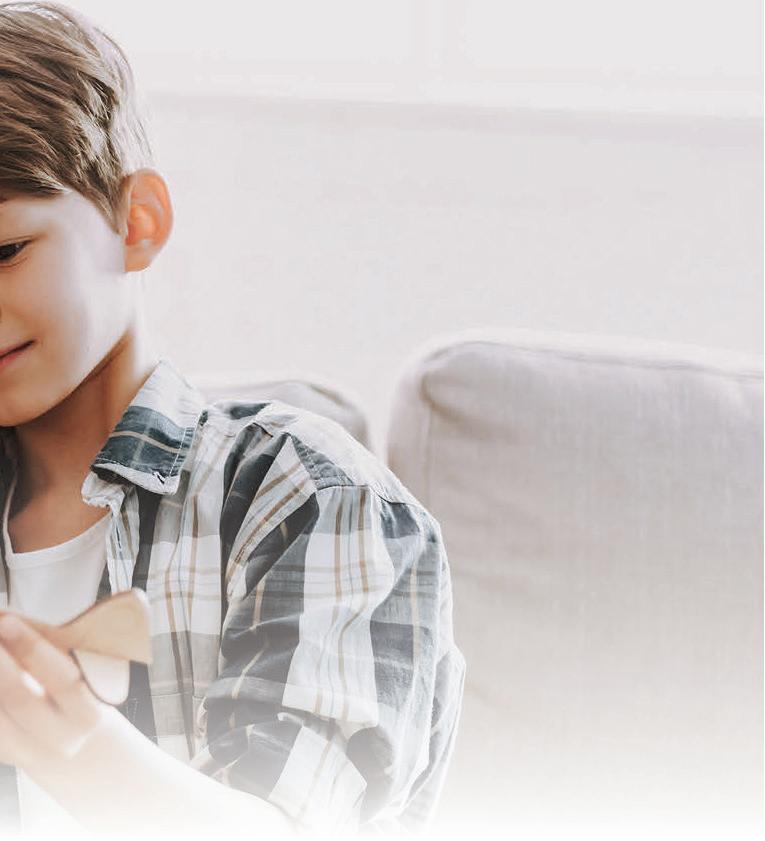

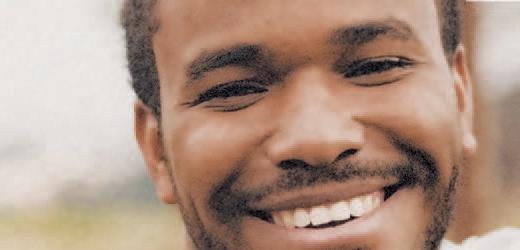








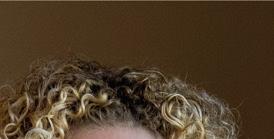


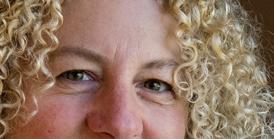

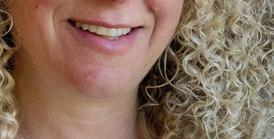







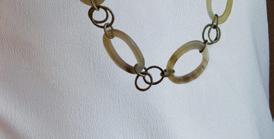











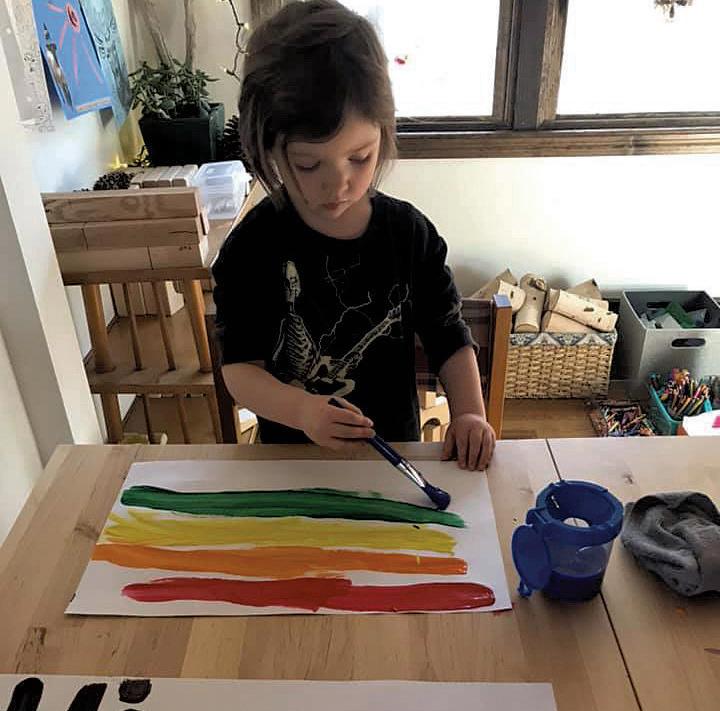
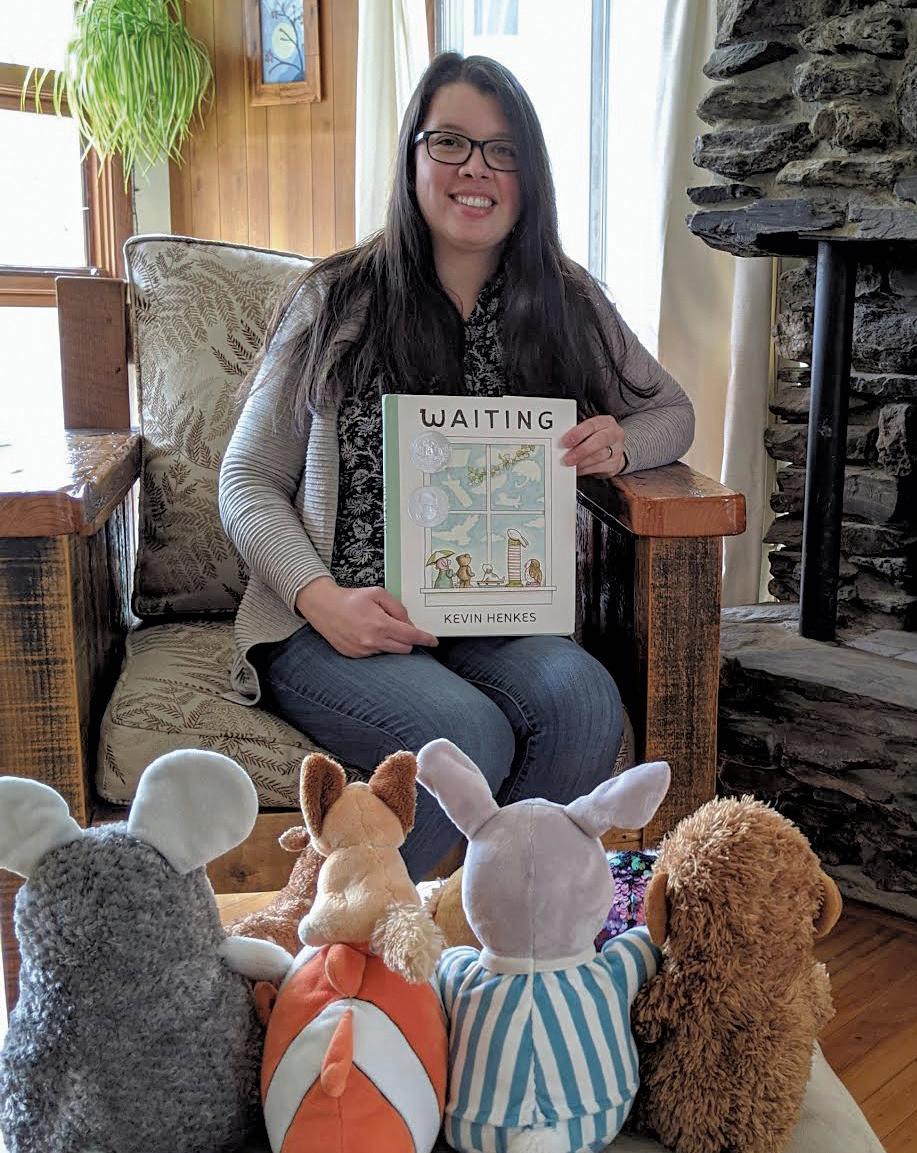

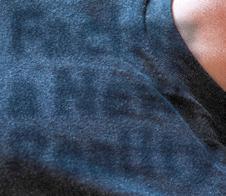
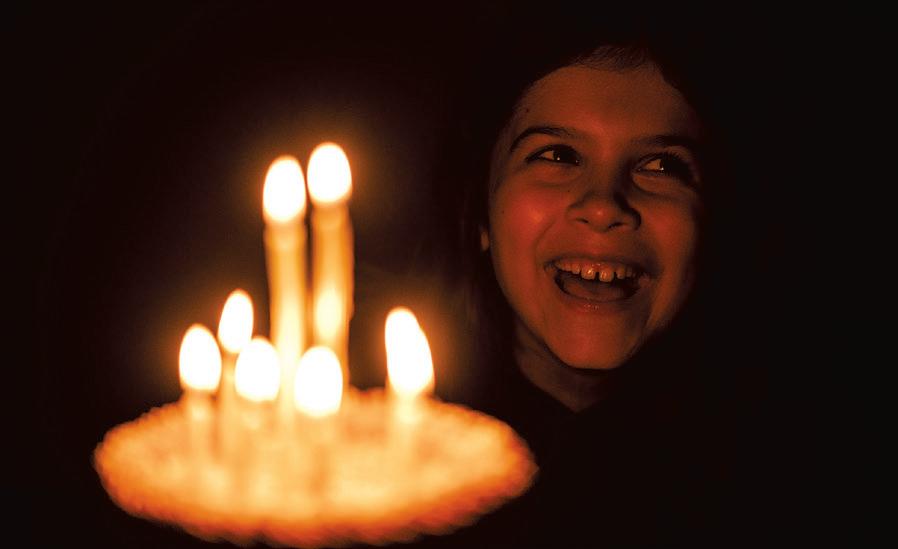
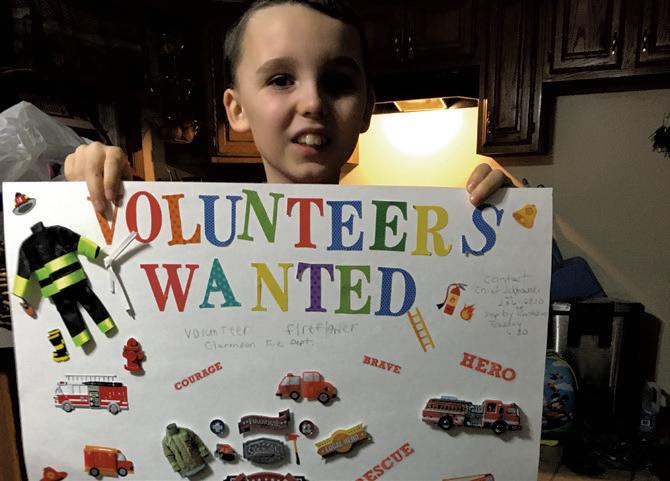

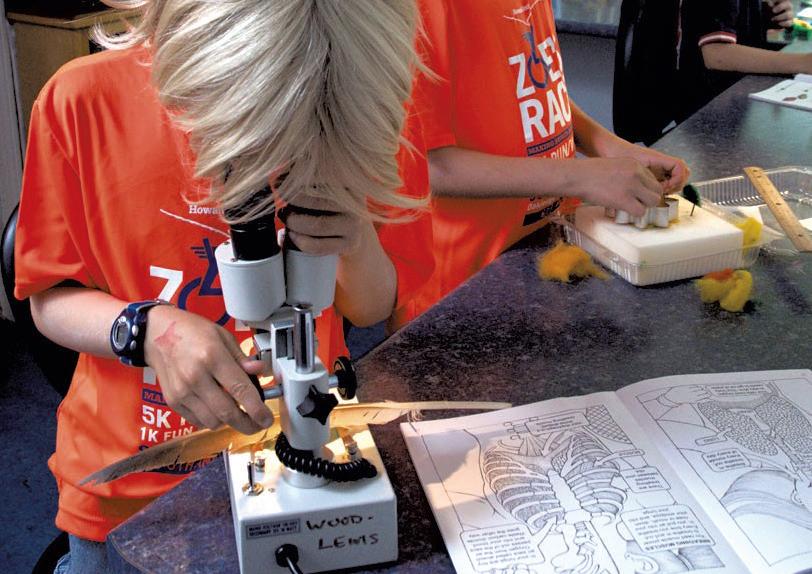
Movie studios are streaming kids’ flicks before their release dates — including Onward and Trolls World Tour — to entertain coopedup families. Frozen II was also released months ahead of schedule on Disney+, but chances are you already know about that.

The Vermont Teddy Bear factory in Shelburne is manufacturing face masks to help with the state shortage. That calls for (virtual) bear hugs all around.
Musical icon Dolly Parton has started “Goodnight With Dolly,” a weekly series on Facebook in which she reads bedtime stories to kids.
As if we needed another reason to love that lady.
Celebrities are churning out TikTok videos while selfquarantining to pass the time and entertain the public.
Jack Black, showing off his impressive moves in gym shorts and cowboy boots, will make you forget about the woes of the world for 30 seconds.
Seven years ago, I left a nearly 15-year career as a lab technician in biochemistry for a new adventure. I like to tell people that I get paid to smile and talk about food. I work at a specialty grocery store. My usual day includes serving delicious food samples, chatting with customers about what they’re planning to make for dinner, checking out customers at the register while asking about their plans for the rest of the day, and telling stories that may or may not be related to food. My customers have become my friends.
I have seen babies grow into bright young children, and I have even forged friendships with what I refer to as my “collection of Swedes.” Some of these people have even been to my mother’s house for our Swedish Christmas party. My daughter has babysat for some of the families I’ve met. I love going to work every day and feel like I am doing what I am meant to do.
But these are not normal times. Since we first heard the terms “novel coronavirus,” and “COVID-19,” everything has changed. Suddenly, customers weren’t smiling as much. There was less laughter in the store. Frightening news was coming out of Italy and elsewhere in Europe. Around the world, festivals and conventions were canceled. And then, there was a set of new travel restrictions. The first case was confirmed in Vermont. Schools were shut down and told to prepare for distance learning. Words like “pandemic,” “quarantine” and “shelter in place” had arrived at our door. This was when the panic shopping began. Our sample station closed down. The previously free-flowing employee snacks and co ee disappeared. Our shelves cleared out. First to go was hand sanitizer, then toilet paper. Wall-to-wall people filled the store. Our store broke all sales records. This was busier than Christmas or Thanksgiving, without the joy that those holidays bring. Some customers just looked confused as they piled things into their overflowing carts. Others looked halfway to terrified. Some started snapping at the workers — I had one customer tell me I was taking things out of her cart “all wrong.” I went home exhausted, falling into bed for a nap before dinner. Still, the next day, I returned to work, confronted by empty shelves with no products to fill them, since we were totally unprepared for the panic. We wiped down the empty
shelves with antiseptic wipes and sanitized our hands so often that they were dry as the desert. This continued for a few more days. But our warehouses started catching up to our sales, and the shelves began filling up. The hordes started to diminish. Our company is following recommendations from the Centers for Disease Control and Prevention, and we are sanitizing our counters, credit card terminals and hands between transactions. We are allowed to take unpaid leave if we choose to not work, and we will keep all of our benefits. If we come down with a respiratory infection (whether confirmed as COVID-19 or not), we’ll get paid sick leave, which does not take away from our “normal” paid time o . If someone in the store is diagnosed with COVID-19, they will close the store for 72 hours to do an extra-deep disinfectant cleaning. (As of this writing, no one has gotten sick yet. I hope it stays that way.) We started limiting the amount of customers in the store to 30 at a time.
I personally feel pretty safe in the store. I volunteered to run the line for a day, explaining our limit to customers while handing them a freshly sanitized cart or basket. Most customers are understanding. Many people have thanked us for keeping the store open. We have been deemed an essential business, and I carry an o cial letter stating that I work for a grocery store in my purse.
My husband, the owner of an automotive shop, is also still working. We are lucky that our children are teenagers and can be at home by themselves, finishing up their school year on their computers. Much-anticipated choir concerts and plays have been called o . My son will not get the chance to be the most adorable, 4’10” Gomez in the middle school production of The Addams Family. My daughter’s big junior/ senior music department trip to New York City was canceled. Instead of celebrating my daughter’s 17th birthday with a big party, we got take-out sushi. But, so far at least, we are healthy and safe.
So, I’ll continue to put on my uniform T-shirt and head into what some are calling the front lines. I look forward to when this is all over and I can get back to being paid to smile and talk to people about food.
Astrid Hedbor Lague is the "Mealtime" columnist for Kids VT.
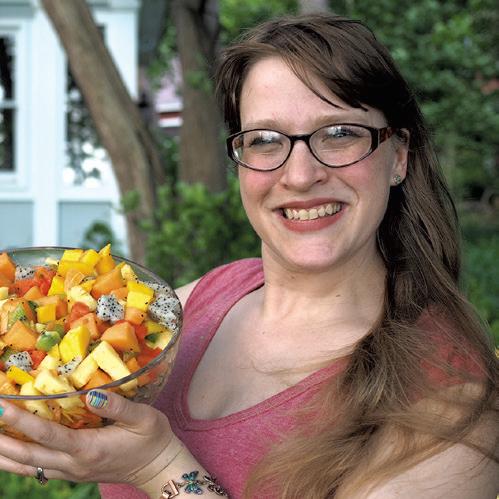
Benefits:
• Tapping your body awakens your senses and increases awareness
• Can relieve stress and anxiety
Steps:
• Rub your hands together while taking deep, slow breaths. It’s beginning to feel like it’s going to rain!
• Gently tap the crown of your head. It begins to sprinkle on you!
• Lightly pound your fists on your chest. It’s raining harder now!
• Slap the floor or your legs, ending with a clap of thunder. The thunder is roaring, and it’s raining even harder!
• Reverse the motions as the shower moves away.
• Now, bring your arms overhead, fluttering your fingers as you inhale. Exhale, lowering your arms back by your sides. The sun is coming back out!
• Practice this sun breath a few times to calm your body and mind.
Try This:
• Use a drum to make the sounds of a rainstorm.
• Imagine plants growing or a rainbow shimmering. How would you show these natural wonders with your body?
Thanks to Susan Cline Lucey of Evolution Prenatal & Family Yoga Center in Burlington and Essex Junction for sharing this pose. The center is currently offering yoga classes for kids and adults and childbirth education classes online. Visit evolutionprenatalandfamily.com for information.












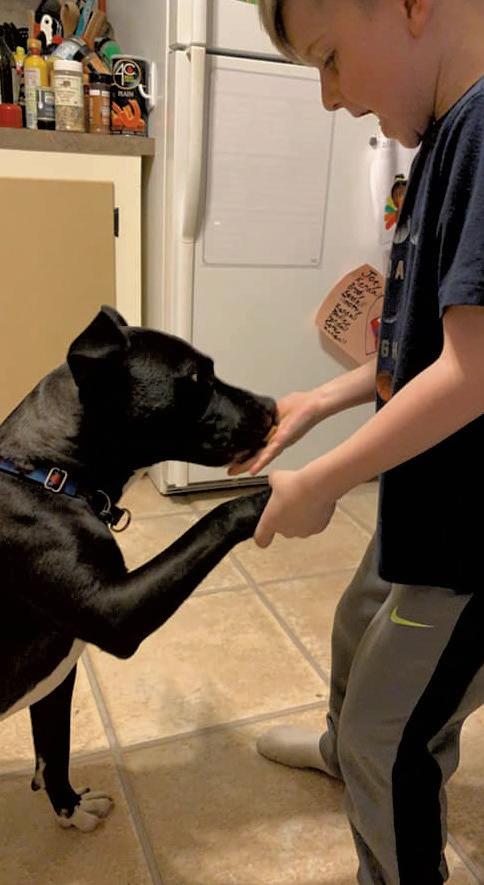






In normal times, Vermont Family Network’s Puppets in Education program brings puppet shows about topics like bullying and autism to schools and local organizations. Now, to help children cope with the worries they may be feeling due to COVID-19, the organization has released an online show about anxiety, geared to preschoolers through fourth graders. The home edition was created by Puppets in Education program manager Sarah Vogelsang-Card, with the help of her husband and son, and filmed in their living room. To watch the show, visit the Vermont Family Network channel on YouTube or find a link at vermontfamilynetwork.org.

Thanks for sharing your photos with us using the hashtag #instakidsvt. We loved this picture posted by Emily Jennings of West Newbury showing her 4-year-old daughter Jojo exploring the family’s backyard. “She said she wanted to ‘touch the top of the trees,’” explained Jennings.
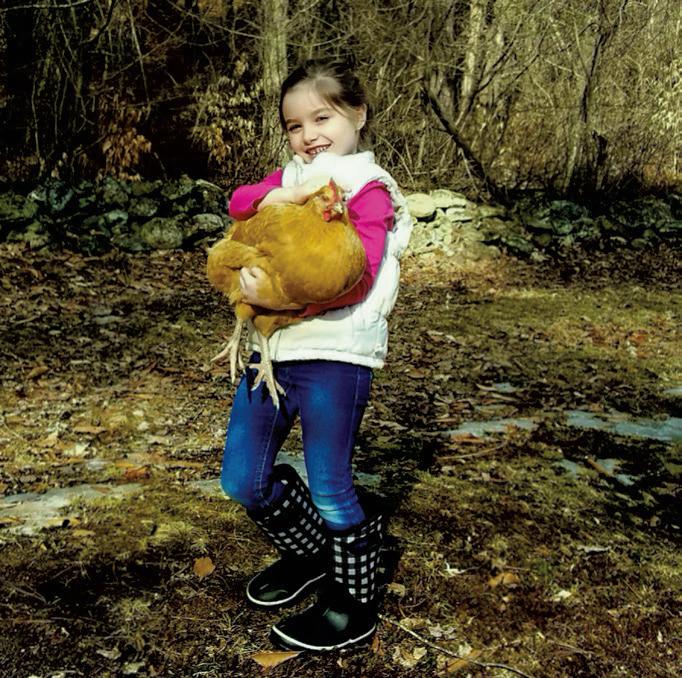
Share photos showing what your family is doing to get through this time.
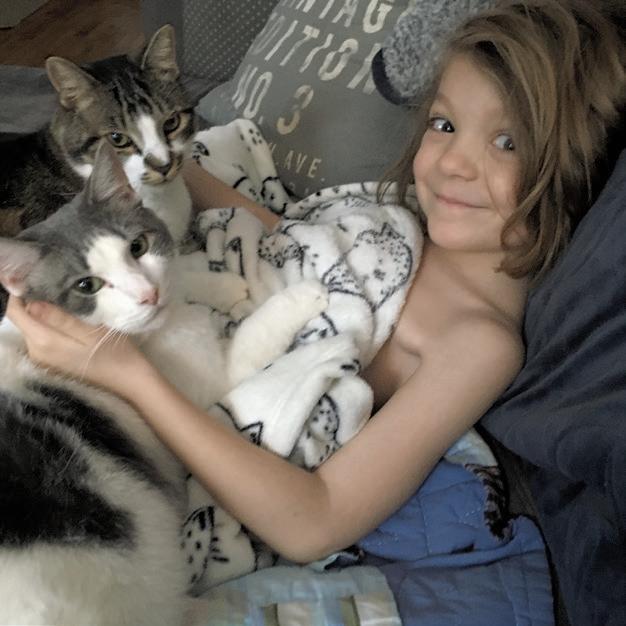

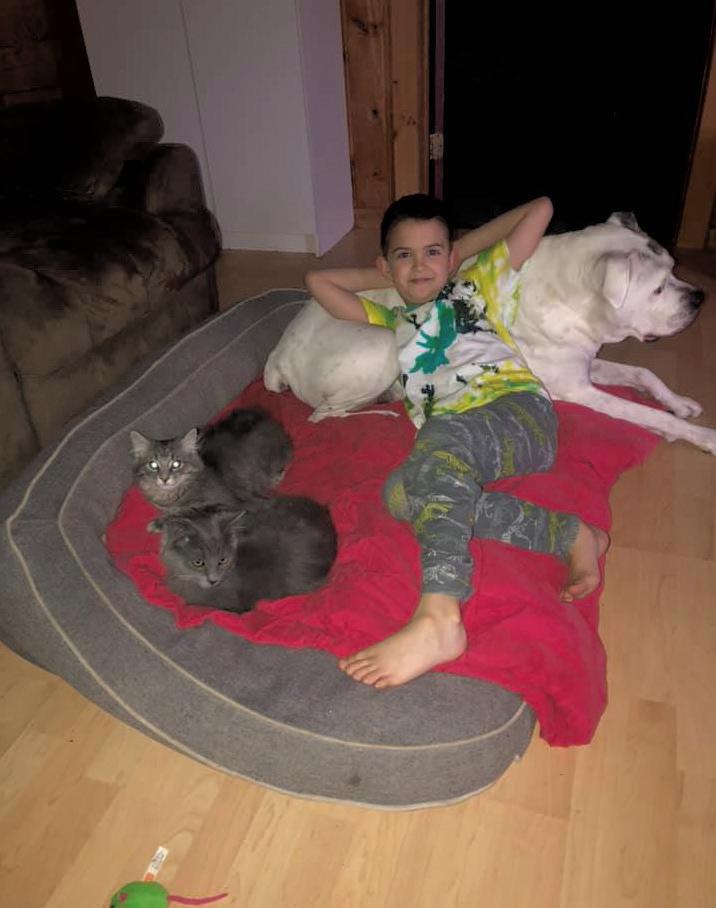






HERE’S HOW: Follow @kids_vt on Instagram. Post your photos on Instagram with the hashtag #instakidsvt. We’ll select a photo to feature in the next issue.
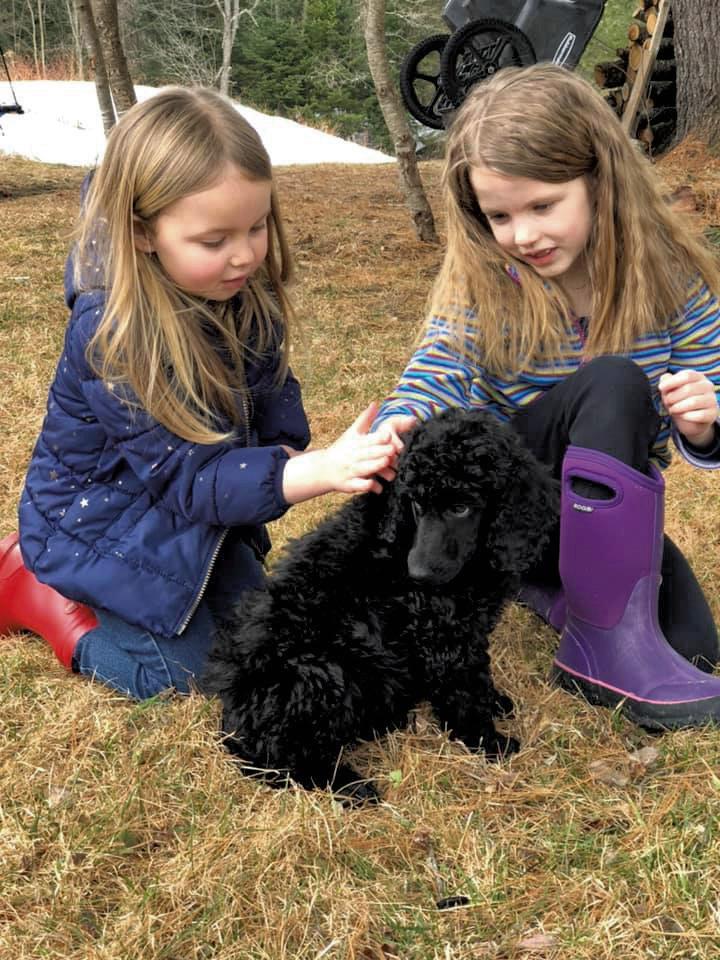
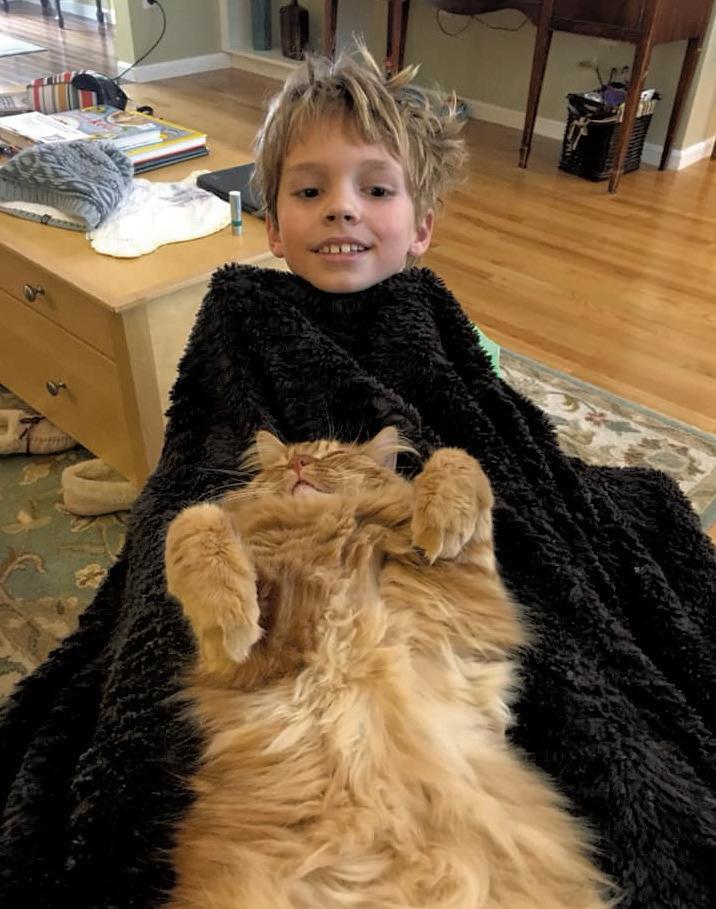

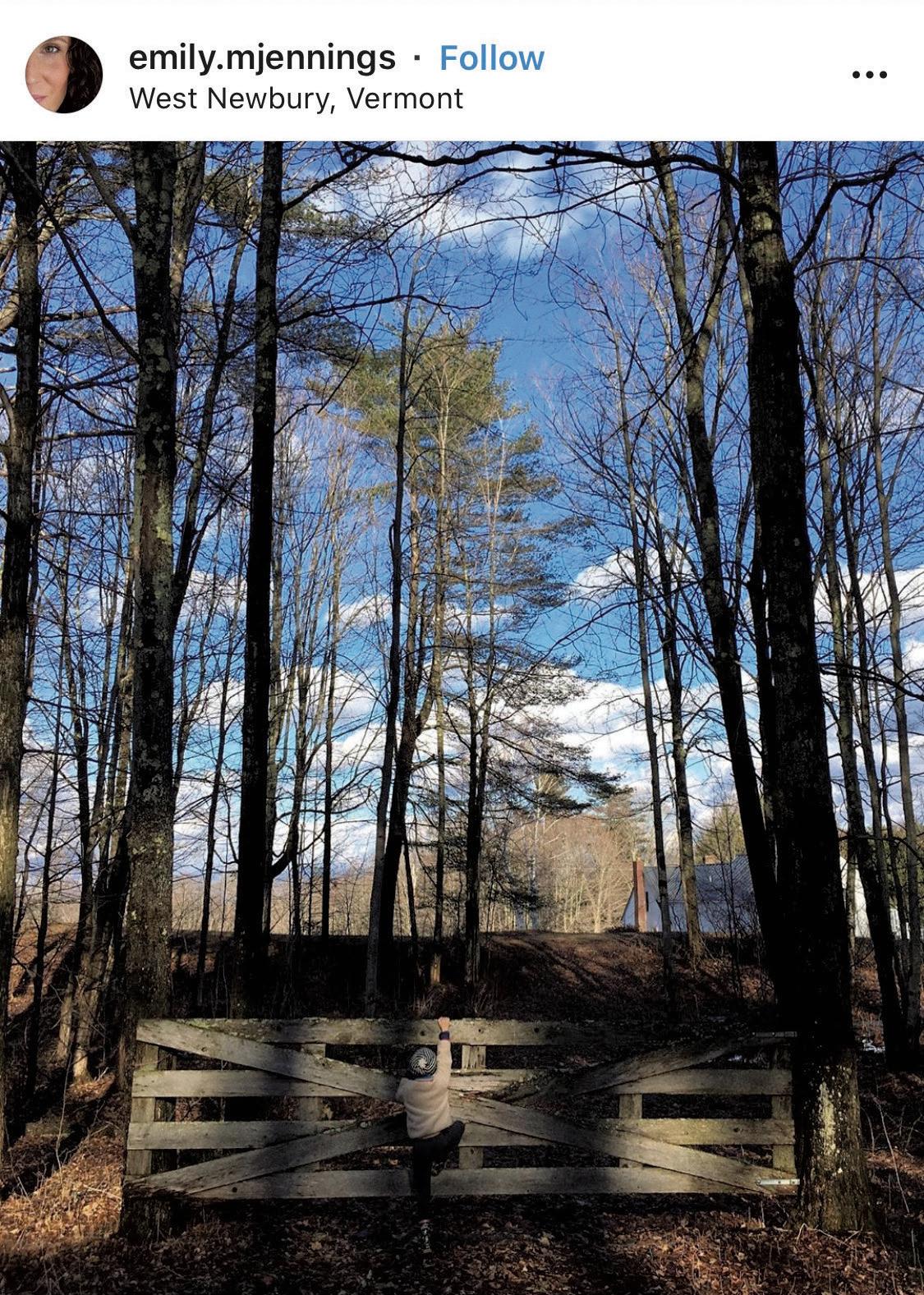
Pets are providing families with much-needed support during this time. And data suggests there was an increase in animals going to foster homes in March. We asked our Facebook followers to share photos of their kids and animals enjoying each other’s company. Find their cute photos below.
Cafeterias may be closed, but schools are still serving meals to students. In the Barre City Elementary and Middle School kitchen, a small crew prepares meals for kids in Barre City and the surrounding Barre Town. Food service supervisor Ashley Young says almost 600 students are signed up to receive breakfast and lunch — about a quarter of the student population. Four school buses deliver the packaged meals to around 20 locations on Mondays, Wednesdays and Fridays. Each student receives seven breakfasts and lunches per week. Friday deliveries contain meals for the weekend. Young was amazed by the enthusiastic response when she put out a request for volunteers to help load buses, hand out meals at designated locations and home-deliver food to families who aren’t able to pick it up. She’s secured around 50 volunteers, with a roster of substitutes. Her biggest challenge has been making sure that all families who need food are signed up. Every day, Young hears from parents and caregivers about how important the curbside food service is to their families. In a time of uncertainty and fear about illness, Young says she’s “humbled” by how the community has rallied to feed its kids. —BAS
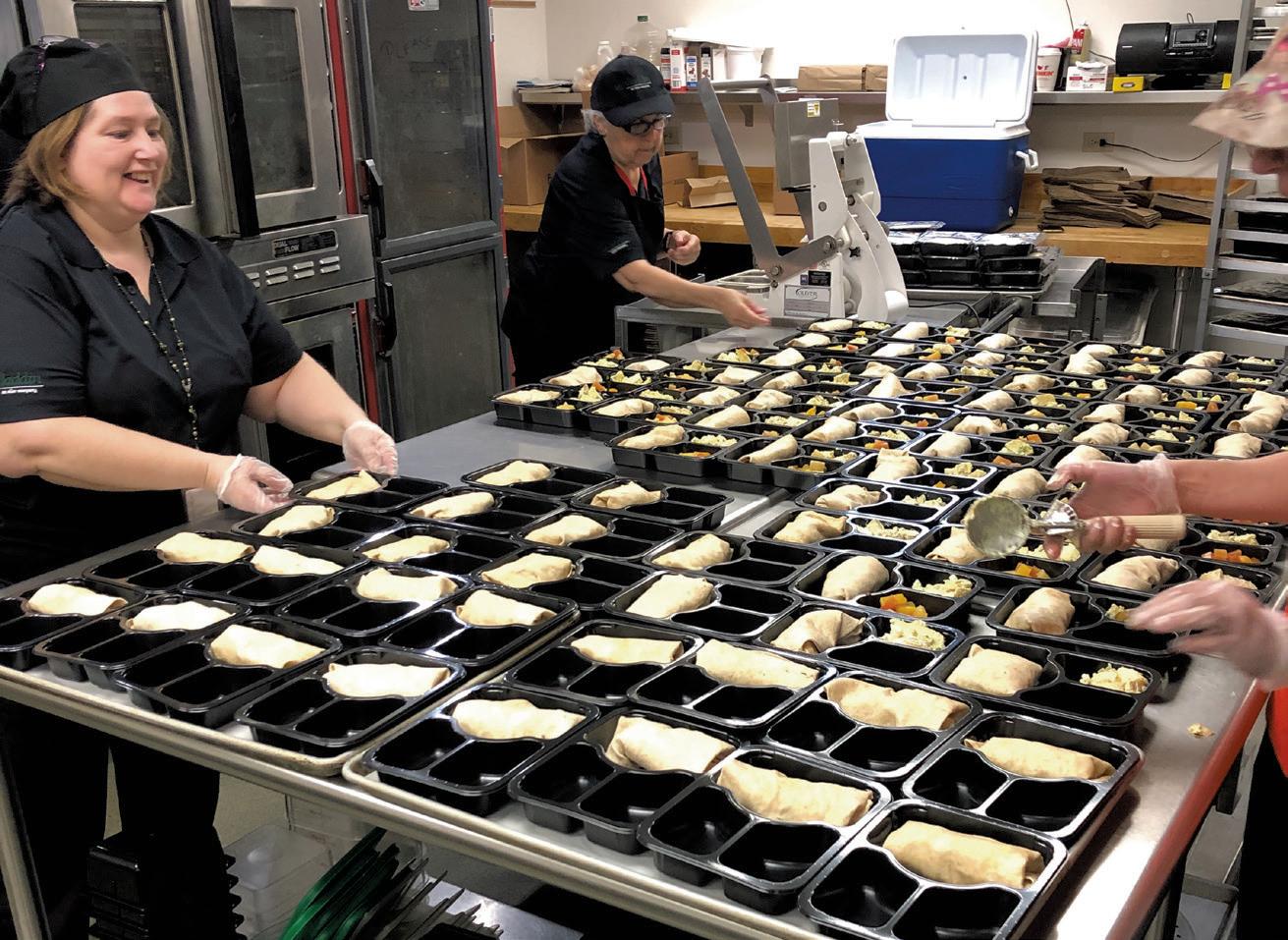
To sign up for school meals, inquire with your school district or supervisory union.
When school buildings closed for the year, Shelburne Community School art teacher Pete Boardman wanted to find a way to bring the community together — without actually coming together. So Boardman, who recently moved to the Davis Park neighborhood behind the school, created a CURBSIDE ART GALLERY in his front yard. Boardman says he hopes it will give kids an incentive to create art at home and also encourage families to take walks together to peruse the gallery. Boardman also created a series of videos on YouTube, “Mr. B’s Art Hive,” with drawing lessons for students.
“As an art teacher, I am brainstorming new and creative ways to navigate this situation so that all my students can have access to art supplies and community art projects like this one,” he said.
Other Vermonters have tapped into their creativity in di erent ways. In Winooski, residents are sharing bears — of the stu ed animal and drawn variety — in their windows, cars and yards, so that local kids can go on a “bear hunt.” And on Briggs Street in Burlington, across from City Market, Onion River Co-op’s South End location, an impromptu poetry gallery and story walk featuring My Many Colored Days by Dr. Seuss has popped up to spread sweetness to passersby. —AN

In the absence of in-person shoppers, some local retailers are finding resourceful ways to stay afloat. Kidstructive Fun, a toy store with branches at the University Mall in South Burlington and in Plattsburgh, N.Y., is o ering customized TREASURE BOXES for kids. Parents can select a theme, age range and size for the box online. Then, the store’s personal shoppers will pack it with an array of items, from craft kits to Matchbox cars. Easter basket-themed boxes are also available. The new o ering is “an e ort to help parents provide fun activities for their kids to do while everyone is staying at home,” said store owner Mary Raiche. “It’s always exciting to receive something new, and we try to pack every box with lots of play value for many hours of fun.” Other local stores — including Turner Toys & Hobbies in Essex Junction, Phoenix Books in Essex Junction and Burlington, Homeport and Common Deer in Burlington, Jamie Two Coats’ Toy Shop in Shelburne, and Woodbury Mountain Toys in Montpelier — are also o ering online or phone ordering and curbside pickup or delivery. It’s a good thing, too; families will be looking for puzzles, games and outdoor toys to provide both amusement and distraction in the days ahead. —AN

Find Kidstructive Fun’s treasure boxes at kidstructivefuntoys.com. Delivery in Chittenden County is available for $5, or pick up curbside at the South Burlington store. Contact Mary Raiche at mary@ kidstructivefun.com or 495-5916 for more information.
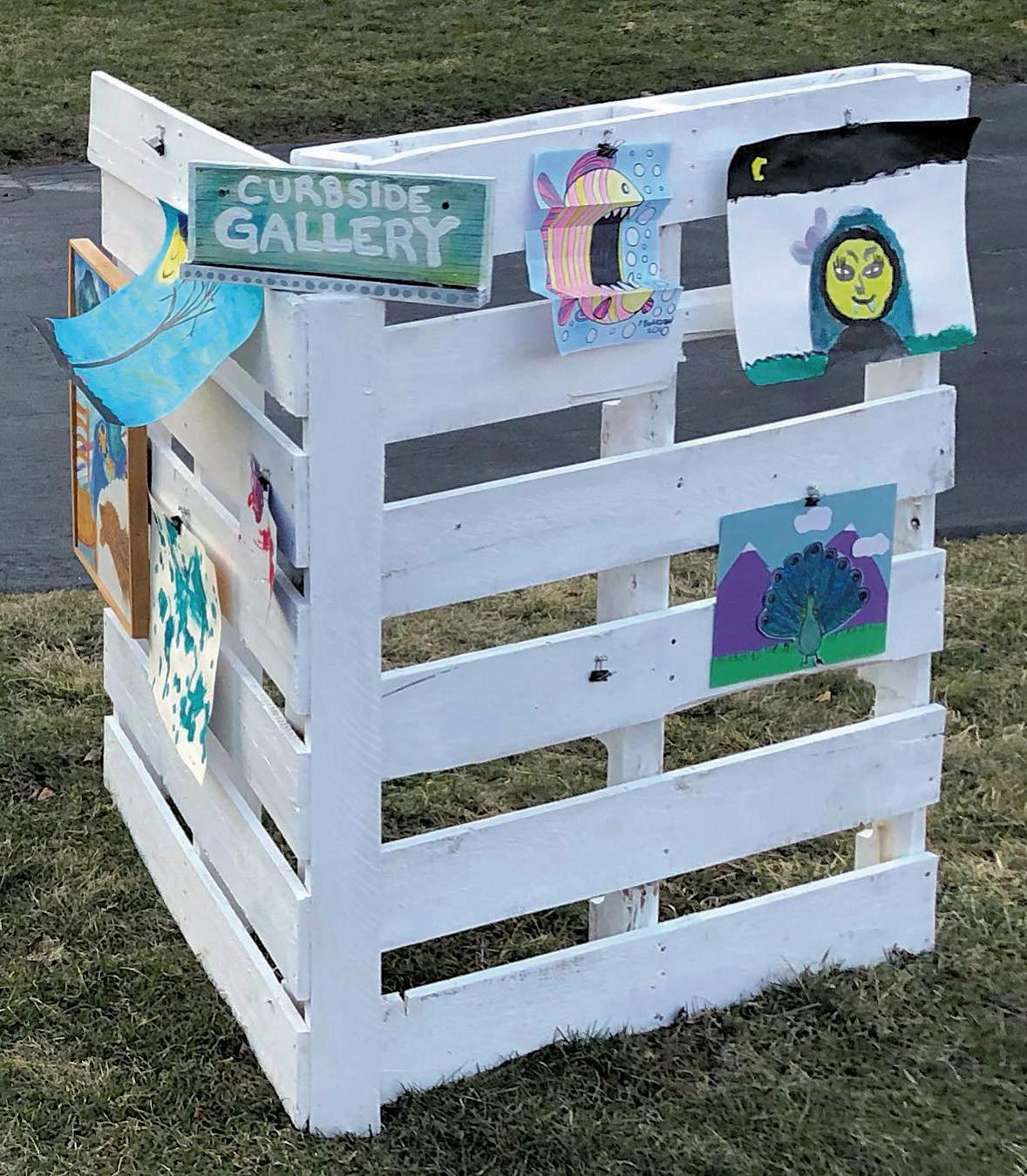

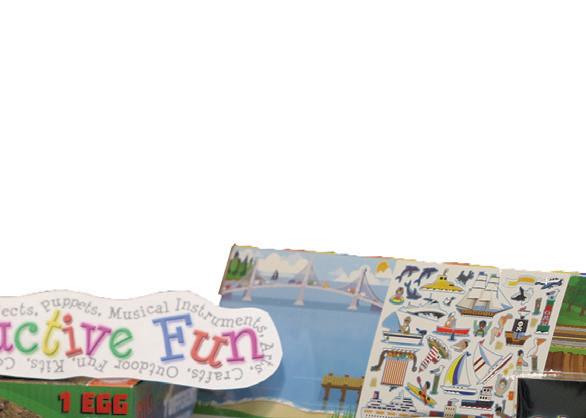

On the seventeenth day of our isolation due to the global pandemic, we went for a long walk to a field near our home. At the field, a woman and a man passed us, staying distant, like we have learned to do nowadays.
Our 2-year-old daughter held my husband’s hand and started growling her “dinosaur growl” in the strangers’ direction. “Daddy, I tried scaring them away,” she explained.

During the past three years, as an introvert stay-at-home parent, I have done my best to offer our daughter various chances for social interaction. Against my own inclination, our weeks have included story hours, music lessons, and yoga and gym classes. I have felt proud to witness my daughter’s growing comfort with meeting new people. Suddenly, all those daily contacts have been taken away. Left are long family walks in the woods and video connection.
On our way back home from the field, I told our daughter: “We shouldn’t scare people away. They all have to stay at home and they can’t meet their friends, just like us. So, we should be extra kind now. Can you see those two people walking toward us? Why don’t you try waving and saying hi this time?”
I could see our daughter concentrating. Once the people passed us, she turned around and waved and yelled to them: “Hi!” The woman and the man returned the wave. Our daughter smiled wide. We will start there. K
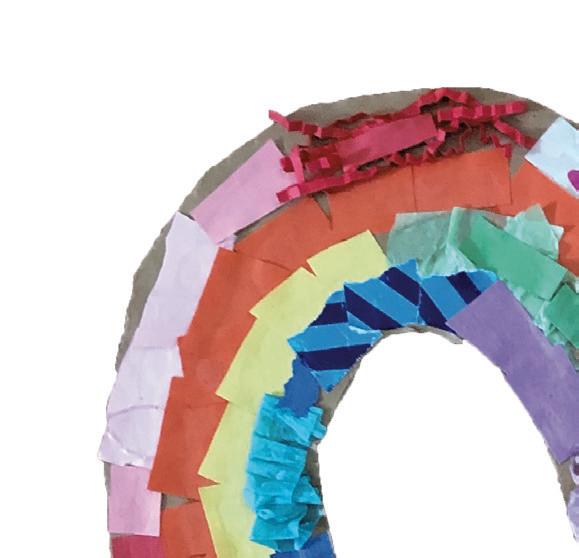
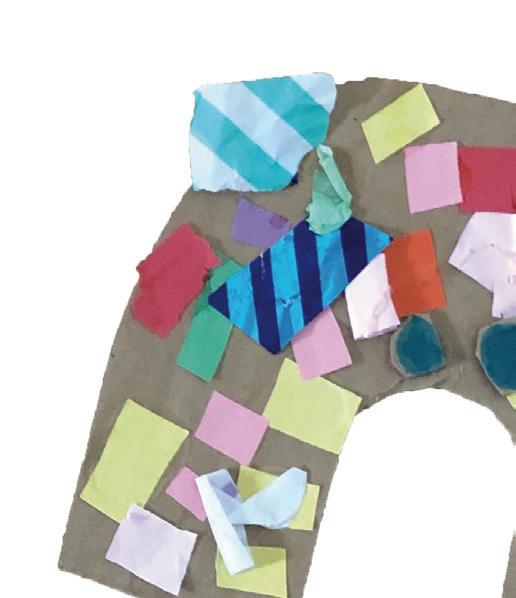
We are parenting at a time when magazines, blogs, Pinterest, Instagram and YouTube are filled with crafty ideas for keeping our kids entertained and educationally enriched. It can be inspiring — and overwhelming. I enjoy doing projects and crafts with my kids, but I find pulling back and keeping it simple can yield lovely results. And despite what your online browsing might suggest, crafting doesn’t require glitter (aka microplastics that pollute the environment). Here are six low-waste and low-cost ideas for sparking creativity and open-ended play.
Our house, like many, has a stock of puzzles and games. The other day I wanted to play a childhood favorite, mancala, but we don’t have it. I realized we could make our own board with a clean egg carton and two bowls. Make your own puzzle by pasting a photo or piece of art onto cardboard and cutting out shapes as simple or as complex as your imagination and ability allow. Matching and memory games are also fun activities to create and play. Or take it to the next level and make up your own game. Use bottle caps, small toys or your own Candy Landstyle figures to travel around the board. Try this at your own risk, though. My 5-year-old developed her own game that I never quite understood and, therefore, continued to lose!
MEREDITH BAY-TYACKgo on a scavenger hunt. Look for circles, for blue things, or for sparkly things, and put them in the tube. Ribbon wands are a favorite of ours and are easy to make: Gather ribbon, yarn or even thin strips of scrap fabric. Staple or glue them to one end of a tube. Add more decorations like washi tape and paint — or not. Swinging the wand around makes the ribbons bounce and dance no matter how artfully designed it is. Bonus idea: Close o one end of a tube with masking tape or a small cloth and rubber band. Fill with small items like caps, hard plastic (that parents safely cut up) or even small rocks. Then close the other end, and you’ve got a music shaker.
3. Build fairy houses and cities
• Check out artcampla.com/blog.
• Read Art Workshop for Children: How to Foster Original Thinking With More Than 25 Process Art Experiences by Barbara Rucci.
• Visit the websites of locally operated Owl Feet studio in Charlotte (owlfeetstudio. com) and Wildflowers Studio in Essex Junction (wildflowerstudiobtv.com).

Plan out, then glue together to make a cardboard face. Make it a self-portrait, a silly imaginary character or the family pet. Add crayons or paint after it dries for a three-dimensional masterpiece.
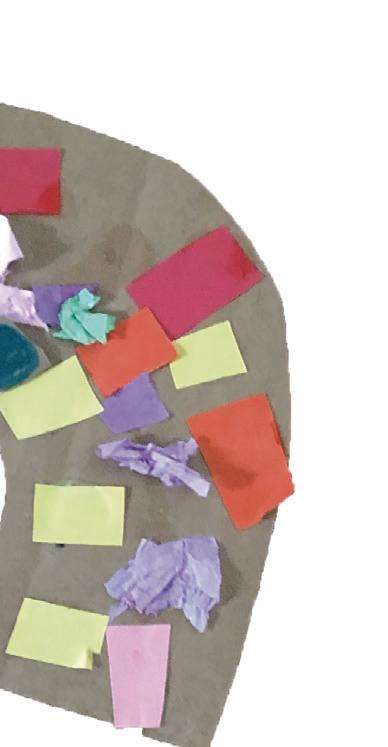
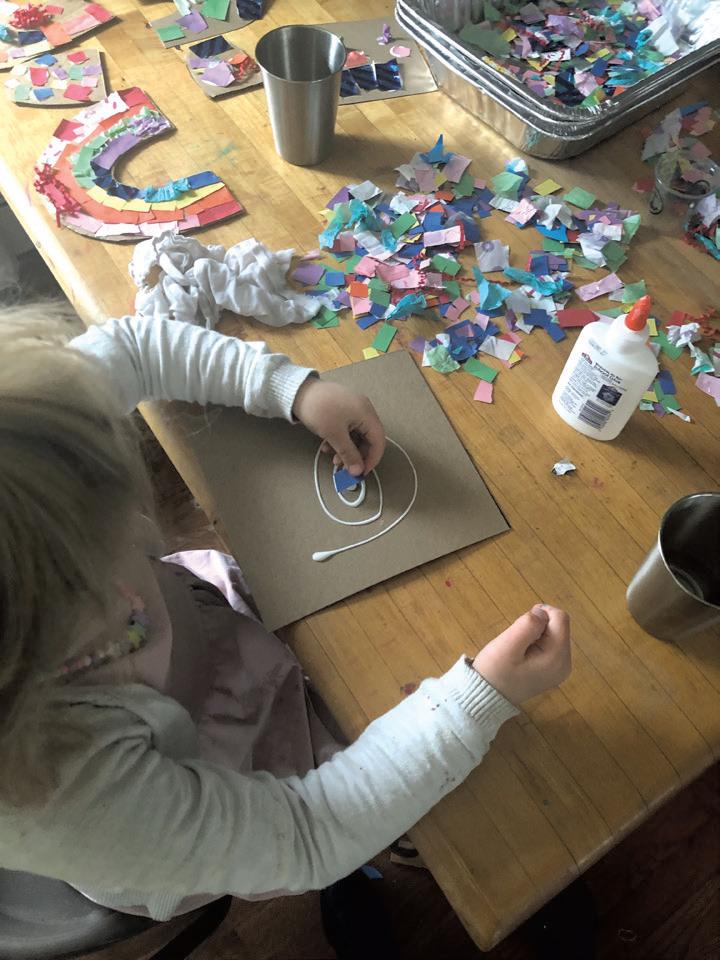
5. Play dough
We make our own play dough because it’s fast and simple. Sometimes we add color, sometimes cinnamon or raw cacao so it smells nice. On days when we need something extra, we add a drop of essential oil and put on classical music while we create with the dough. (Research what oils are kid-safe.) There are many play dough recipes online that call for a few basic ingredients. We use a baking soda and cornstarch-based recipe from the website makeandtakes.com because it is glutenfree (I have celiac disease). Store dough in a glass jar in the fridge for future play.
6. Loose parts play
Binoculars, spy glasses and wands, oh my!
Toilet tissue and paper towel rolls are the ideal size and shape for a variety of crafts. Tape or glue two together, add a string and decorations, and go birdwatching with your new binoculars. Save a piece of plastic film and use a rubber band to attach it to one end of a tube. Now hike around your neighborhood or house and
Building cities and fairy houses is a classic “reuse your recycling” idea for good reason. The level of detail depends on kids’ ages and parents’ willingness to take on some crafting. I happen to enjoy getting in there with scissors and other supplies to transform old creamer cartons and pasta boxes into buildings. Add a few small Lego figures or other small toys, and the playscape really comes alive. A simpler idea with a similar outcome is to lay out a flattened box or large piece of cardboard and draw roads and houses. Add some toy cars and blocks or magnetic tiles.
4. Collage with magazines, paper, old art and cardboard
The only essential ingredient in creating a collage is glue or tape. All other methods and materials are up to the


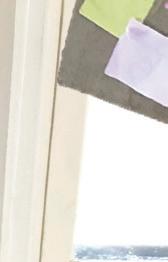



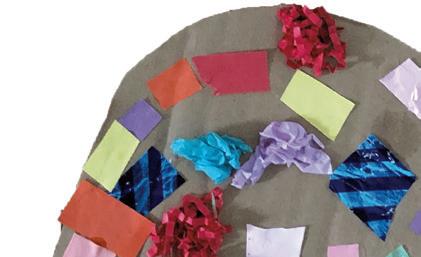
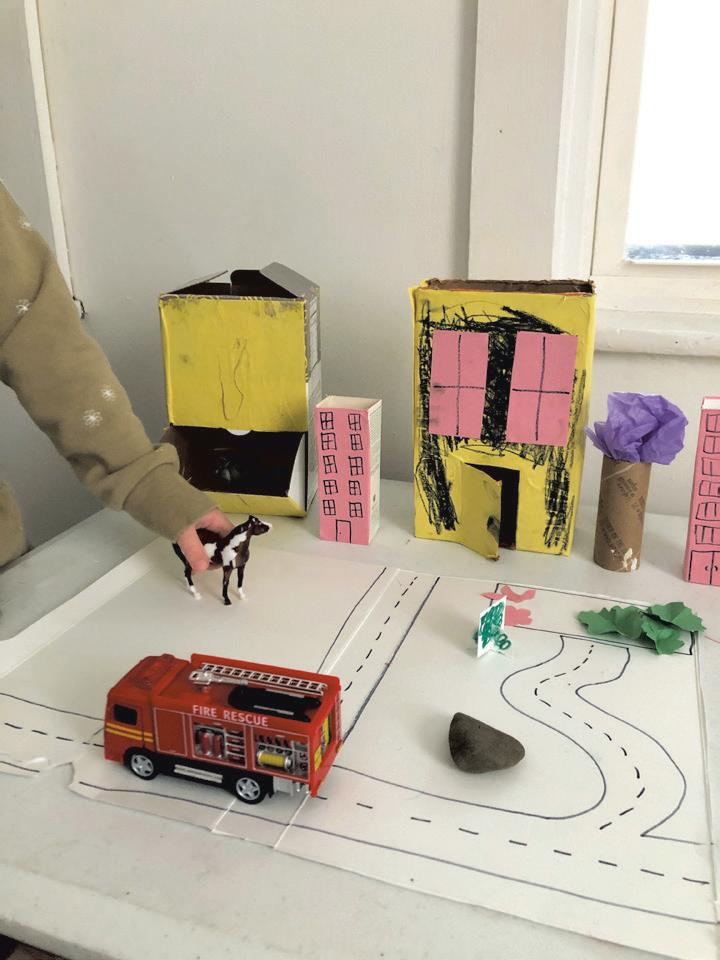
maker. If infinite combinations make your eyes cross, try these three methods to keep it manageable. If a blank piece of paper feels intimidating, start with a newspaper page, photograph or piece of art. Then layer ripped paper, scraps of fabric, yarn and, if you’d like, paint on top. The second collage technique requires a bit more preparation but yields lovely results. Cut a rainbow shape out of cardboard. Then, cut or rip up colored paper, magazines and older art in all colors. Glue the collage in a rainbow pattern. The e ect is exciting for kids and adults. Decorate both sides, and hang your artwork from the ceiling or in a window. Finally, try this idea inspired by art educator Barbara Rucci: Start with a circle of cardboard, then cut a variety of smaller shapes, also from cardboard.
Loose parts are collections of small items that are easy for little hands to grasp. They can be mixed up, lined up, arranged in patterns and used in countless open-ended ways. I first learned about loose parts play from parents who shared beautiful wooden sets of rainbow-hued rings, coins, cones and other shapes. Turns out any collection of small items can be used in a similar way. Some favorites of ours are corks, bottle caps, marbles, smooth rocks, sticks, acorns and felt balls. There are two aspects to loose parts: the objects themselves and their setting or application. Loose parts can be laid out in careful concentric circles like a mandala. Set out small bowls and cups and watch kids open a restaurant. Pair loose parts with play dough or kinetic sand, and imaginary worlds emerge. Simply let the small pieces guide your kids’ imagination.
Quick tip: One way to kick-start independent play if kids don’t seem interested is to sit down for a few minutes and play along with them. Depending on the day, I may relish the opportunity to get silly or I may groan that I have to pause my other projects, but it almost always works to get my kids engaged.
Left: Collage is an easy and adaptable activity Below: Build a tabletop city with recycled materialGOOD NATURE BY HEATHER FITZGERALD
Even in a normal year, by the time April rolls around there’s an urge to emerge from winter hibernation and be in the sun and feel some warmth on your skin. Now, at this strange moment in history when we’re all trapped in our homes, this urge appears even stronger. If my Facebook feed is any indication, socially distanced hiking is one of the few remaining options available to us for getting out of the house.
Once you get out there, however, you’re often confronted either by signs indicating closed trails or by the reason for those signs: mud.
Mud season is the time of year when the frozen ground thaws from the top down, leaving melting snow and early spring rains seeping into the deeper frozen ground below. The Federal Highway Administration says that, on average, the maximum freeze depth in Vermont is about a meter. Mud season can start in March in the warmer parts of Vermont, but at higher elevations, it can last into June. This year, it felt like it got o to an especially early start, but another thing that is characteristic of mud season is the fluctuation — warm one day, cold and snowing the next.
I think it’s safe to say of mud season: You know it when you see it. If your lowelevation neighborhood trail seems fine, it probably is. It’s also important to be mentally prepared to turn around as soon as you encounter a muddy section of trail. A few weeks ago, I went on a walk in a flat place. It was mostly fine, until I got to a stream and slid down to the water, bringing a few very large chunks of the bank with me (one chunk for each footstep).

Continuing on felt like eating a second brownie. I knew in the back of my mind that I shouldn’t, but I persisted. I still feel
a little guilty about my impact on that stream bank. If I were able to do it again, I would turn back at the first tentative step that revealed the mushiness of the slope.
It’s worth pausing to think about what’s going on in that mud. Plants that live through the winter usually have roots that grow below the frost line. Many insects, frogs, snakes, turtles and worms burrow below the frost line, too. But at least one of Vermont’s frogs, the wood frog, can survive being frozen. And scientists have found that microbes, small microorganisms like bacteria and fungi, are active even in frozen soil.
If you encounter mud in a place that doesn’t seem ecologically fragile — that wet corner of your lawn, maybe — one way to get through mud season is to embrace it in all its mucky glory. Plus, maybe you can count it as homeschooling?
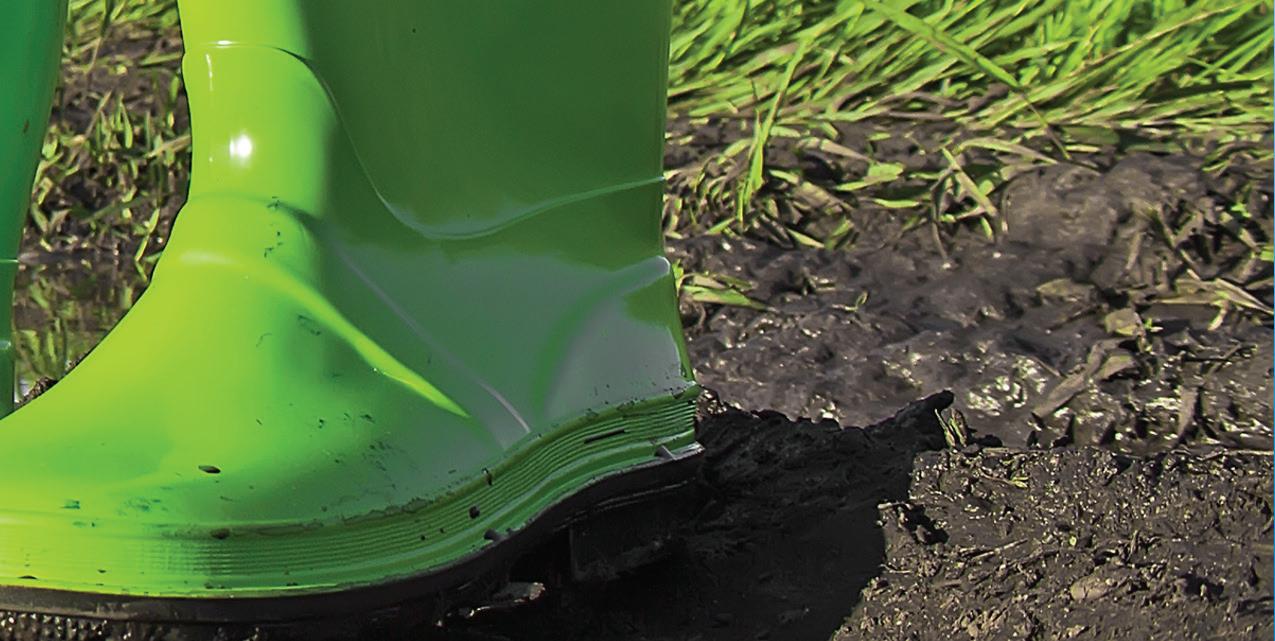
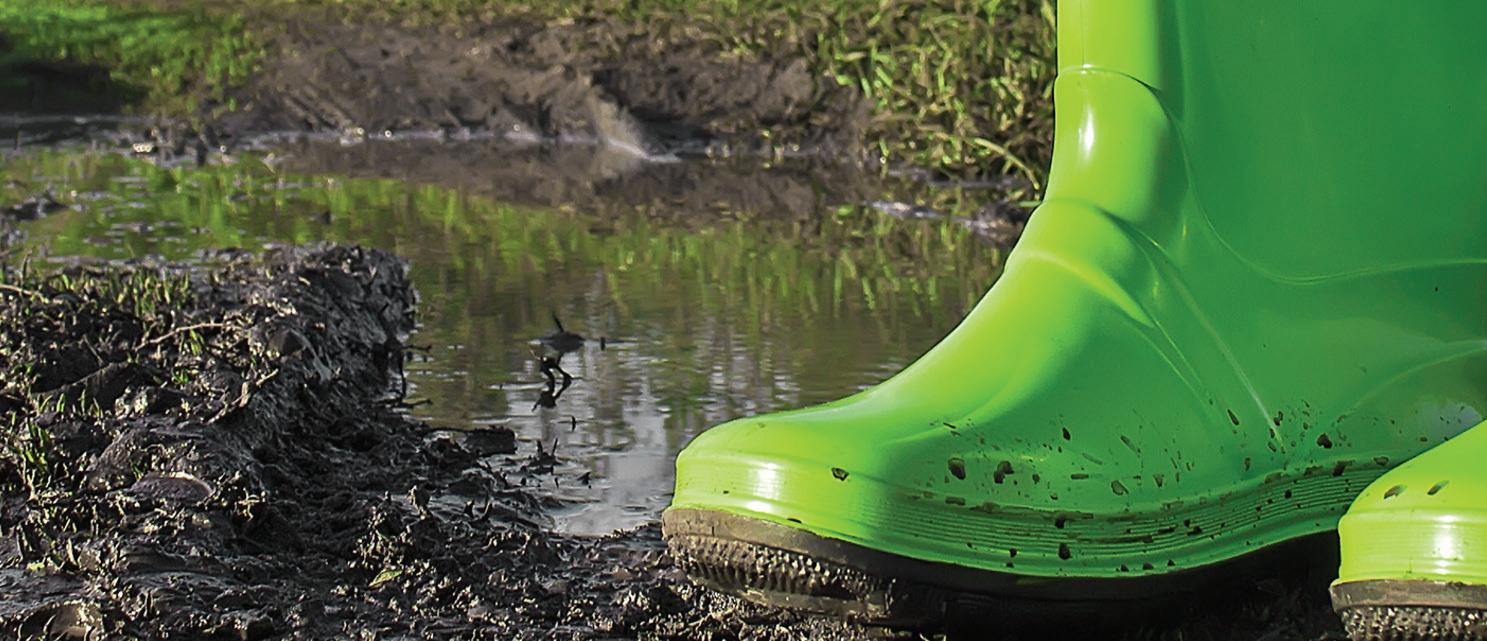

Fiona Danks and Jo Schofield, authors of Nature’s Playground: Activities, Crafts, and Games to Encourage
Children to Get Outdoors, o er many variations on the mud sculpture theme: Make mud castles, pies or cakes — or, if the clay content of your mud is high enough, sculpt it into bowls and let them dry. Make layers with di erent colors and textures; add twigs, stones or nuts. The authors also suggest drawing with a stick, either directly in soft mud or by dipping it in mud and drawing on a rock, or coating flat surfaces with mud. Mud with high clay content will dry into an intricate pattern of cracks. And, of course, you can make muddy hand- and footprints on rocks, paper or each other.
If this last idea sounds terrible to you, it might be an opportunity to teach your kid (or yourself) how to get messy. I can still remember running outside to dance in a huge thunderstorm that broke an excruciating heat wave during my college orientation. I think it was one of the first
times I consciously decided, I want to get messy. I was, and remain, kind of fastidious, and part of me wonders, If I’d had

On March 25, the Green Mountain Club issued this recommendation about hiking in the time of coronavirus: “Under Governor Scott’s new ‘Stay Home, Stay Safe’ order for Vermonters, you may be wondering about outdoor activities. During the press conference regarding this order, the governor endorsed getting outside for exercise and fresh air. Please just do this locally (not traveling to the Long Trail or other trail systems), with members of your own household, and stay 6’ or more away from anyone you may encounter. We recommend taking walks right out your door and exploring your neighborhood on any trails, dirt roads, or sidewalks you have available. Trails and parks in other states have been overwhelmed with use and had to close because people were not practicing correct social distancing. If we all enjoy the outdoors locally and responsibly, we may be able to avoid that outcome in Vermont.” This is an evolving situation. Visit greenmountainclub.org for updates.
more muddy, messy experiences as a kid, would I be a little more easygoing? Some research suggests there are benefits to messy play, including increased creativity and willingness to take risks.
Also, don’t forget that April is a fabulous time to look for amphibians. If you have a vernal pool near you, keep your eye out for the first warm, rainy night this month and head there around dusk. I promise you, it is a glorious experience. If you aren’t sure where your closest vernal pool is, you can head to any wetland, or just listen for frogs and follow the sound.
Heather Fitzgerald teaches field ecol-

ogy and environmental science at the Community College of Vermont and the University of Vermont.
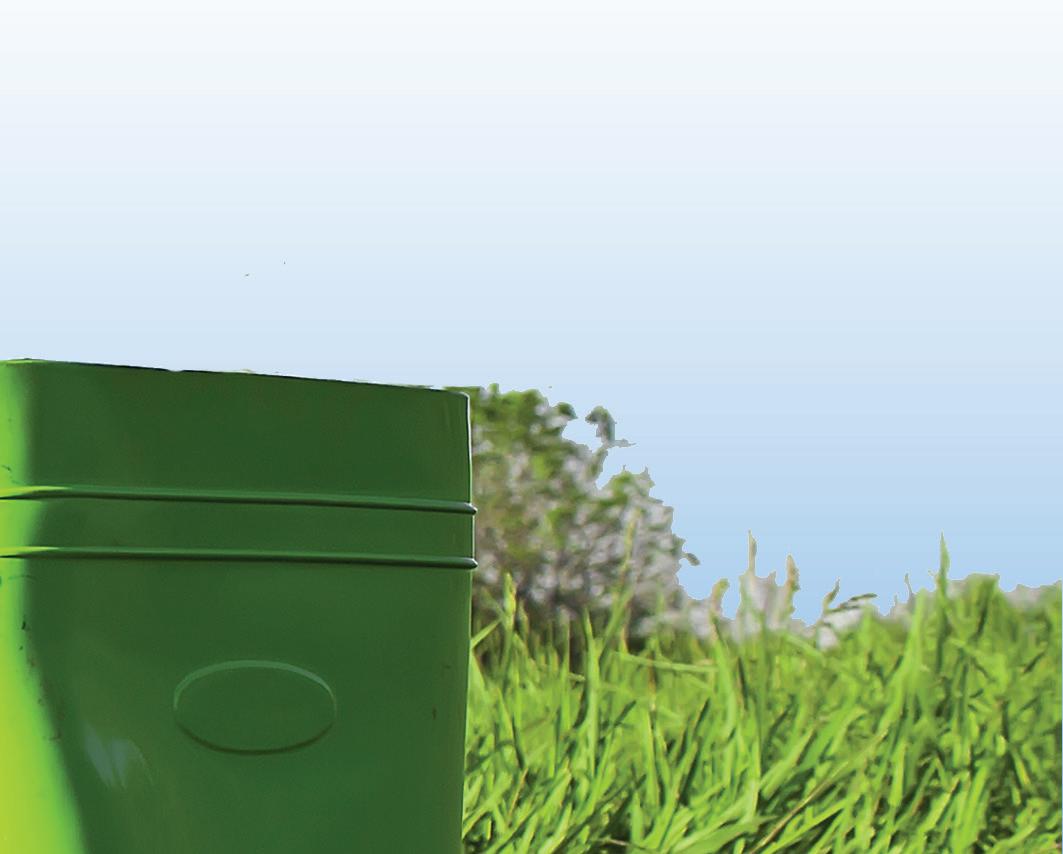
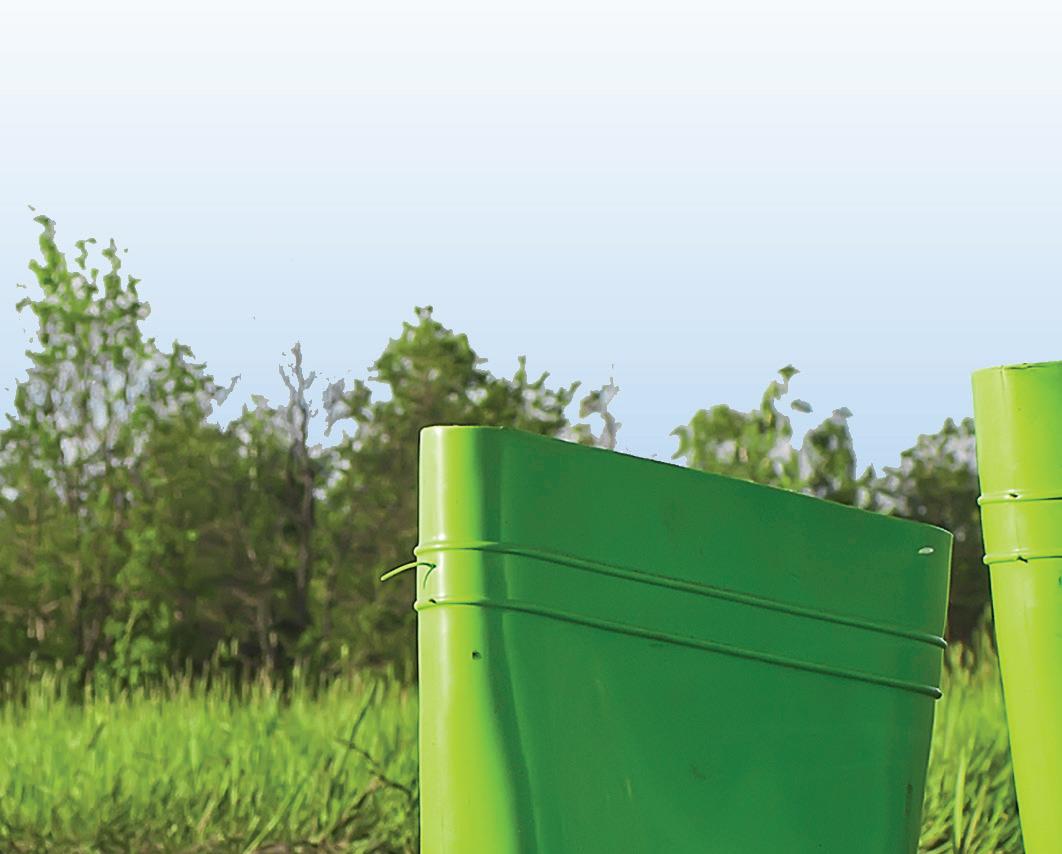
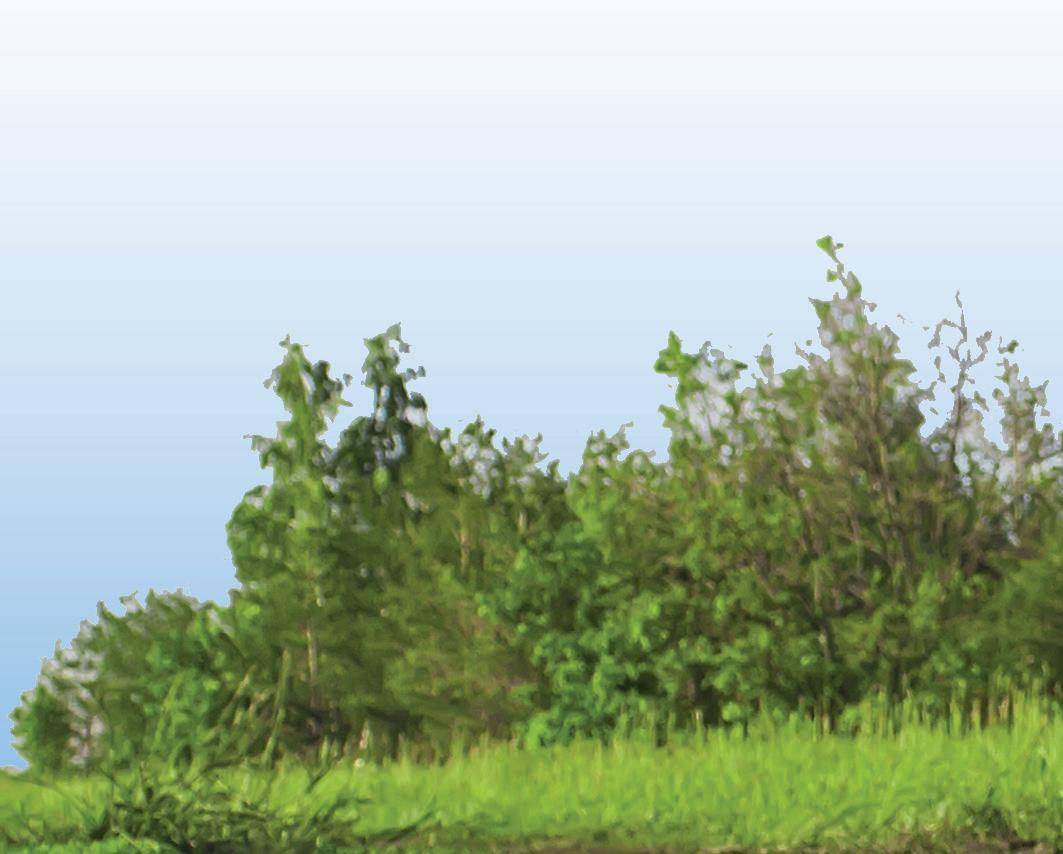

During World Wars I and II, people planted victory gardens in backyards and public parks. Originally organized as an effort to feed hungry people in World War I-devastated Europe, the National War Garden Commission — spearheaded by wealthy philanthropist Charles Lathrop Pack — encouraged Americans to sow idle land. Sprouting up in school grounds and vacant lots, these gardens provided fresh vegetables, fruits and herbs, but also strengthened community morale during challenging times. In 1942, an estimated 15 million American families planted gardens. This spring, sow your own victory garden. Whether you till a sizable backyard plot or simply tend a flowerpot
• Biodegradable peat pots — or improvise with individual yogurt containers or plastic cups
Potting soil
• Seeds
• Craft or popsicle sticks to label the seeds planted in each pot
• A clean spray bottle to spritz your seeds — or water gently using a watering can
• Peas are traditionally the first seeds to plant when soil has thawed enough to mix in a little compost. They come in different varieties, from snow peas to shell peas to sugar snaps. To skip the trouble of erecting a fence for this vining
of fresh basil, those first green shoots will raise your family’s spirits and remind you that spring is coming.
April isn’t too late to start seedlings on a sunny windowsill. Cucumbers, beans and pumpkins are easy to start indoors. Herbs are also perfect for small pots. Chives, thyme and basil may be transplanted outside after all danger of frost has passed. Or just harvest them from pots all summer. As an added benefit, herbs give a savory fragrance to your home.
Planting seeds is simple. Follow individual packet directions to find out how deep to sow, water daily and keep in a sunny spot.
Order supplies by mail from two Vermont companies: High Mowing
plant, buy bush peas. These brushy plants won’t need extra support.
• Radishes are quick growers and easy to harvest.
• For summer salads, sow a few rows of lettuce greens. Experiment with miniature heads of Tom Thumb butterhead, salad mixes or tender spring kale varieties.

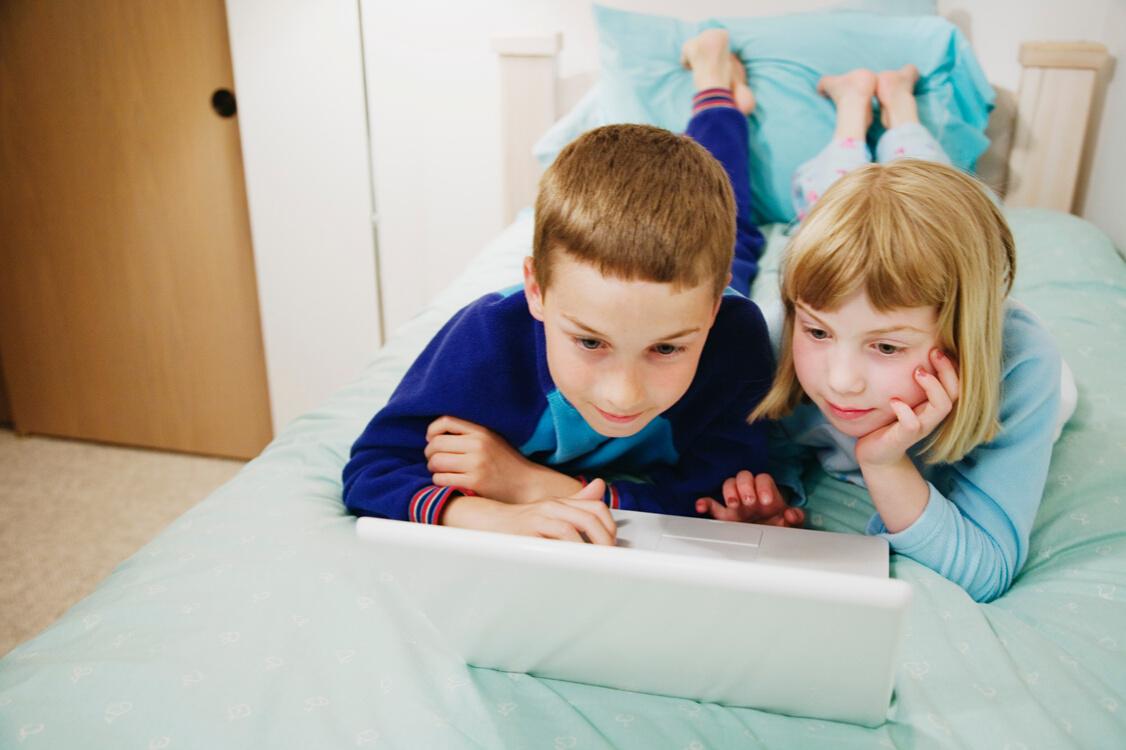
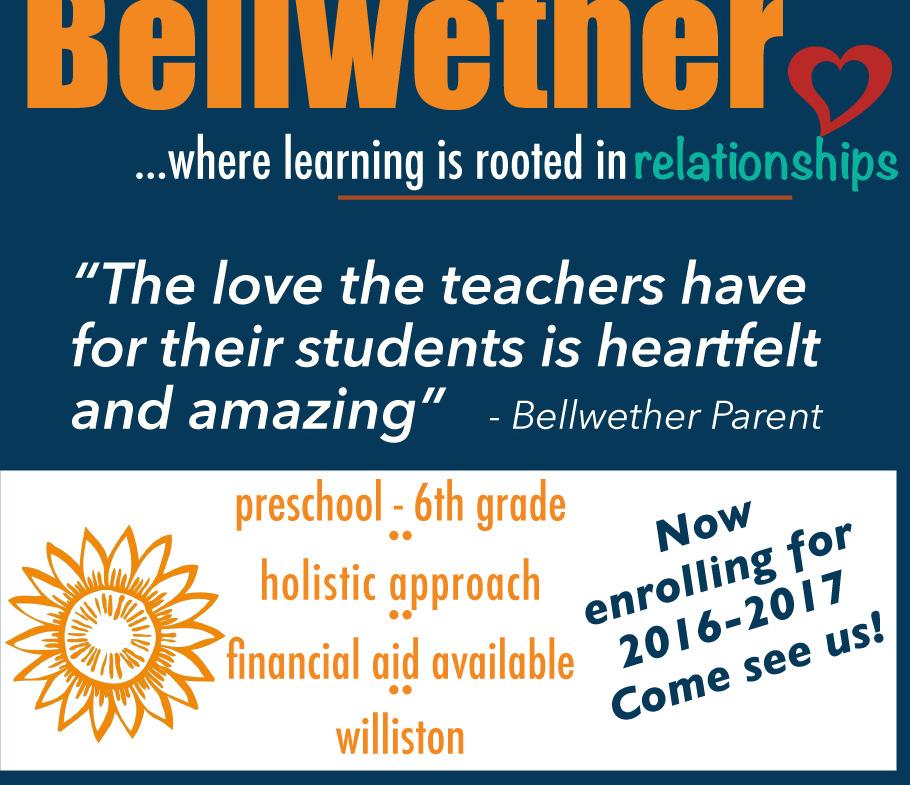
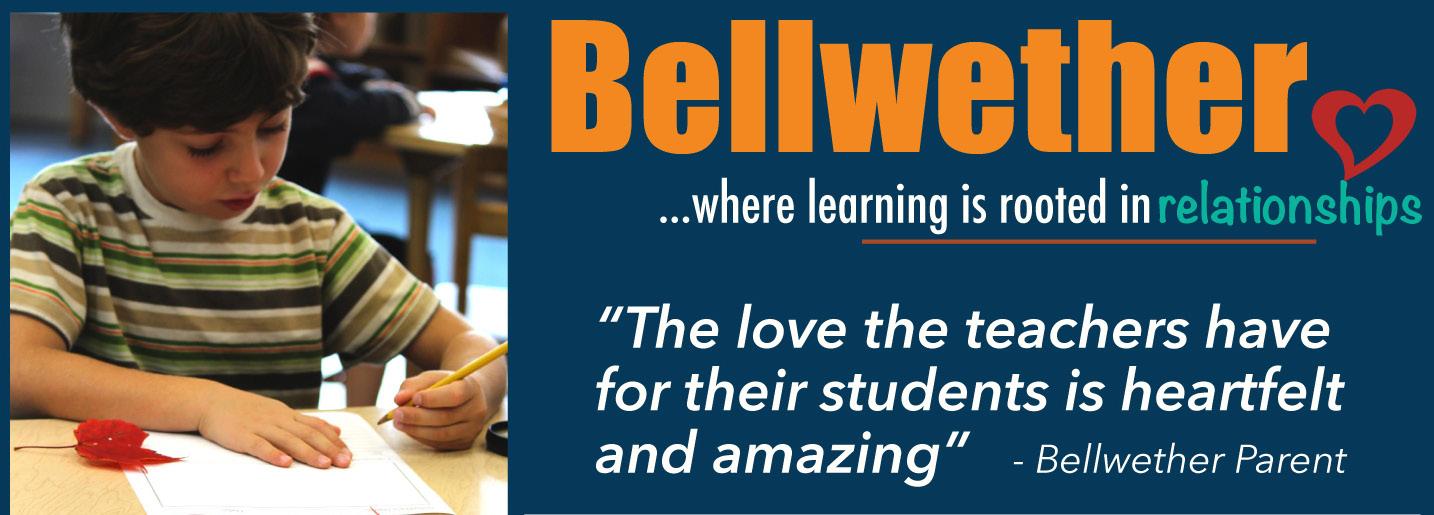
• Essex, N.Y., writer Kate Messner (katemessner.com) authored Up in the Garden and Down in the Dirt Christopher Silas Neal’s illustrations show junior gardeners how a lush garden has a hidden world deep down in the earth.
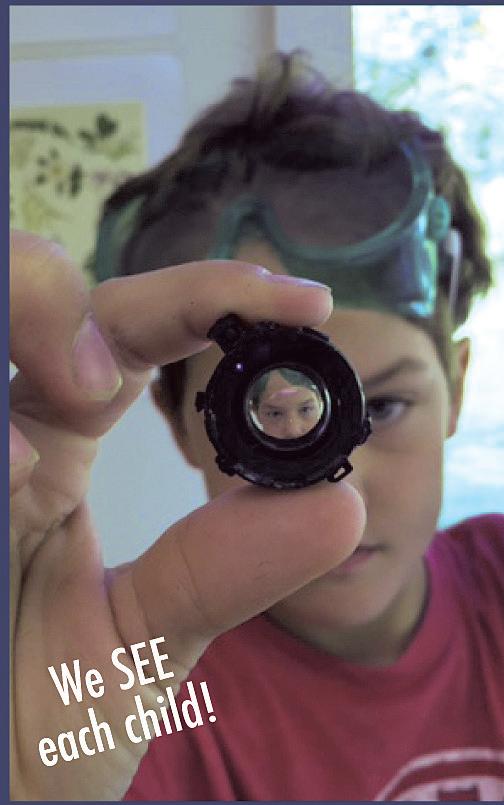
• For the youngest gardeners, Eric Carle’s The Tiny Seed follows the life cycle of a flower through a single seed.
Organic Seeds in Wolcott (highmow ingseeds.com) offers free shipping on orders over $10. Gardener’s Supply in Burlington and Williston (gardeners.com)
CSAs — community supported agriculture — offer weekly farm shares with fresh greens, potatoes, and root crops like beets and carrots. Many farms also offer meat, milk and cheese. Here’s a selection of farms with CSAs. Contact farms in your area find out if they offer CSAs.
• In Craftsbury, Pete’s Greens (petesgreens.com) grows more than 200 vegetable varieties. With the mantra of “Vermont can feed itself,” this four-season farm created its Good Eats CSA, with delivery in numerous counties.
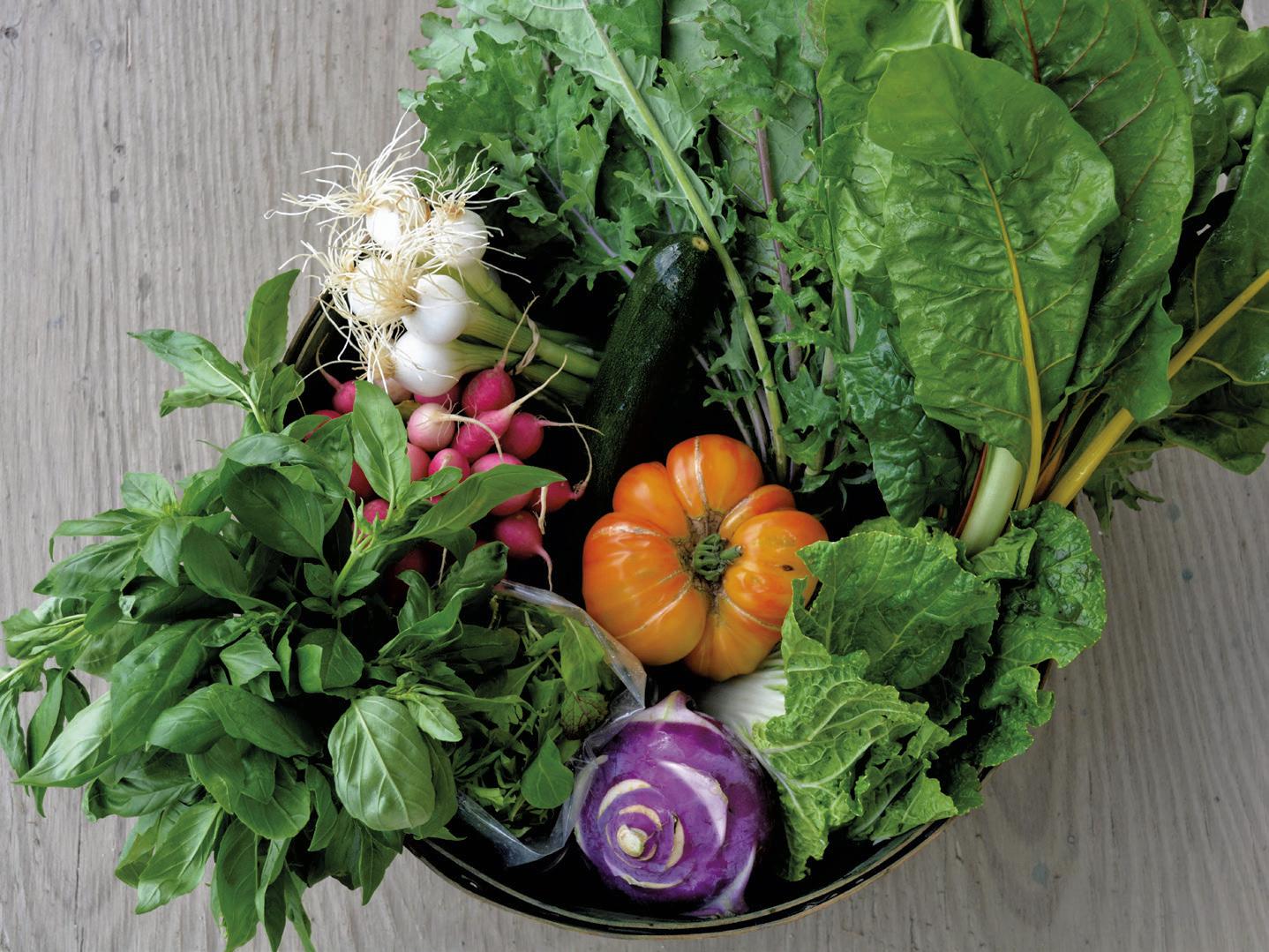
• Intervale Community Farm in Burlington (intervalecommunity farm.com) offers farm shares in different sizes and serves more than 600 families annually.
started as a mail-order seed company in 1983 and now stocks nearly everything under the sun, from gardening tools to mud boots. K
• Shelburne’s Bread & Butter Farm (breadandbutterfarm.com) produces homegrown veggies and meat.
• Wood’s Market Garden in Brandon (woodsmarketgarden.com) sells a summer CSA from its farm — with strawberries to come in June. Berlin’s Dog River Farm (dogriverfarm.com) feeds capital city residents with homegrown vegetables and fruits through its CSA and farmstand.
• Owned by third-generation Vermonters, Foote Brook Organic Farm in Johnson (footebrookfarm.com) covers more than 100 acres and stocks a sizable roadside stand on busy Route 15.
In the early 1920s, flight schools in the United States wouldn’t admit African American women. But Bessie Coleman, born in 1892 to a Texas sharecropper, didn’t let that fact stop her from becoming a pilot. She learned French and moved to France, where, in 1922, she earned her pilot’s license in seven months. Returning to America, she dazzled cheering crowds with airplane stunts. These days, we could all benefit from hearing stories of resilience. For more tales of women who persisted through adversity, check out Noisemakers: 25 Women Who Raised Their Voices & Changed the World. The book was released in February by Kazoo, a quarterly print magazine with a mission to empower girls ages 5 to 12. Dozens of artists contributed stories to the collection, including White River Junction’s Center for Cartoon Studies graduates Sophie Goldstein and Lucy Knisley.
Editor Erin Bried — also founder and editor in chief of Kazoo — noted in an email to Kids VT that girls are underrepresented in children’s books. She hopes that Noisemakers will give kids “a dose of courage to raise their own voices and follow their own paths, wherever those might lead.”



The collection includes well-known women such as civil rights activist Rosa Parks and first lady Eleanor Roosevelt, but it profiles lesser-known women, too. Illustrator Kiku Hughes spotlights Emily Warren Roebling, whose husband, Washington Roebling, oversaw the construction of the Brooklyn Bridge. When he was badly injured, Emily stepped in, “refined plans, oversaw construction, and managed the local politicians,” writes Hughes. Emily was awarded the honor of being the first person to cross the bridge, in a horsedrawn carriage. Afterward, she attended law school and fought for the rights of women.
Goldstein, who illustrated the story of Mother Jones, said she originally didn’t even know Mother Jones was a real person. The more Goldstein learned about the former schoolteacher and dressmaker who helped coordinate major labor strikes for fair wages and decent working conditions, the more she admired her.
Knisley profiled Julia Child. The renowned chef wrote 18 cookbooks but is best known for hosting a television cooking show. As episodes were filmed live, Child sometimes had to improvise with faulty equipment, like a broken stove burner. Viewers saw her failures live, too. But Knisley shows that Child’s enthusiasm for cooking, eating and teaching was always evident. “If you’re not going to be ready to fail,” Child once proclaimed, “you’re not going to learn how to cook!”
In addition to educating kids, Bried said, the book is designed to be one “kids can’t put down, even at bedtime.” With true-life tales of a shark whisperer and a singing spy, these pages open an imaginative world of adventure — and possibility — for kids.
For more information, visit kazoomagazine.com.
Buy local! Many Vermont bookstores — including Phoenix Books in Burlington and Essex Junction, the Flying Pig Bookstore in Shelburne, Bear Pond Books in Montpelier, and the Galaxy Bookshop in Hardwick — are offering online shopping or phone orders and curbside pickup or free delivery.
Beloved authors and illustrators are doing their part to entertain housebound kids, offering online story times and drawing tutorials. Here’s a selection:
• Jarrett J. Krosoczka — author and illustrator of the Lunch Lady series and the graphic novel Hey, Kiddo: How I Lost My Mother, Found My Father, and Dealt With Family Addiction, a National Book Award finalist — is hosting art lessons on YouTube. Find them by searching “Draw Every Day with JJK.”
• Author/illustrator Oliver Jeffers, who illustrated the popular picture book The Day the Crayons Quit, is reading one of his books “every day until it’s safe to go out again” at 2 p.m. on his Instagram stories. Find recorded stories at oliverjeffers.com/books#/ abookaday.
• On the Kennedy Center website (kennedy-center.org), artist in residence Mo Willems — of the Elephant and Piggie series and Don’t Let the Pigeon Drive the Bus! fame — invites kids to “grab some paper and pencils, pens or crayons” for a LUNCH DOODLE every weekday at 1 p.m. Episodes can be streamed after they air.
•

The Library of Congress and Scholastic are releasing a weekly video featuring Captain Underpants series author Dav Pilkey drawing and reading aloud. Find it on both the Library of Congress and Scholastic’s Facebook pages.
• Every Monday at 12:30 p.m., Narwhal and Jelly series author Ben Clanton will share drawing videos on Instagram Live. Search @benclantoon on Instagram.
• Mac Barnett, author of the Mac B., Kid Spy series and popular picture books including Extra Yarn and Triangle, has started Mac’s Book Club Show on Instagram — @macbarnett.

“
Iwant some fruit!” my 3-year-old daughter, Coraline, shouted as she sat at the dining room table, awaiting her lunch.
“I need you to be patient right now, Coraline. I’m putting lunch together for you and your sister, and I’m going as fast as I can,” I snapped back, barely audible over the cries coming from my 18-monthold daughter, Penelope.

It was shortly after noon on a weekday in late March, and I was nearing the end of my morning childcare shift with the kids, eagerly waiting for my partner, Stephanie, to emerge from our makeshift office basement so we could exchange the baton in this seemingly never-ending relay race.
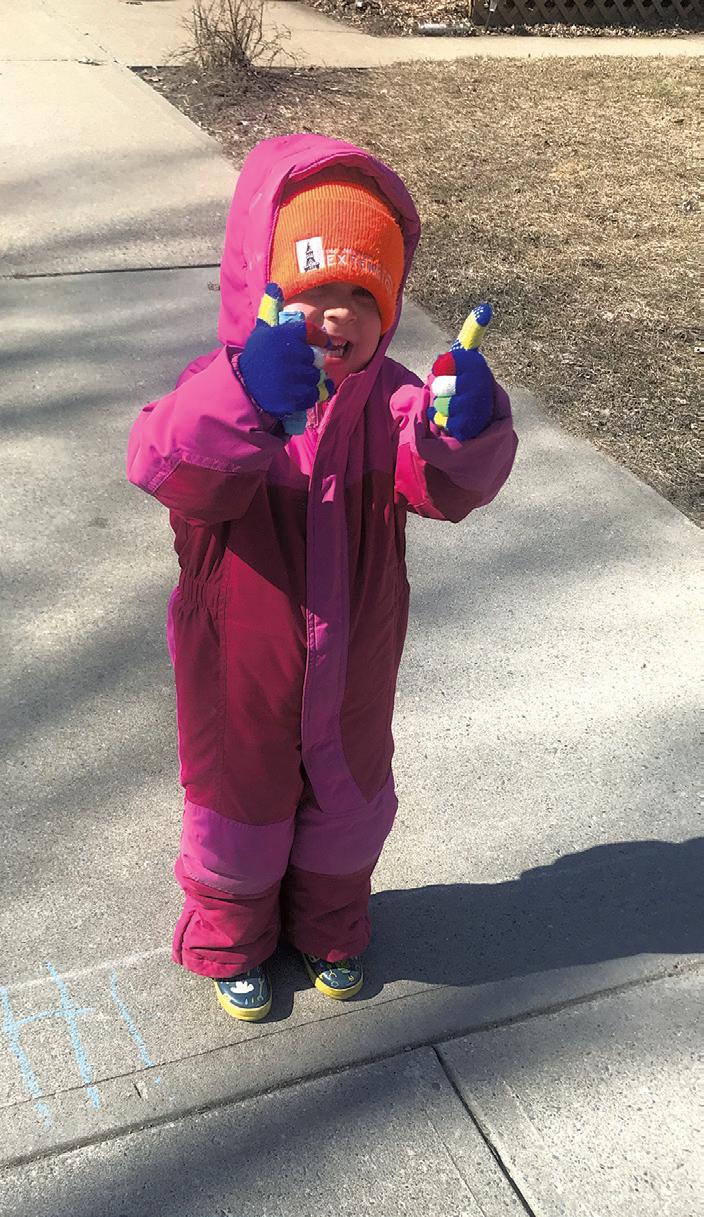
The COVID-19 pandemic had forced our family into a challenging situation that many are now facing: two parents attempting to work full-time from home while also raising multiple young children. If you do the math, it is borderline impossible. And even if you are able to find enough hours in the day, you might be left with just enough time to cook, clean, do some laundry and maybe take a shower.
“I said I want some fruit!” Coraline screamed once again. My blood began to boil. I stopped slicing sweet potatoes, stared at Coraline and used my stern voice.
“Coraline. I need you to stop right now.”
Predictably, she burst into tears almost immediately. “That’s not very nice!” she screamed through the sobs. I was just about to respond when Stephanie came into the kitchen.
“I need to tag out,” I said, heading down to the basement. Over the past week, this is what most interactions with Stephanie have looked like: more wrestling tag team than married couple.
I walked past the folded-up Ping-Pong table and dusty Bowflex to the desk we set up in the basement. The recent addition of a couple of lamps, a nice desk chair and a space heater have started to make the home office feel a bit cozier. I sat down and stared at my laptop, preparing to start working.
Except I couldn’t work. I buried my face into my hands and sobbed. This was hard. And from what I could gather from the plethora of news out there, it wasn’t ending anytime soon.
I wiped away the tears and reached for my phone. I opened up Marco Polo,
an app that allows a group of people to share video messages with one another throughout the day, and started recording a video for a group of fathers I’m connected to through Dad Guild, an organization that connects and supports local dads that I founded in 2018. We had started the Marco Polo group a few days earlier, hoping it would allow dads to remain in touch with one another.
“Guys, I’m having a hard day…” I started, and then continued talking about the difficult emotions I was experiencing. Within the hour, a handful of other dads were sending supportive messages, as well as sharing their own feelings regarding the COVID-19 crisis and how their families were being impacted. Hearing their stories, and knowing that my family wasn’t alone in all of this, had an almost immediate positive impact on my own mental health
I felt connected. I felt supported. I felt better.
Although the phrase “social distancing” is currently being used everywhere you turn, we should really be viewing this practice as “physical distancing.” In fact, we should all be making extra efforts to connect with one another, foster community and belonging, and engage in meaningful conversations during this stressful time. Not only do positive social connections lead to less anxiety and depression,
but according to research from UCLA School of Medicine professor Steve Cole, social connections even strengthen our immune system, something we could all benefit from right now.
But how do you connect with others while being asked to stay at home and not get within six feet of one another? This question is leading to exciting and innovative solutions from communities I consider myself a part of, and the results so far have been overwhelmingly positive.
At Dad Guild, local fathers have been connecting with one another over the Marco Polo app by sharing short videos. Sometimes the purpose is to show an activity they are doing with their children. Sometimes it’s to share a joke.
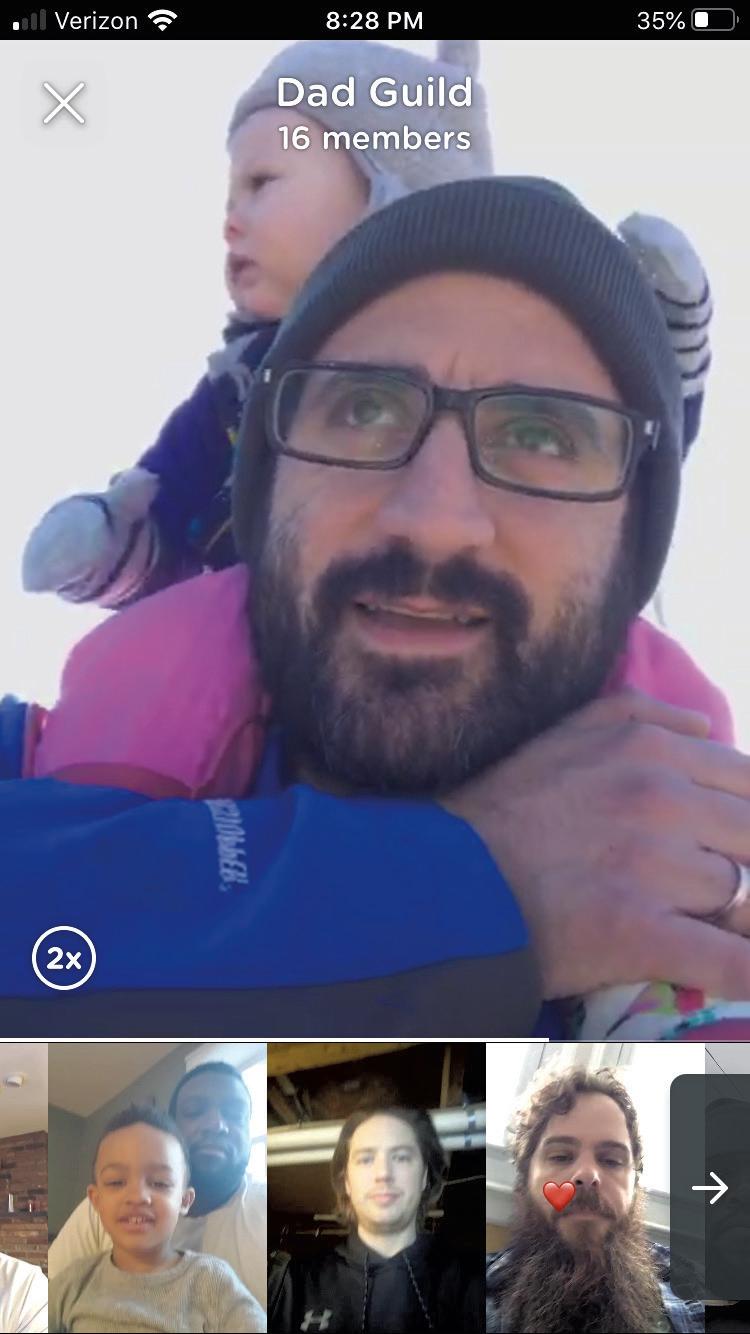
Sometimes it’s to talk about the stresses and anxieties we’re all feeling. And sometimes it’s to compare the overflowing mountains of laundry we all have piling up.
Dad Guild’s “Dads’ Night Out” events are also continuing, although they’ll be called “Dads’ Night In” for the foreseeable future. The organization will be using Zoom to host online party games like Jackbox Games, coffee talks and happy hours. There are also plans in the works to use Zoom for playgroups that will center on dancing, cooking and music.
At the Janet S. Munt Family Room in Burlington, where I work full time as the fatherhood program coordinator, we’ve been busy ensuring that all families continue to be supported and connected during this crisis. Staff have created systems to ensure that all families are getting check-ins at least once a week, through phone calls, text messages and Facebook Messenger. Resources like food, diapers and toiletries have been getting delivered to those in need, along with engaging children’s activities. Staff have also been uploading read-alouds and sing-alongs to the organization’s Facebook page, and they just recently started a live virtual playgroup so kids can be entertained and engaged, and continue to see the familiar faces of staff members.
At home, we’ve been encouraging our daughters to spread joy to others, emphasizing the positive impact small moments of cheer can have on the community. We’ve used sidewalk chalk to write jokes on the walkways near our home, and we celebrated one of our baby doll’s birthdays by dressing up, singing and having a bubble parade through the neighborhood. Coraline has even started performing standup comedy, sharing a joke of the day across social media platforms throughout the week.
And the responses have been overwhelmingly positive. Every effort made has been received with kindness, gratitude and warmth. Weirdly, in a lot of ways, I’m feeling more closely connected to my community than ever before.
These are uncertain times, and the length of the road ahead is still unknown. I’ll admit, there are times when I find my mind falling into the hole of the unknown, where fear, anxiety and depression thrive. But the communities I am a part of, and the connections I have made and continue to strengthen, are what keep pulling me back up. K
Name: Charlie Schramm


Age: 11
Town: Shelburne



When musician Charlie Schramm was 2 years old, he attended a Grateful Dead festival at Lake Dunmore with his parents, Erika and Mike. Erika recalled watching young Charlie, perched on Mike’s shoulders and “mesmerized by the music.” Much to his parents’ surprise, he stayed awake for the third set, which didn’t end until the middle of the night. It was then, Mike said, that he began to understand the “laser focus” Charlie has for music.
Now a Shelburne sixth grader, Charlie picked up his first guitar at age 5 and took his first lesson at 6. He was the only child in a class full of adults. “Like a sponge, he absorbed the styles and incorporated the di erent guitar techniques into his own interpretation,” recalled the teacher of that class, Sallie Mack. “After a couple years of lessons, I basically had to kick him out because there really wasn’t anything more that I could teach him.”
When Charlie was 8, he had his first public gig at Shelburne Vineyard, as part of its First Thursday Concert Series. He performed during intermission, playing
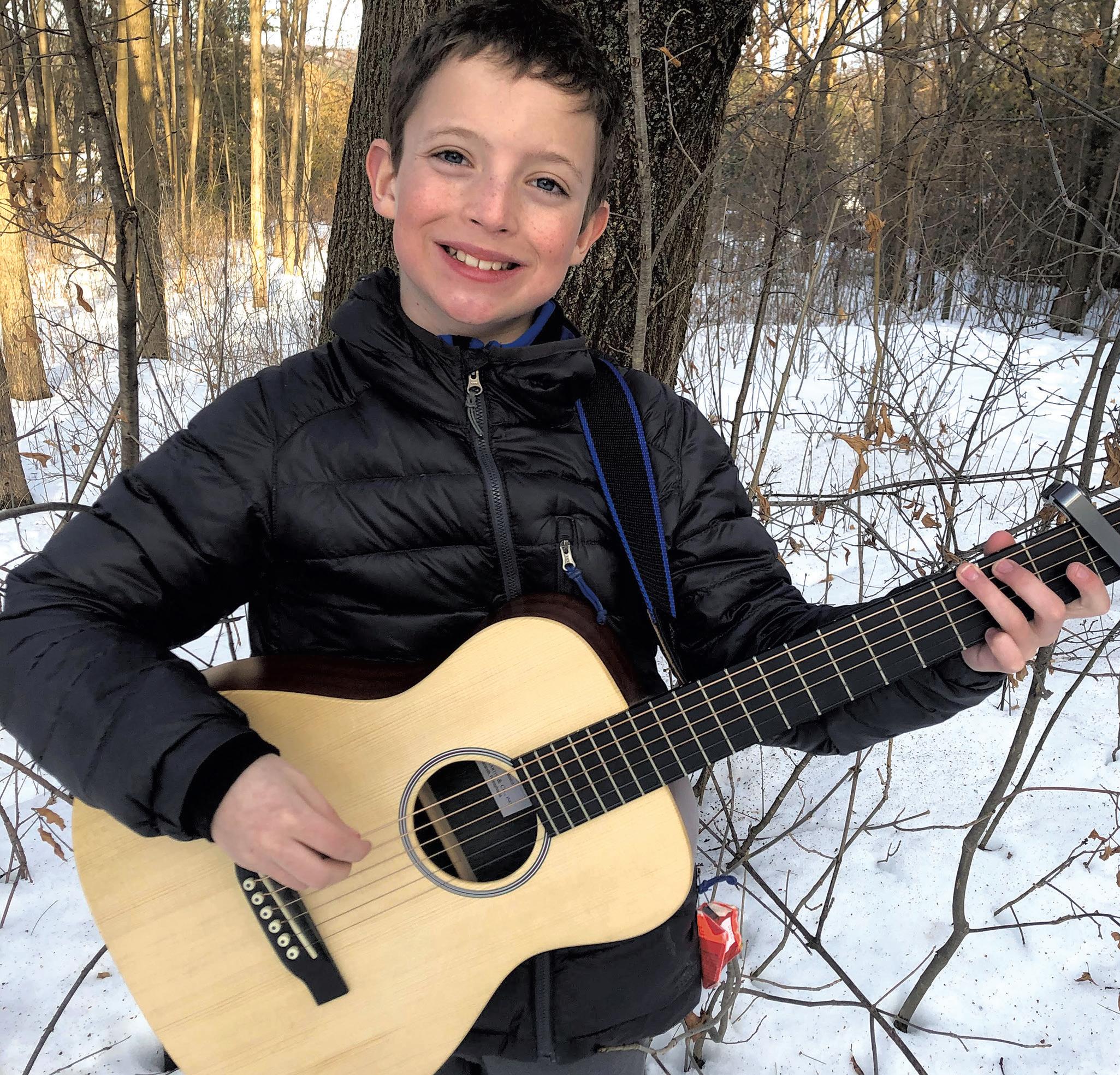
I fell into this trap of music. Beautiful trap of music… I put my hand on the fret board And wonder how did I get here.
Playing by the campfire, Playing in the basement.
Playing on the big stage, Playing on the pavement. Strumming away the hours of the day.
Music comes flowing in every direction, Music comes to me at every intersection, Music guide the way.
Playing at the highs, Playing at the lows.
Playing as my life quickly grows. Music spark the flame.
I look back to my first lesson. I was 6 at the time of that blessing. Quickly learn the skills.
Feel the power in my fingers. Feel that satisfaction start to linger.
It’s the love that builds and builds.
“Photograph,” by Ed Sheeran, “Someone Like You,” by Adele and “Let it Go,” by James Bay. During the second song, his guitar string broke, leaving him without an instrument. The can-do musician graciously accepted a full-size guitar from another performer and finished out his set. “It was too big for me, but I made it work,” Charlie recalled with a laugh. His grit paid o ; the music coordinator asked him back to perform as a headliner two years later.
Through his three years of performing, Charlie has a considerable list of Shelburne venues under his belt: Village Wine and Co ee, Palmer’s Sugarhouse, Fisher Brothers Farm, the Shelburne Farmers Market, and Pierson Library. Early on, he just played covers. But when he decided to enter Advance Music Center’s Singer/Songwriter Contest in 2018, he had to write his own songs. He penned his first original piece, “Out of Water,” a song about how interacting with the natural world makes him feel at home. He entered the contest again in 2019 and this time was one of three finalists.
In March, he finished his 12th original composition. His indie style is inspired by “all things Vermont” and his passions for skiing, snowboarding, hiking, fishing and biking. He names Mumford & Sons, Ed Sheeran and Noah Kahan as musicians he looks up to. Recently, he has moved on to teaching himself how to record, mix and layer his original works in the basement studio he built using his own money. It’s outfitted with a mixing board, amplifier, audio interface, laptop, microphones, drums, harmonicas, guitars and even an old Victrola record player. There’s a sign propped on the record player that reads: “Do more of what makes you awesome.”
Learning about layering and timing is “so much trial and error, patience, and sometimes walking away for a while to regroup,” said Charlie. He advises other young musicians to “keep at it and don’t take no for an answer.”
While Charlie dreams of playing at Madison Square Garden in New York City one day, for now, he’s enjoying being “the local guy who plays around town for neighbors and friends and family. Making people happy is the best part.”
And locals, like Village Wine and Co ee owner Kevin Clayton, are glad to oblige. “It is an absolute joy to have Charlie at the shop,” Clayton said. “He is meant to be playing guitar, singing and entertaining people.”
Charlie will livestream a performance on Friday, April 10, from 7 to 8 p.m. Find it by searching “Small but Mighty - LIVE” on Facebook. The video will be available for viewing after the live event.
We’re welcoming surrogates to apply for future matching! Our screening process can take several months before anyone is matched, so start now. Plan ahead for your family’s future while helping others.


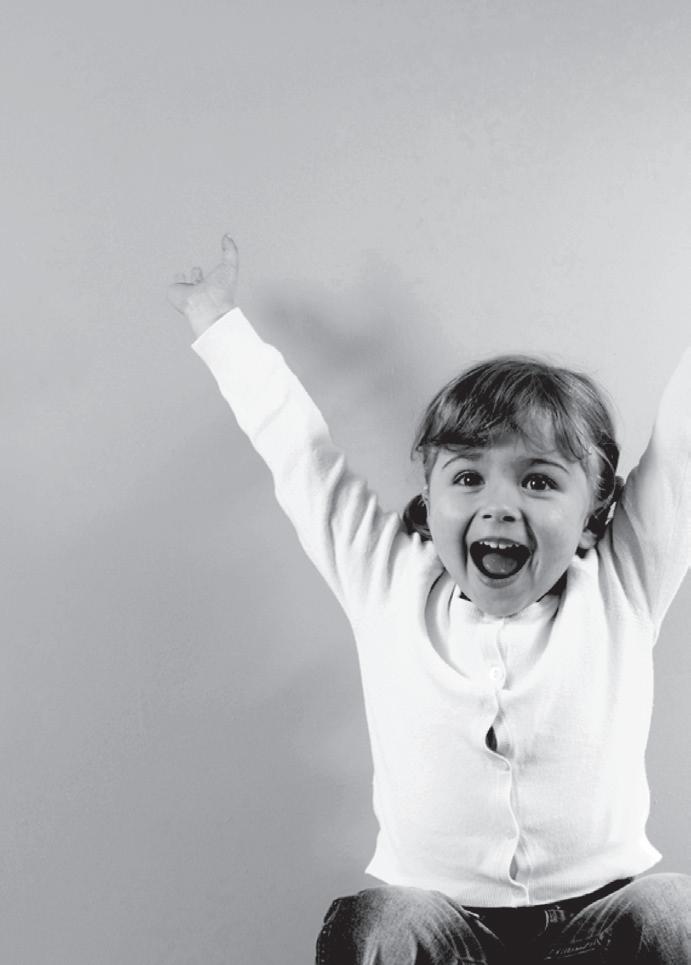
Many Vermont families struggled to make ends meet before the coronavirus hit. Now, their lives feel dangerously precarious.
This is especially true of the low- to middle-income Vermonters who utilize state and federal social support programs. Some families lean heavily on this network for food and fuel assistance. Now they must be even more resourceful to get what they need.
The Champlain Valley Office of Economic Opportunity assists families with resources ranging from housing assistance to financial skills building. Asked for an example of someone who negotiates the various systems successfully, the nonprofit connected Kids VT with Burlington resident Diane Deso.

The only adult in her household, Deso has permanent guardianship of two grandchildren, ages 14 and 9, and two adopted grandchildren, ages 2 and 4, whose parents aren’t able to care for them due to medical reasons.
To keep her family afloat, she stitches together a combination of wages from her part-time job, support from community organizations, disability payments, and housing and childcare subsidies worth around $3,500 a month. Her secret to making it work: “planning, planning, planning.”
Deso has held numerous jobs in her life, from welder to Macy’s sales associate. Her favorite was on a crew repairing the bridge between Winooski and Burlington, where she assisted with pouring cement.
In the early 1990s, Deso graduated from Step Up — a national employment training program for women — and she joined a construction crew. Now 56 and the mother of four grown children, Deso proudly reminisces about demolishing a cement wall in South Burlington High School. For three days, she worked with a cement saw, a sledgehammer and a jackhammer, and — by herself — got the job done.
Last October, she began working part-time at Walgreens. She described her wages as not “too, too bad” at $13 per hour.
She uses a subsidy through the U.S. Department of Housing and Urban Development’s Section 8 program to
pay $318 of her $1,600 rent each month. When she took the Walgreens job, she worried the subsidy would shrink, increasing her rent costs. To her relief, the local Section 8 staff was able to freeze her subsidy at its current rate for a year. When it ends, she expects to pay $100 or $200 more per month.
funded in part by Champlain Valley Head Start. Her youngest grandchild was also accepted into the King Street Center’s Early Head Start program. There, Deso paid no tuition and was not required to provide diapers or wipes — another substantial savings. Deso considers herself fortunate that she doesn’t have
to children’s playgroups, Deso participated in an adult wellness program there, which emphasized the importance of self-care for caregivers. “It’s a really cool place to be, and you meet people from all around the world,” she said.
Prior to December, Deso’s household of five received less than $300 monthly in food assistance through 3SquaresVT. When federal funding for the program was slashed, an estimated 700,000 Americans were removed from the program. Deso’s household hasn’t received any additional funds for food for three months. “I don’t think it’s right,” she said.
In March, when schools and childcare centers closed, Deso — like many others — was forced to make radical changes. Her supervisor allowed her to scale back her part-time hours at Walgreens to just Saturday and Sunday evenings, when her adult daughter can watch the four kids along with her own three youngsters. To supplement her reduced paycheck, Deso reapplied for assistance through 3SquaresVT.
She’s grateful for a one-time bonus of $200 from Walgreens — which rewards her for being an essential worker who continues on the job, despite her worries about contracting the coronavirus and spreading it to her family. “I can’t get this,” she fretted.
With the children home all day, her family is “getting into a routine,” doing schoolwork and art. Through a Front Porch Forum posting, Deso obtained paper, markers, crayons, sharpened pencils and more. She recently visited Feeding Chittenden and was especially pleased with the fresh fruit she got there.
Deso suffers from a degenerative spine condition, which she attributes to years of lifting heavy objects in various jobs — although she said she has no regrets about doing any of them. Now, she receives about $900 per month in disability compensation and an additional $900 for the care of her two adopted grandchildren. Child-Only Reach Up — cash assistance for adults caring for dependent children of relatives or friends — provides an additional $300 a month.
Last fall, Deso was able to secure a spot for her granddaughter in King Street Center’s Early Education program,
to pay childcare expenses. “The daycare piece,” she acknowledged, “is really hard for a lot of people.”
Emily Hammond, Early Head Start advocate at King Street Center, is the teacher in Deso’s youngest grandson’s class. Hammond, who also taught Deso’s granddaughter, said she admires how Deso “continues to navigate through life with an admirably perseverant attitude.”
Deso and her grandchildren are frequent visitors at the Janet S. Munt Family Room in Burlington. Deso has attended family programs there since her oldest grandchild was small. In addition
For the past few summers, Deso and her grandchildren planted a garden at the Ethan Allen Homestead, through a program run by the Family Room. Though the Family Room is indefinitely closed, Deso hopes she’ll still be able to access her plot at the homestead.
And — like countless others across the nation — she is hoping to receive a stimulus check from the federal government soon. K
Got a story to share about how your family is “Getting By”?
Email brett@kidsvt.com.
In March, when schools and childcare centers closed, Diane Deso — like many others — was forced to make radical changes.Diane Deso (front, second from right) with grandchildren Kyle, Jamie and Autumn, and Family Room staff member Rosie Senna (with an unrelated child)
Vermont organizations and educators aren’t letting the current social-distancing reality stop them from bringing enriching and educational programs to families. Many are offering free online classes, story times and videos. Here is a sampling of Vermont venues that have pivoted to online learning opportunities this month.
At Home with Music for Sprouts: Mister Chris and Miss Emma serenade little ones with familiar tunes every weekday at 10 a.m. Watch on Facebook at “MusicforSproutsVT” or at musicforsprouts.com/athome.
Poetry Corner for Kids: Colchester author
Daniel M. Holtz gets kids jazzed with 20 minutes of online educational entertainment. Weekdays, 11 a.m., through the end of April on Facebook at “StinkleberryPie.”
Online Musical Story Time: Storyteller and musician Mary Catherine Jones and the Pierson Library host a virtual literacy hour for little listeners with songs and fingerplay. Tuesdays, April 7, 14 and 21, 10:30 a.m., piersonlibrary.org.
Home Studio: Burlington City Arts posts new activities every Monday, Wednesday and Friday for at-home artists, burlingtoncityarts.org.
#TenTwoFourBreak:
Shelburne Museum shares a daily post combining art and exercise to stretch families’ bodies and imaginations, 10 a.m. on Facebook. Also at shelburnemuseum.org/tentwo-four-break-challenge.
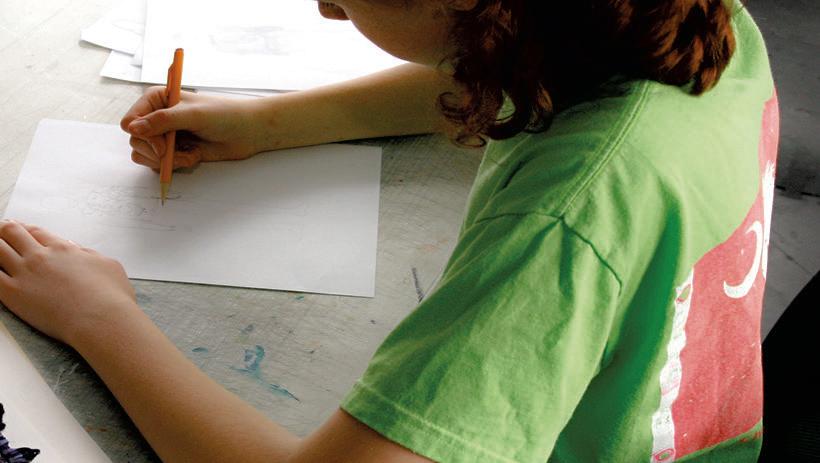
Billings Farm at Home: From Woodstock, the Billings Farm & Museum posts craft activities, recipes, videos with book readings, tours of the historic 1890 farmhouse and virtual visits with barnyard animals, billingsfarm.org/ billings-farm-at-home.
Virtual Voicing Art Poetry Reading: Writers, readers and appreciative listeners log in for original poetry with themes of connection and interdependence. Sunday, April 18, 2-3 p.m., poartry.org/voicing-art/
Many libraries are offering free online programming during this time. Story times are often archived on library Facebook pages.
Some of the libraries with robust o erings: Montpelier’s Kellogg-Hubbard Library, Warren Public Library, Essex Junction’s Brownell Library and Waitsfield’s Joslin Memorial Library.
Audubon Vermont: The Huntington nature center posts children’s activities and outdoor learning prompts every Monday, Wednesday and Friday, and 30-45 minute lessons every Tuesday and Thursday at vt.audubon.org.
Science and Stories: ECHO Leahy Center for Lake Champlain in Burlington takes its natureinspired tales online to engage preschoolers. Wednesdays, 11 a.m., echovermont.org.

Science Storytime: Norwich’s Montshire Museum engages youngsters with tales and activities. Thursdays, 11 a.m., through May 14, montshire.org. The museum’s Facebook page also o ers at-home challenges, with science-themed topics ranging from bubbles to seeds.
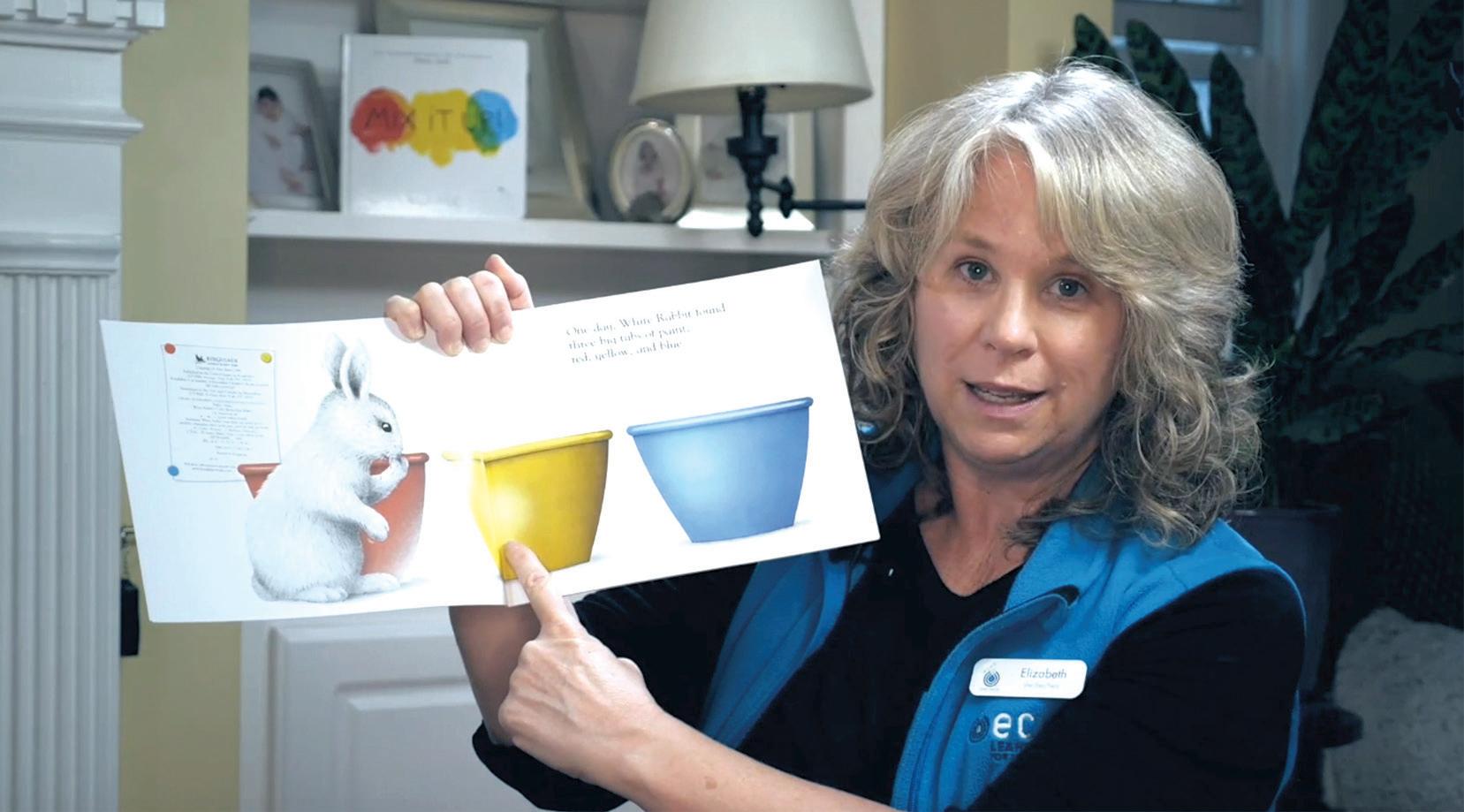
Saturday Storytime: Small ones start o the weekend with a virtual story time, shared by St. Johnsbury’s Fairbanks Museum & Planetarium. Saturdays, 10 a.m. on Facebook at “Fairbanks Museum.”
Falcon Encounter: Vermont Institute of Natural Science in Quechee teaches students of all ages about the adaptations of these raptors on Facebook Live. Friday, April 10, 12:30 p.m. at “VINS.VT” on Facebook.
Forest Canopy Walk Tour: Via Facebook Video, curious families get a tour of the Vermont Institute of Natural Science’s walkway among the treetops and learn some forest facts. Wednesday, April 15, 12:30 p.m. at “VINS.VT” on Facebook. vinsweb.org.
iNaturalist Tutorial: Curious naturalists tune in to Vermont Institute of Natural Science’s sta via Facebook Video and discover how to use an app to answer nature identification questions. Friday, April 17, 12:30 p.m. at “VINS.VT” on Facebook.
Like the University of Vermont Medical Center on Facebook and get weekly updates from Dr. First! See “First With Kids” videos at childrens.uvmhealth.org.

On March 6, Kids VT and Seven Days wrapped up our second Good Citizen Challenge. Nearly 850 young Vermonters from 78 towns signed up to participate in this interactive civics project! They passed quizzes and completed activities in five subject areas: History, Government, News Literacy, Advocacy and Community Engagement.
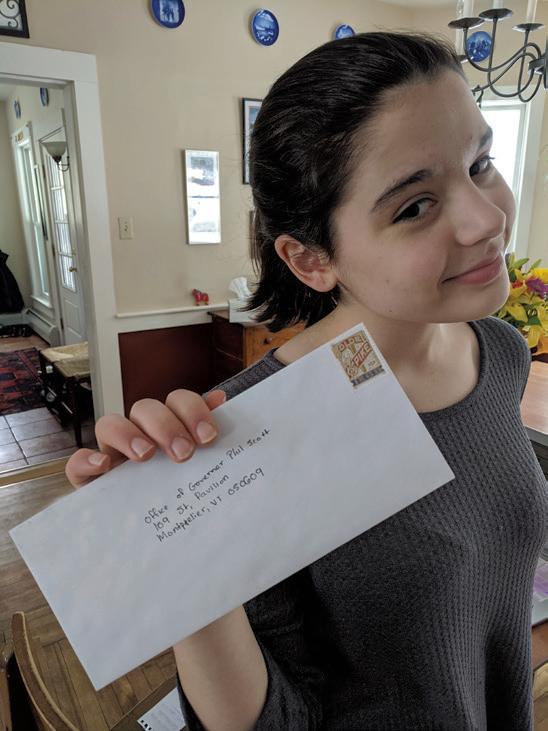
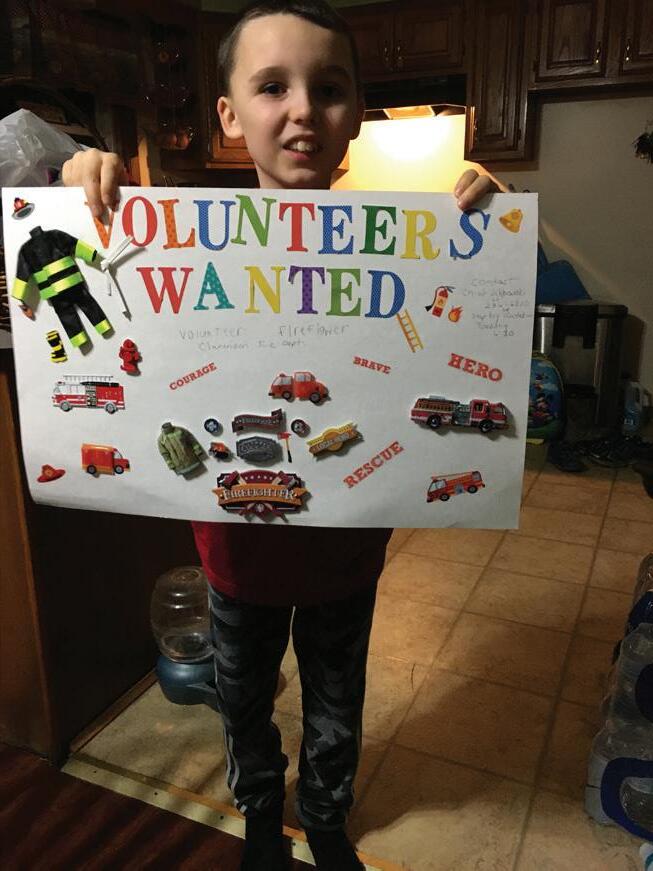




To complete the Challenge, they needed to earn at least 251 points, which is equal to the number of towns in Vermont.
The top five point-getters — these students completed the most activities:
1. LILLIAN DUFFY Bakersfield Bobcats, 570
2. JETTE GALLANT Stockbridge Citizens, 530
3. MAGGIE KNOX Stockbridge Citizens, 520
4. ALEAH CARROLL Stockbridge Citizens, 470
5. TAYLOR SMITH Reading Homeschoolers, 460
The five top-scoring teams:
1. WILLIAMSTOWN MIDDLE HIGH SCHOOL 6 AND 7, 6490
2. STOCKBRIDGE CITIZENS, 5650
3. PIERCE PEEPS (Montpelier), 5640
4. GUILFORD 5TH GRADE, 5390
5. 4K CLASS (Weathersfield), 4740
We’re excited to announce that 215 PLAYERS finished the Challenge, almost three times as many who finished the first Challenge in 2018. We were looking forward to bringing these young leaders to the Statehouse and presenting them with their prizes — until the pandemic hit and foiled our plans. We’re working on making it up to them. Thank you to all of the adult team leaders who made this Challenge possible! You are Good Citizens, for sure.
Dan & Jenna Sonneborn
The Evslin Family Foundation
1) The Malikians preparing to participate in the climate strike; 2) Girl Scout Troop 52005 interviewing South Burlington City Councilor Tom Chittenden and Rep. Ann Pugh; 3) Evelyn Fleming holding up her letter to Gov. Phil Scott; 4) Ethan Bishop recruiting volunteers for the town of Clarendon Powered by: In partnership with: With support from:DEBSCAPE
Vaughn Richardson
Thomas Stimac
Sam Hawley
Michael Vitta
Julian Leendertse
Haley McGrath
Fiona Murphy
Ada Clar
WINOOSKIEAGLES
Ivy Resmer
Graham Resmer
WILMOT 4TH
Will Tindall
Tyler Grace
Taylor Tomberg
Olivia Westney
Lucian Gray
Levi Martin
Kash Holmes
Julius Gilbert
Jakobi Davidson
Jake Smith
Henry Remick
Cameron Magliola
Callie Breit
Autum Reed
Aiyonna Gay
Adrianna Reid
Olivia Follett
WMHS 6 AND 7
BLUE DEVILS
Clara Launderville
Rachael Wilson
Riley Laggner
Brenna Lee
Alyssa Briggs
Amelia Mills-Brown
VERMONT COPPERS
Joseph Mora
UES CRUIKSHANK
James Carr
THE STONES
Kayla Stone
Carly Stone
THE PENGUINS
Myles Donohue
THE MALIKIANS
Xavier Csizmesia
Oliver Nichols
Mohamed Abdirahman
Max Robson
Mara Schulman
Lydia Allen
Lila Mickenberg
Kylee Kraus
John Minor
Hamoody Kowa
Geneva Walker
Emma-Rose Holas
Calvin Millham-Berry
Brooke Wright
Aden Ali
THE FLEMINGOS
Moses Andrews
Hazel Fleming
Evelyn Fleming
Seamus Fleming
THE CHIPPER CHIPMUNKS
Luke Goodfellow
Max Goodfellow
TEAM QUEST
Eliza Whitehair
TEAM FLAPP
Theo Fallis
SUNSET HILL KIDS
Bristol Card
STOCKBRIDGE CITIZENS
Shannon Colton
River Thayer
Rylee Peck
Rachel Ketchum
Mason Ponte
Maggie Knox
Lily-Ann Nolet
Janelly Rodriguez
Jacob Kopyscinski
Jette Gallant
Gwen Rostran
Gracie Lambert
Emma Austin
Aleah Carroll
Ana Campos
ST. ALBANS HOMESCHOOL
Elijah Duhamel
Cicely Duhamel
SALWAY’S SQUAD
Zach Taylor
Marissa Kingsley
Molly Kehoe
Luke Rizio
Cody Magnet
Abby Pratt
SALWAY 8-1
Sara Stone
Noah Dornberg
Martha Pereria
SMB JERICHO
Jackson Hehir
RIPTON 5TH AND 6TH
GRADE
Phoebe Edmonds-Beattie
Matthew McIntosh
Mary Harrington
Jack Hoyler
Taylor Smith
PIERCE PEEPS
Winter Holloway
Tatum Kirtlink
Somerset Pierce
Satori Hamilton-Cohn
Sabin Kitchen
Nikhil Boora
Michiko Padgett
Lucy Copans
Lily Darcy
Lakshita Sivaganesh
Juniper Keeton
Isabella Seaton
Hazel Zachai
Haris Brkic
Elena Guadagno
Django Matchstick
Cooper McDermott
Chase Burkart
NEW CHALLENGE: We invite all of you to sign up for our new Good Citizen Coronavirus Challenge! We’ll post a Good Citizen activity each week at goodcitizenvt.com. We’ll be focusing on history, community engagement and news literacy — all of which will help us get through this difficult time. No registration, no points to keep track
PHOENIXES
Jonah Matte
OSZUREK TEAM
Sophia Oszurek
Ethan Oszurek
MRS. RANDALL’S CLASS
Noah Stone
Luke Elsinger
Levi Desautels
MILLBROOK EXPLORERS
Henry Swisher
MANALO
Rosalynn Manalo
KRUEGER KIDS
Sebastian Krueger
Charlotte Krueger
Abraham Krueger
HONORING
CLAUDETTE COLVIN
Anna Kathleen O’Reilly
GUILFORD 5TH GRADE
Sam Mathes
Sadie Cheslawski
Natalie Knutson
Macie Tkaczyk
Lizzy LaClair
Lexi Downing
Leah Filgate
Kayleigh Whelan
Isaiah Giroux
Isaiah Allen
Harley Johnston
Hailey Bristol
Eli Welch
Dakota VonFeldt
Charlie O’Connell
Camden Shepard
Avin Williams
Alex Johnson
GIRL SCOUT TROOP 52005
Tegan Bushey
Stella Esckilsen
Mae Dery
Lucy Esckilsen
Kylie Orth
Jessica Ziomek
Fiona Agnew
Emijoi Kukatla
Aven Jorgenson
FRIENDS 4-EVER
Lila Bushey
Emma Cote
Chapin Grubbs
Avery Siket
FRANKLIN FACT FINDERS
Cosimo Franklin
Wisteria Franklin
FOURTH GRADE MILLERS
Phoebe Bakeman
Lachlan Pierce
Khalil Armstrong
ETHAN05759
Ethan Bishop
ERROR 404 THIS GROUP DOES NOT EXIST
Brook Beloin
Gabriel Beloin
EPIC KIDS
Ziya Estep-Lewis
DEMOCRACY
Canute Hoehn
CLIMATE COMRADES
Jasmine Cavanaugh
CALAIS COUGAR
LEADERSHIP TEAM
Victor Bergeron
Cartaya Dodge
Sophia Giammusso
Sylvia Emmons
Monty Yaehrling
Lyric Luce
Isabel Parrish
Emma Pulsifer
Ellie Reed
Colby Tuller
Bri Tetreault
Ben Fischer
Abby Dodge
BAKERSFIELD BOBCATS
Simone Clark
Rose Bessey
Montannah Ovit
Marianna Recica-Sullivan
Lizzie Barnier
Lilian Du y
Finn Shookenhu
Dehlia Habedank
Ciara Streeter
Bella Schultz-Mitchell
Ayden Mayo
Anya Paquette
BFA FAIRFAX 6TH GRADE
Leigh Brown
Keller Greene
Kai Von Sitas
Emma Foster
Elliot Scannell
ABCREATE
Rene Simakaski
August Simakaski
Trillian Hyde
4K CLASS
Zeven LeBlanc
Shawn Harriman
Phillip Rousse
Olivia Roberts
Nyna Lewallen
Nathan Nissenbaum
Lucas Gaudette
Lilly Sanville
Lillian Stavrou
Isaac McNaughton
Dante Doleszny
Collin Watkins
Aurora Hensel-Whalen
Amaris Seville
Aiva Reed
Ada McNaughton
of. We’ll make it easy to send in your work through our website. All who submit activities will be entered into a weekly prize drawing. We’ll share the best work with our audience. Anyone 18 and under can participate — you don’t have to live in Vermont. Find more details and sign up for email alerts at goodcitizenvt.com.
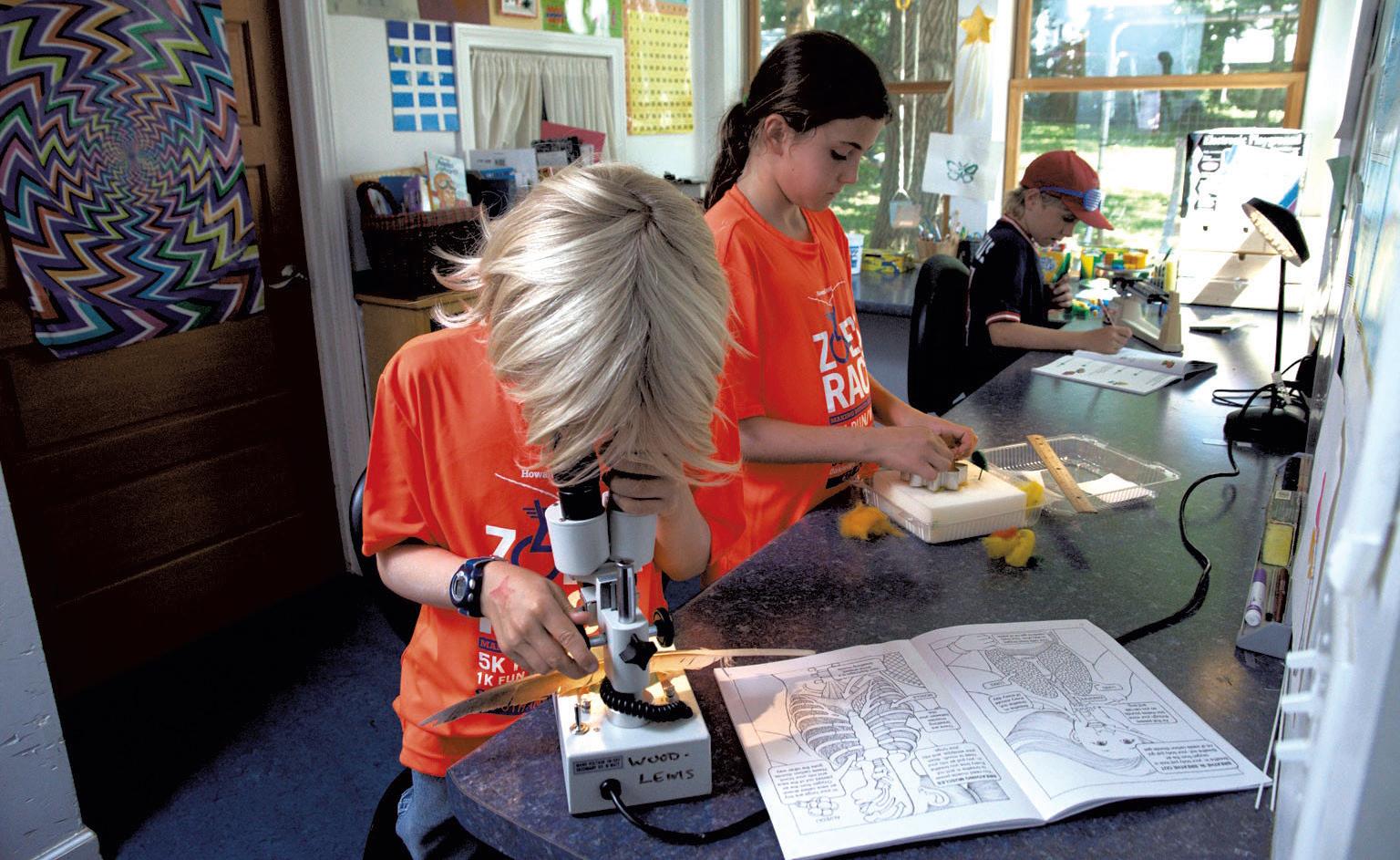 COMPILED BY ALISON NOVAK
COMPILED BY ALISON NOVAK
The end of the school year as we’ve always known it arrived abruptly on March 26: That’s when Gov. Phil Scott closed all Vermont schools to slow the spread of COVID-19. Suddenly parents and caregivers faced the prospect of keeping kids engaged in learning while also working from home, caring for relatives, managing a household, filing for unemployment or reporting to an essential job site.
This unprecedented turn of events prompted a collective “Now what?!”
Educators around the state have been scrambling to help answer that question.
In a voicemail to Champlain Valley Union High School staff, students and parents, principal Adam Bunting assured parents that “this is not goodbye and that this year is not over. We will stay in contact. We will continue to learn together as a community.”
Under Scott’s declaration, schools must implement a remote learning plan. Many districts have already begun online instruction — from conducting morning meetings via Google Hangouts to posting assignments online to offering menus of activities. But there will likely be large swaths of time when it falls to parents and caregivers to make sure their kids are learning.
To help with that, we’ve asked Vermont parents who homeschool by choice to share some of their insights and tips. Here’s a pearl of wisdom from Burlington mom Erica Spater to kick things off: “Remember, hindsight is going to smooth out the rough edges of this crazy homeschooling experience. You’ll see the ‘magic’ in it from the rearview mirror. Right now, those grumpy, obstinate children of yours are exactly as close as they appear.”
Read on for more.
Burlington, licensed teacher, homeschool assessor for the state
Kids’ ages: 13, 16 and 16
Try to enjoy your kids — they are growing up fast, and you will look back and see the opportunity to have spent time with them as a gift.
Institute a daily family outside outing.
We have to resort to dragging the teens along for “forced family fun” sometimes, but they never regret it. Walk the dog, toss a Frisbee, get down to see the lake, get in even a tiny patch of woods. Such perspective!
Create the expectation of a daily “quiet time” (ideally screen-free). This is a time everyone is in their own room (or when my kids were little, a different room from one another) for an hour or more. They can listen to audiobooks, do Legos, read, nap, organize their closets, do art, whatever. It gives everyone a social break from the larger family and guarantees a time for that important call or quick meditation/ yoga/reading/nap, etc. for the adult.
Make an attempt to “lighten up” on whatever your normal triggers are — kids being messy, loud, on screens, etc. This is going to be a long haul, and patience and flexibility are going to be key.
Don’t worry about how much gets covered academically. Really. If kids are not going down the rabbit hole on screens, they will have time to learn
organically: from family conversations, researching interests, reading, building things, making music and art, cooking, reading the newspaper, getting in shape, etc. Kids are evolutionarily designed to learn.
Woodbury
Kids’ ages: 2, 6 and 9
For the many families now mandated to school at home, I would suggest setting a very loose daily schedule just to keep the days predictable, the children stimulated and the chaos/boredom within your control.
Many times, my children choose which topic we learn about. I go and find interesting books, activities, games, art, food, etc. about that topic, and the children love it. If you have older children, they can easily choose a topic and google some interesting activities while needing minimal parental support. If you do a little looking around, you will find
an abundance of ideas online. There are many educational sites and homeschooling blogs that have entire unit studies on various topics all ready to go for you.
Make a list, loosely plan each day ahead of time, and you may find confidence replacing your uncertainty about your child’s daily routine.
HEATHER DUHAMEL
St. Albans, educational consultant (retrainvt.com)
Kids’ ages: 9 and 12
Each day is a new start, so define how it will go together. Write down goals or shout them out!
Be ready to sneak in learning as you move through your days. You do not need to name the lesson to have the learning count.
Working and schooling from home is the art of orchestrated chaos. Embrace ideas, feelings and mess as learning opportunities show themselves. Be willing to stop and restart. This models
responsiveness and resilience — essential skills to develop in these times.
Build in time to make a hundred snacks.
Advice from Heather’s family: Cicely, age 9: Find things that you have in common as a family. This builds on your relationships when you have to do the hard stuff. Make sure to come back together and laugh.
Eli, age 12: Some projects take a really long time — like, days. Some can only take five minutes. Until you start and make a plan, it is hard to know how it will go. Be flexible with your kids so they have time to learn the way that feels best.
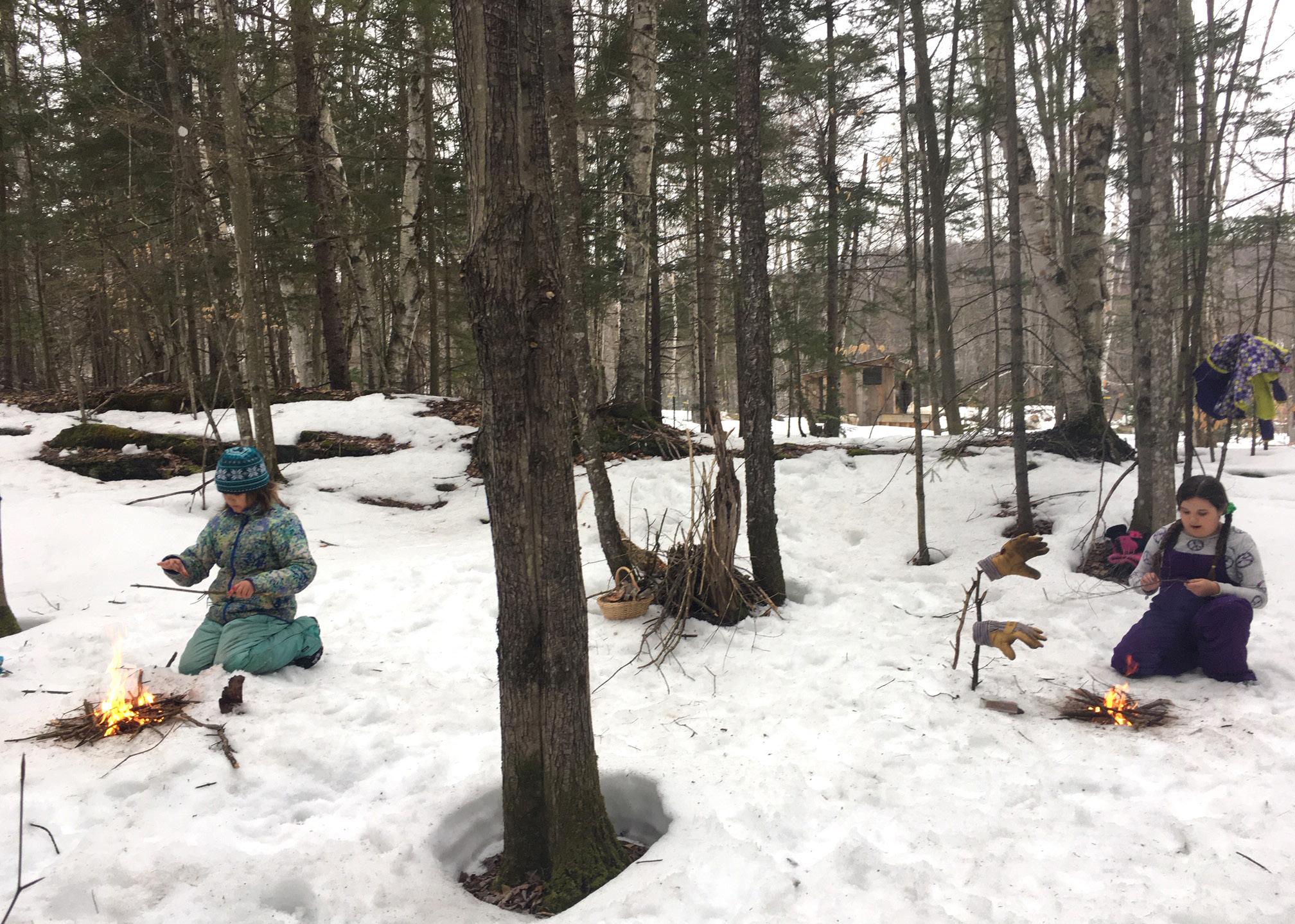
Andrew, homeschool dad: Schooling at home is still home first, with school and learning goals built in. This remains true for us, too, and we are in our fourth year as a home-study family.
ERICA SPATER
Burlington
Kids’ ages: 9 and 13
It’s not easy and it’s not for everyone, so please don’t beat yourself up about it.
In the end, you will not have the chance to pat yourself on the back and congratulate yourself on how you nailed it and educated the hell out of your kids. What you will gain is a really cool opportunity to understand how your kids think They’ll show you in the most offensive and confrontational ways as you struggle to complete the worksheets and virtual tours and virtual yoga sessions and super-cool-messy-time-and-materialheavy science experiments.
You don’t have to overachieve at this like you do at your job, and the first people to remind you are going to be your kids. If you can get curious in those frustrating moments, you’ll learn some really valuable information about what goes on in their hearts and minds. That understanding is what you’ll be able to take away from this weird and wacky time: a precious and portable knowing that will serve you and your kids better than a completed packet of worksheets.
Hinesburg, leader of Greater Chittenden County Home Study group
Kid’s age: 10
A lot of learning can happen in a little bit of time, so don’t feel you need to fill every minute of the day with formal instruction, or you’ll exhaust everyone. Also, kids give cues when they are not able to focus intently, so it’s better to follow the cues
and let the more scholarly work happen in little gems of time.
There are so many opportunities for kids to learn through ordinary needs. Cooking is great for both math and science learning. There’s also carpentry, sewing/mending and tidying/cleaning. For instance, with cleaning, my 10-yearold thought of making her own solutions for cleaning. With mending, she got interested in making her own stuffed animal, which she had to design. Both fixing things and taking broken things apart can be fun and satisfying.
Burlington Kid’s age: 9
Our main thought is to be kind and appreciative of one another as learners. Allow yourselves time to become a learning team — what are the things that you love to do, and how can you
Go outside, every day, and learn natural sciences from the world around us. Chart the temperature over the course of the day, identify the birds that fly through your backyard by sight and sound, keep a journal of which plants awaken first, and think like a scientist by simply asking, “Why?”
Greensboro
Kids’ ages: 12 and 14
Balance and variety are key in setting up a good lesson and maintaining enthusiasm for learning and homeschooling. Regardless of the subject, try to get at it from a lot of different angles. Find a good balance of books versus online sources, typing versus writing, talking versus listening, videos versus reading, drawing versus data analysis, hands-on projects versus thought exercises, quick tasks versus long-term projects. Having a wide
And don’t underestimate the value of a good book. Books provide clarity and calm in the face of often overwhelming amounts of online information.
Tie your lessons to real-life issues. The current events surrounding the coronavirus are a great example. You could look at everything from how soap destroys a virus to interpreting political cartoons, from media literacy to the role of the Federal Reserve, from the legislative process to the history of epidemics and plagues, from data collection and spreadsheets to medical ethics and social action. When you tie your lessons to the real world, you avoid a lot of the “Why do I have to learn this?” type of complaints.
Calais, licensed teacher, homeschool assessor for the state
Kids’ ages: 10 and 8
If you are feeling overwhelmed, worried, strained and angry, acknowledge this as best you are able to yourself, and give yourself permission to be gentle with yourself. For a long time. For really a lot longer than you have given yourself permission to be gentle with yourself before.
offer a love for learning through your own passion? What are the things that your child loves to do, and how can you build upon that innate passion to deliver “required” content? If your child loves rockets, write a story about rockets together, calculate the distance to the moon together, use the free online resources through the library system to read a book about rockets together, paint a picture of rockets, etc.
Play games to help your student gain comfort and fluency with math facts (Yahtzee, anyone?) and language (Scrabble? Mad Libs?). Act out great moments in history. We recently hosted a “colonial dinner” night complete with homemade costumes, music courtesy of a quick YouTube search, and a menu fitting for the time period — and it was a blast!
range of options means that students can almost always find something useful to do, even if they are tired or sick of reading, or whatever the case may be.
If you have a choice, teach what you know. Share your passions with your children. Teach them about your job or hobby, or read and discuss a favorite book.
Don’t panic if your older student wants to learn physics or linear algebra or the details of Renaissance fashions, and you know next to nothing about it. There are so many incredible books, online sources, mentors and online classes that can help you navigate new terrain. We often turn to the Great Courses (thegreatcourses.com) to help us structure our lessons around an unfamiliar topic.
Look at your people and acknowledge that there is nothing natural about being isolated from community, but the way you show up with them is showing them something about what it means to be in an intimate relationship. We can become more awake, listen a bit more deeply, feel a little more fully, rest a whole lot more, and come back to the table with the intention to do less harm and nurture relationships. In homeschool lingo, this process is referred to as “deschooling,” a process of healing from others’ ownership over your time and agency. I offer this term because (in addition to being googleable) it inserts language to name a messy process of big feelings, somehow making it more real.
Stepping outside of school, and beginning to decouple “education” from “schooling,” is safe and OK to experience, name and get support for, even if you fully plan to step back into schools in the future. That work and healing is valuable and creates space for new possibilities to emerge for kids, parents and teachers — in your own home, in your community, in your heart.
And also, the kids will learn lots of things.
Keep yourself rested and fed, virtually hooked up with an inspiring friend or two, and keep coming back to chats
with your kids. Watch shows together, play a game, go outside. Do the things that don’t engage the teacher-student struggle. Learning happens in leaps and bounds when people have agency over their time and are feeling happy in their relationships.
Plainfield, homeschooling consultant (openpathhomeschooling.com)
Kid’s age: 13
This is a stressful and confusing time for parents and kids alike. Many parents are working full time from home, as well as trying to guide their children’s education. Homeschooling usually involves lots of time out in the community and interacting with other people. Even under the best of circumstances, it takes new homeschoolers time to adjust and figure out what works for them. This is not the time for elaborate schedules or curriculum plans. This is a time to focus on your child’s — and your whole family’s — emotional and physical health. If you can, spend extra family time together doing things you all enjoy. Focus on getting plenty of sleep, eating healthy foods, getting exercise and fresh air, and reducing stress.
This is a great opportunity for unstructured, self-directed learning. Encourage activities like reading for pleasure, games, crafts, block/Lego building, outdoor activities, playing music, family dance parties, reading aloud, watching documentaries, writing stories, cooking and baking, making art, etc.
Help your kids and teens find ways to stay connected with friends and extended family from a distance.
Older kids and teens in particular might want to use some of this free time to launch into a bigger project (like writing a novel, planting a garden or learning computer programming). Give them the time and space to do that, and support their endeavor with your interest and attention, as well as the materials they need. If your child’s school is sending work home or you want to do other structured academics, talk with your kids/teens about how to make sure that
stuff gets done, but try to keep it low-key. You might want a loose structure or schedule, but stay flexible. Most of all, be kind to yourselves and each other during this difficult time.
Burlington, educational and parenting consultant (Budnitz is offering free consultations during this time. Find more at sabudnitz.com.)
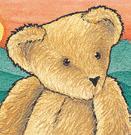
Kid’s age: 11
You already know your children best, and you will find a way.
It becomes easier, as your family finds its own rhythm.
Focus on connecting with your children, before you start educating them.
You don’t have to do it all by yourself. Have the courage to ask for help.
Here are some good resources: oakmeadow.com, globalvillageschool.org, enkieducation.org.
LILA HAMEL
Waterbury
Kids’ ages: 12 and 15
Each one of us has a time of day when we’re at our best. It’s our prime time for getting things done. We hear some individuals referred to as “morning people” and others as “night owls.” Figuring out what hours of the day our children are at their best will help us engage their minds and interest, and lessen frustrations. Yes, it can interfere with our own rhythms. Understanding each person’s needs can help us adapt to what will work best for our family.
Subjects can work better at certain times of the day. In our family, English/ language arts/writing are better done in the morning, and math right after lunch and a good break. We also often do science and history in the evening. We try not to be on screens until late in the morning, too.
Having breaks every two to three subjects is a great way for our children to also do other educational things, like exploring personal interests and getting outside. Many things contribute to our whole person. Our kids are no different. K
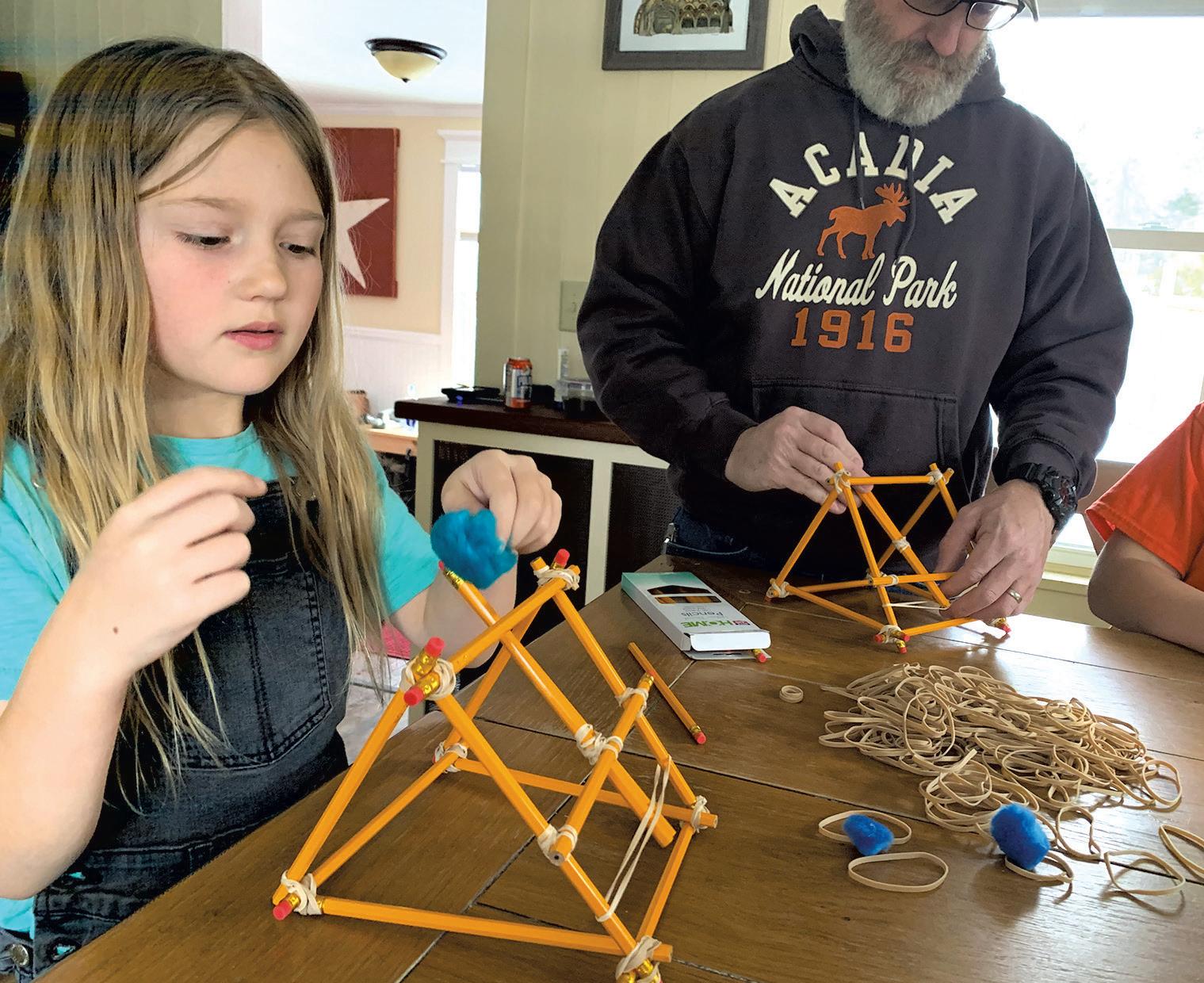
 PHOTOS BY SAM SIMON
PHOTOS BY SAM SIMON
Sam and Erinn Simon, frequent Kids VT contributors, live in Burlington with their three children, ages 9, 12 and 16. Sam is a professional photographer and also works for UPS — and is now classified as an essential worker under Gov. Phil Scott’s “Stay Home, Stay Safe” order. Erinn owns a cake-baking business, That Cake Stand, which is on hiatus right now. She is also the school chef at Burlington Children’s Space, a childcare center and preschool that is currently closed.
For the past few weeks, Sam has been taking photographs to document his family’s life and the ways it has changed in the time of COVID-19. From afternoon naps to evening walks, his photos provide a window into one local family’s daily existence — and remind us that birthday cake still brings lots of joy. K


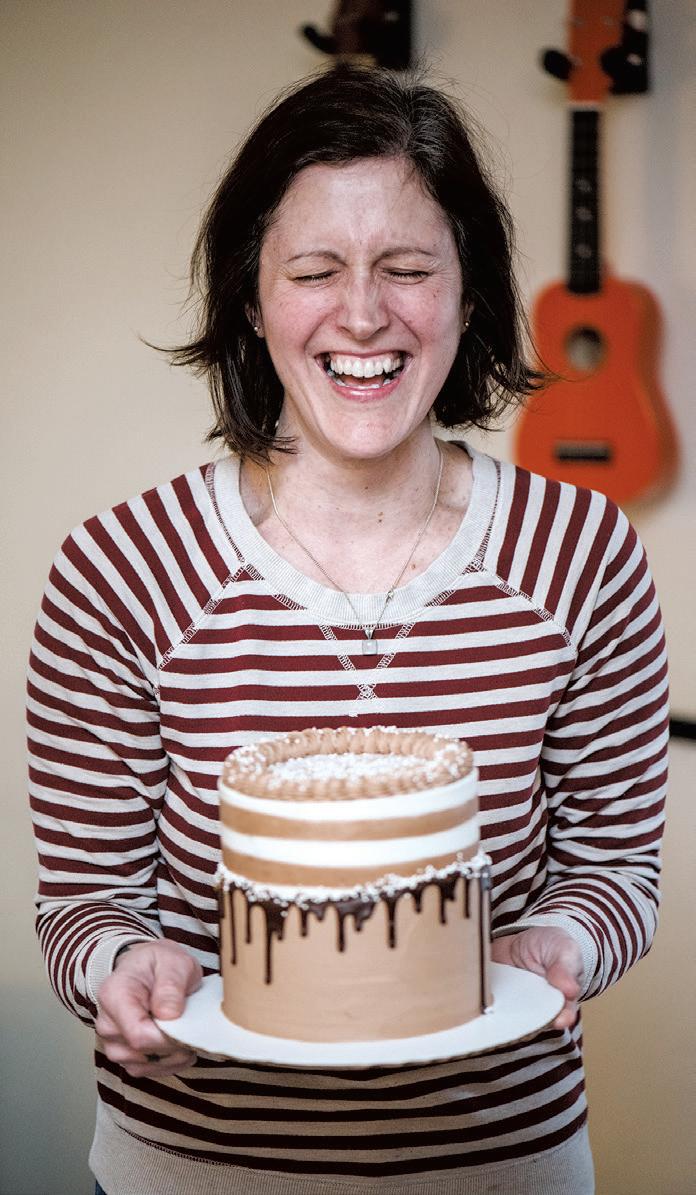
Erinn interviewed her 9-year-old daughter, Sadie, about what it’s like to stay at home.
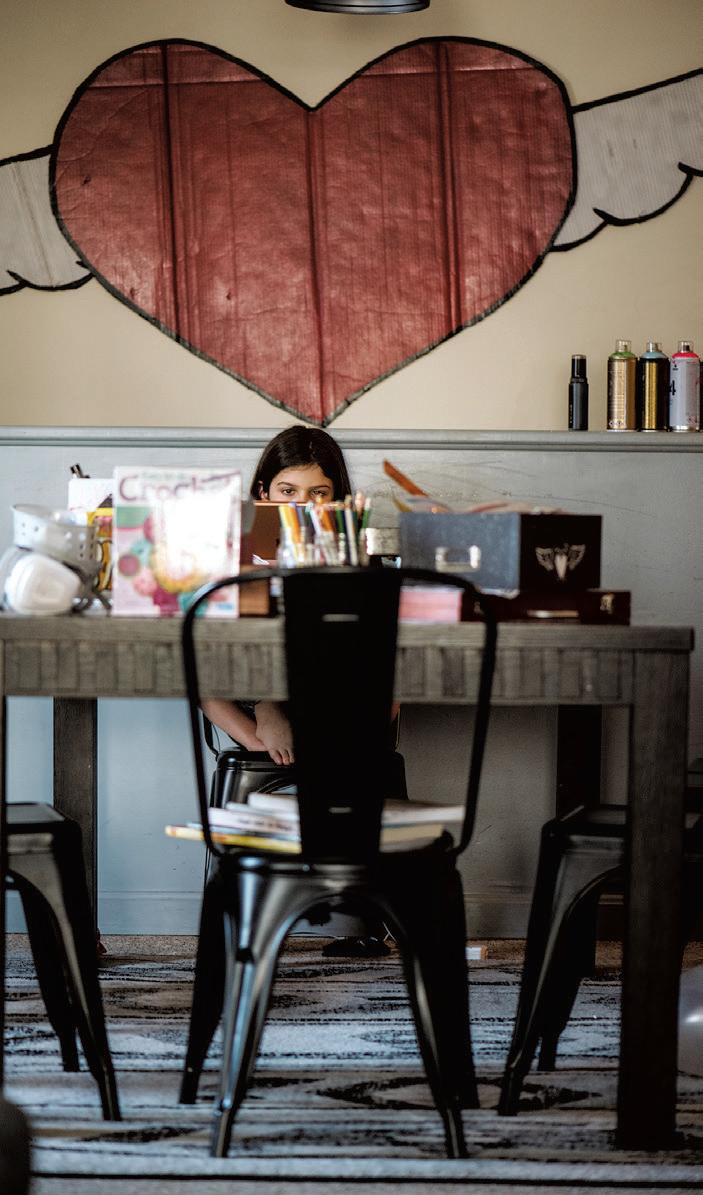

Erinn: So, things have changed a lot in the last few weeks! We’ve all been trying our best to get used to social distancing. What’s something good you can think of about being at home so much, and not having school?
Sadie: Well, I’ve been going out into the woods with Dad more, to boulder.
Erinn: That is definitely good! What would you say is the hardest thing about it?
Sadie: Not seeing my friends. Oh! And that you finally said I can get my hair dyed lavender, and now we can’t go [to the salon] to do it!
Age: For boys in grades K - 10
Location: North Hero, VT
Hours: 1 and 2 week sessions
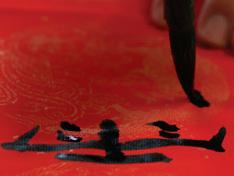
Day and overnight camp on Lake Champlain. Campers build skills, a sense of values, and have fun! campabnaki.org

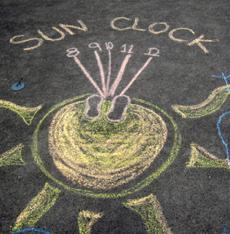
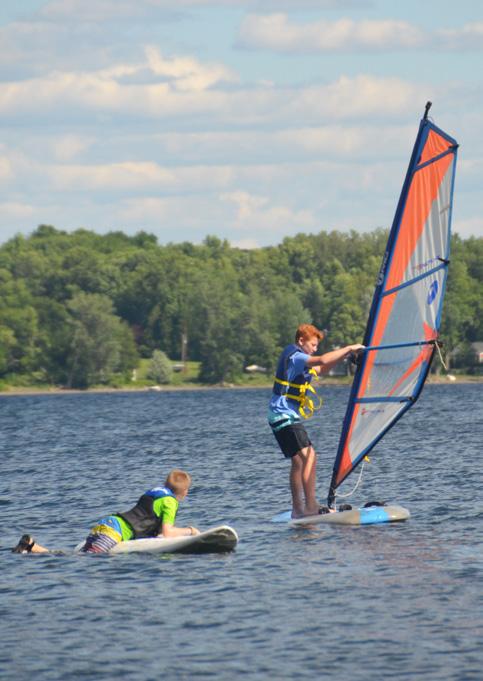
Age: For kids in grade K - 6
Location: 4 area communities

Hours: 7:30am – 6:00pm
Full-day, coed summer day camp with 3 and 5 day options in Essex, Georgia, Underhill, and Waterbury.


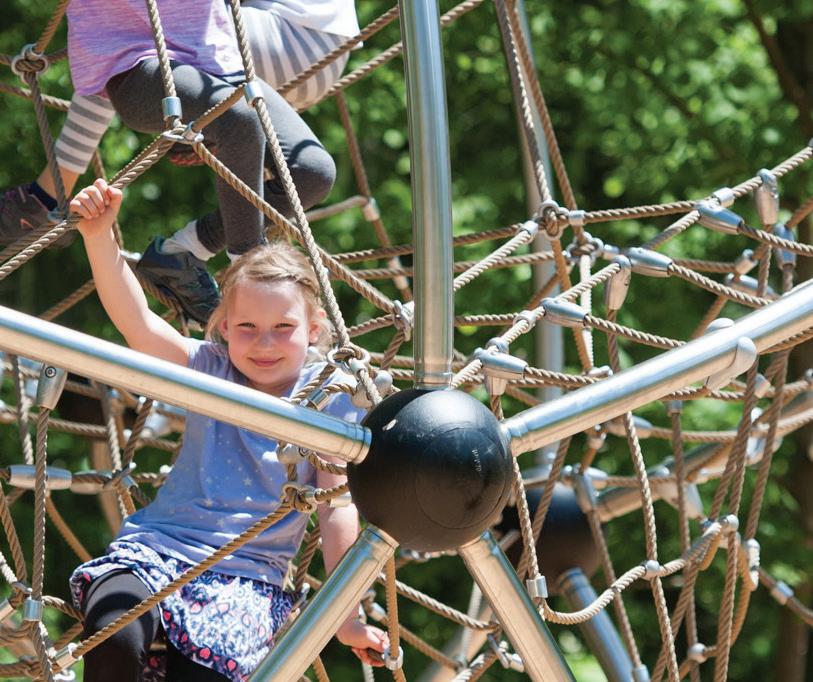
136 Locust Street, Burlington, VT 862-6696
Age: For girls ages 8-14 Location: Burlington
Hours: 8:00am – 5:00pm
A camp to Inspire Girls in Nature, Technology, and the Environment on the shores of Lake Champlain in Burlington.
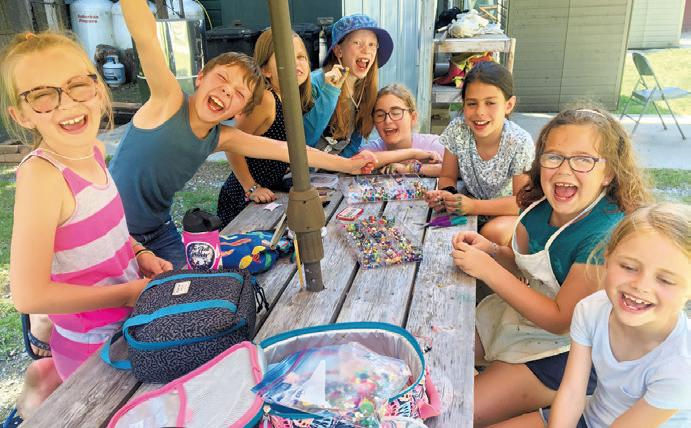
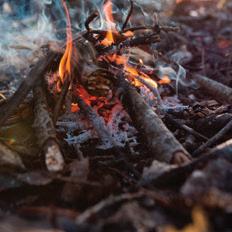


Age: For kids in grade K - 6
Location: Fletcher Free Library
When: June 15 -19, 8:30am –5:00pm
Campers will participate in fairytale-themed activities and the library’s summer challenge.


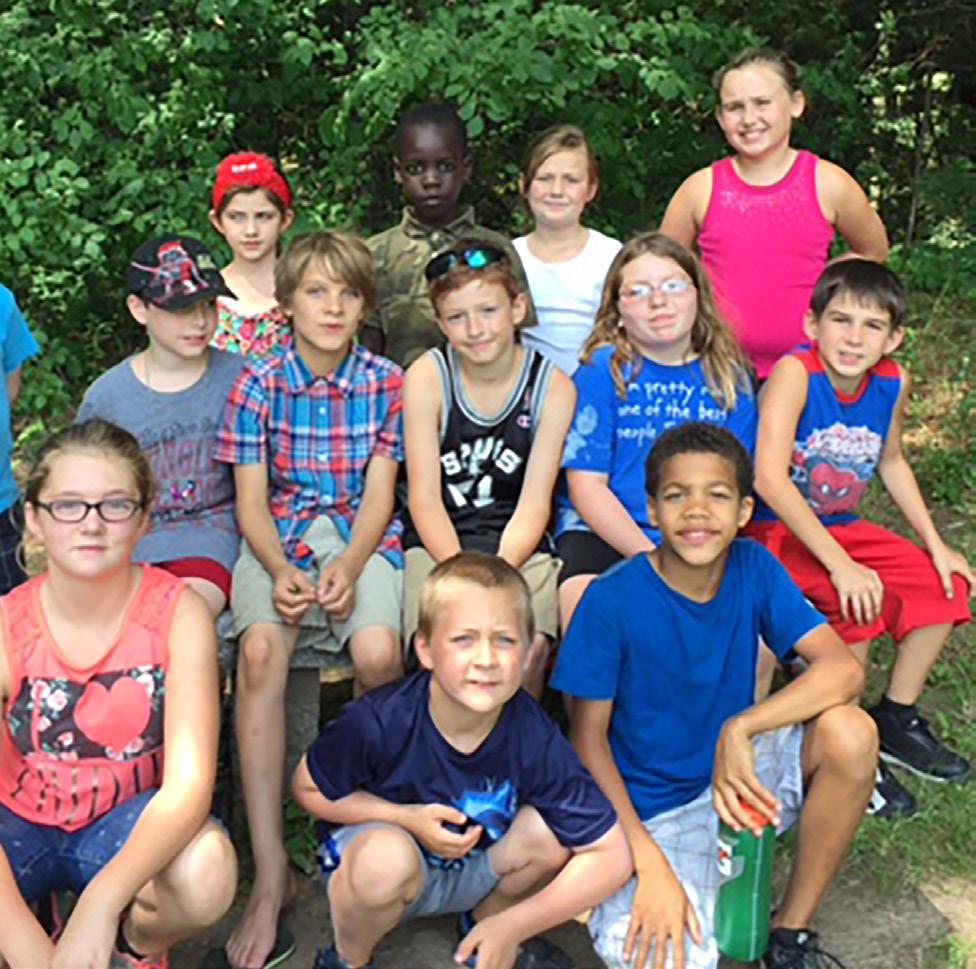
Age: For kids in grades 3 - 8 Location: Burlington















Hours: 8:00am – 5:00pm
This sports-focused camp will teach leadership and teamwork through activities like soccer, basketball, baseball, and archery.

For more information about Y summer camps, and to register today, visit
gbymca.org/camp
At press time, it’s unclear how overnight and day camps will be affected by COVID-19. On March 27, the American Camp Association stated that it is “developing guidance and resources to help camps be the best possible public health partners this summer.” We’re hopeful that camps will find ways to bring joy to kids during these uncertain times.
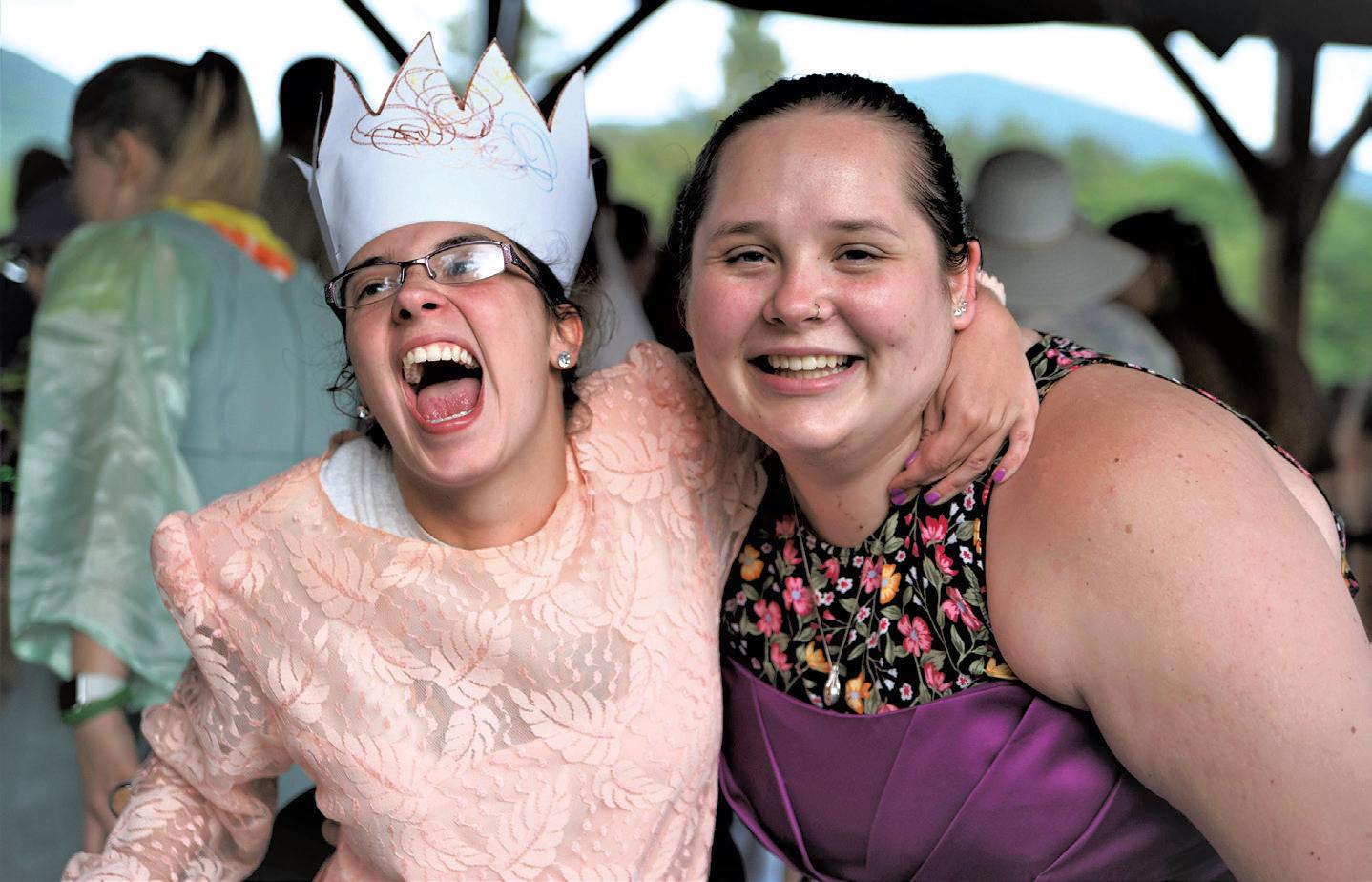 BY ALISON NOVAK
BY ALISON NOVAK
Almost a century ago, Rev. Walter Thorpe and his wife, Vena, purchased a 100-acre farm in Goshen, on a ridge of the Green Mountains. After using the property as a family summer home for several years, Thorpe decided the site would be the ideal place for an overnight camp.
Thorpe ministered at summer camps in the Northeast and was struck by the fact that they catered only to affluent, healthy children. He resolved to create a place where lower-income children with physical disabilities could enjoy the same simple pleasures.
In the spring of 1927, Thorpe borrowed $200 from the First National Bank of Brandon and demolished existing buildings on his property. Between mid-April and July 1 of that year, with the help of several workers, he built housing and a washhouse for 75 campers, and converted an old henhouse into a dining hall.
That summer, 17 girls attended the camp: one from Vermont and the rest from Brooklyn, N.Y., and Boston and Springfield, Mass. Walter and Vena ran it, along with one of their daughters and a nurse. Fifteen of the campers had paralysis caused by polio — the New York City polio epidemic occurred in 1916. Another suffered from bone tuberculosis, and one had a congenital hip condition.
In the following years, enrollment grew steadily; in 1932, a boys’ camp was established. Though Walter died suddenly in 1933, the camp that bears his name has endured to this day.
While some things have changed in the 93 years since Camp Thorpe’s inception, others have stayed the same. The majority of today’s campers have developmental disabilities rather than solely physical ones — ranging from autism to Down syndrome to cerebral palsy. As a result, the site now serves both children and adults, the majority of them from Vermont. The 200 to 250 campers who come each summer for one- or twoweek sessions range in age from around 12 to 79. Some have been attending camp every summer for three or four decades.
“We love our people,” said current director Heather Moore, explaining why participants never age out of Camp Thorpe. “There wasn’t a reason to say, ‘You can’t come back.’”
Some campers’ special needs necessitate a one-on-one aide, which the camp can help set up. Otherwise, the ratio of counselors to campers is 3-to-1. The large number of staff members and the lengthy application form that caregivers fill out prior to arrival allow for individual needs to be met. Moore recalls a time last year when a camper who was afraid of the dark refused to leave the dining hall. The staff looked up her application form and found that she really liked “Scooby-Doo.” So Moore pulled up the “Scooby-Doo” theme song on her phone, and a group of staffers were able to coax the camper back to her bunk.
Members of the current camp leadership have ties to the founding family. Lyle Jepson and Martha Heath, copresidents of the camp’s board of trustees, were both married to descendants of Walter and Vena Thorpe. (Both are now divorced.)
Jepson, who was director of Camp Thorpe from 1992 to 2014, said that in its early years, the camp was “really a family volunteer effort,” and over the years, it has had to more clearly define its mission
and “become more businesslike” to raise funds in the competitive nonprofit arena and attract new campers.
Societal norms have also evolved, continued Jepson, so that now inclusion of those with special needs into the mainstream population is often favored over having a space exclusively for those with special needs. However, he believes that campers benefit from being with others who have similar issues for a finite period of time. “I don’t know that others who don’t have a special need realize what it’s like to go through life with that special need,” he said. Activities at Camp Thorpe, like dance parties and skit nights, give campers the opportunity “to just have a good time and get outside themselves in a safe, caring environment.”
And the location is “incredible,” said Heath. “You’re up in the hills of Goshen; the Green Mountains and the Long Trail are behind you on one side; the Adirondacks are visible down in the valley. It’s just a magical setting.”
The 171-acre campus boasts 25 cabins and plenty of wide-open space for activities. There’s a stocked pond for fishing, a pool with a gradual slope to accommodate those with physical limitations, a basketball court and a one-mile
paved walking loop that winds through the woods. Last summer, the camp nurse brought therapy goats that campers could play with during nature time. Another counselor brought cocoons that hatched into monarch butterflies.
Many campers do more physical activity than they have in a long time, from walking to the dining hall to participating in evening dances, said Moore: “A really common refrain from caregivers at pickup is that their campers look so much happier and healthier.”
Yami Hella’s 15-year-old daughter Alana has been going to Camp Thorpe for the past three years. Alana has autism and has difficulty relating to peers and making friends, said Hella, who lives in Ludlow. In the past, she tried other day camps for Alana, but “they’ve never worked out.” But at Camp Thorpe, she “can goof off and be herself.”
Amy Williams of New York City has sent her 12-year-old daughter Sammy to Camp Thorpe for the past two years. Sammy, who is a twin, had a brain hemorrhage at birth and has numerous developmental delays. Williams found Camp Thorpe in an online search. There are not a lot of things and people that Sammy remembers, said Williams, but she talks about Camp Thorpe all year. And since Sammy’s twin, who does not have special needs, goes to sleepaway camp for most of the summer, Camp Thorpe “gives Sammy a sense of parallel.”
Because of COVID-19, there’s still uncertainty about whether camps will be open this season. “We’re still weighing what the future will look like and continue to monitor the situation closely,” said Moore. “Obviously, we will do whatever is best for the health of our campers. We are deeply saddened at the prospect of camp not running.”
Meanwhile, she’s researching alternatives to overnight camp — volunteer opportunities for the camp community, day programming or even socially distanced s’mores nights. “We very much want to spread the joy that is camp,” she said, “but it just might look different.” K



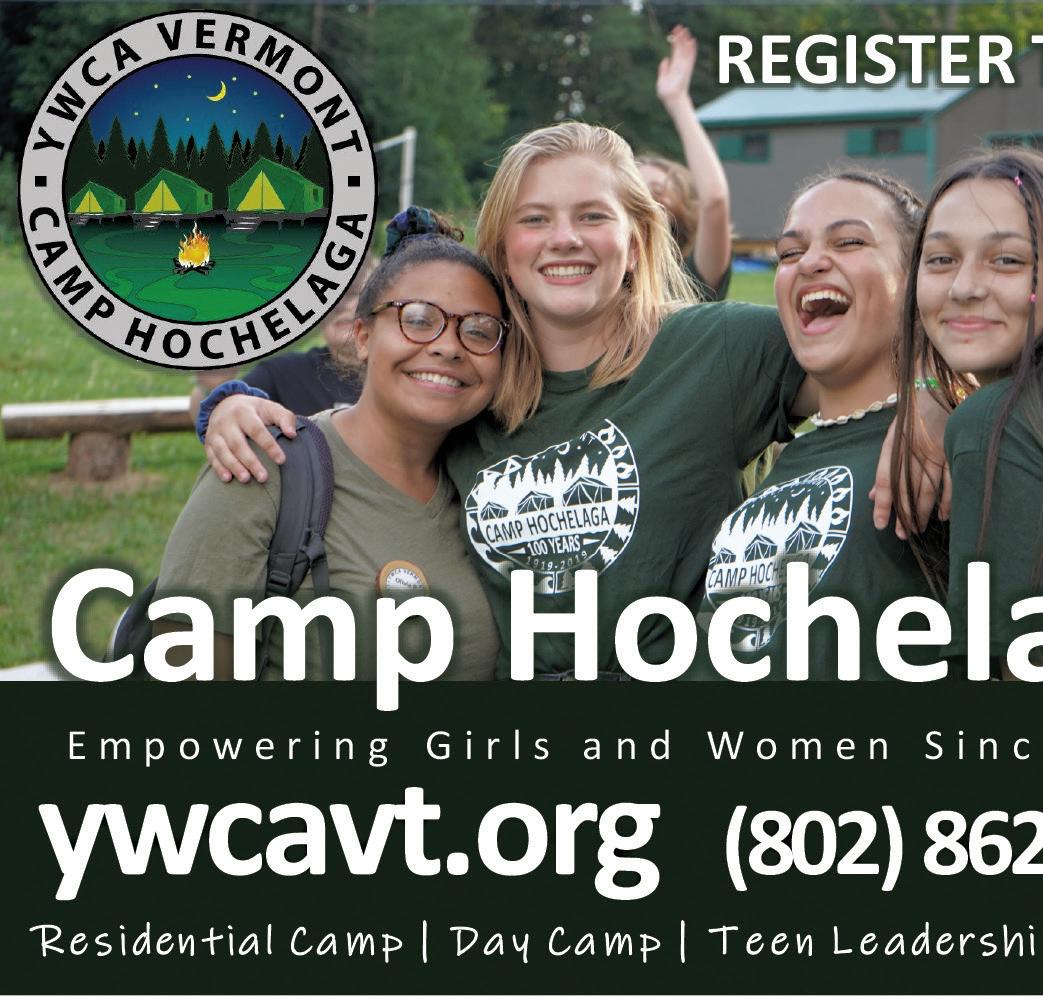





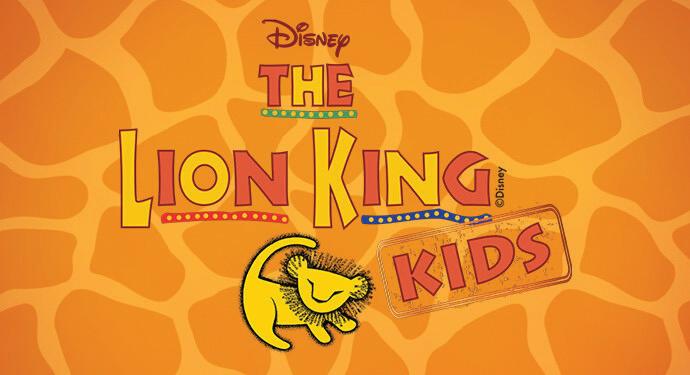
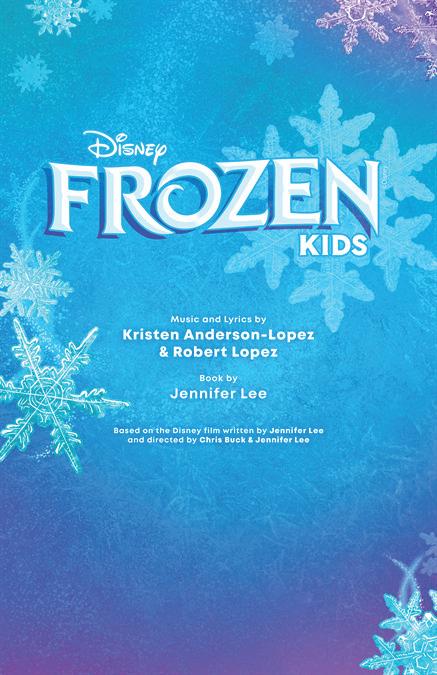








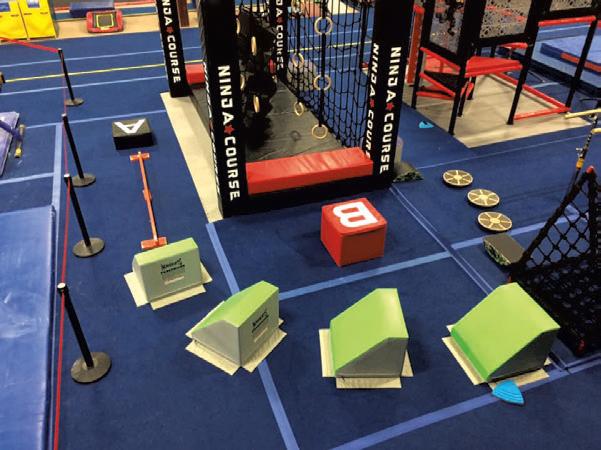
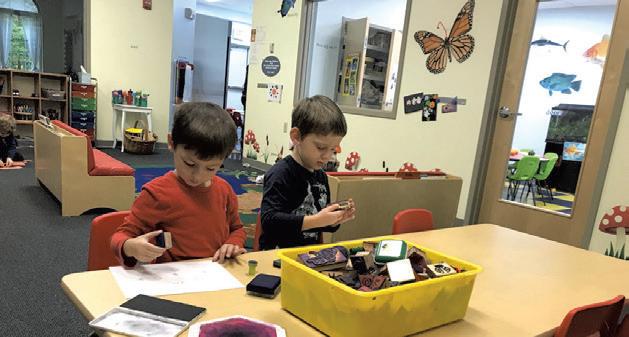
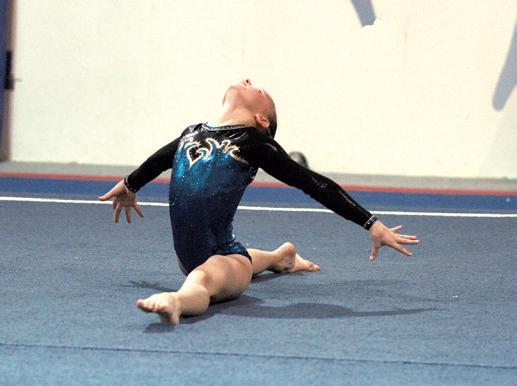





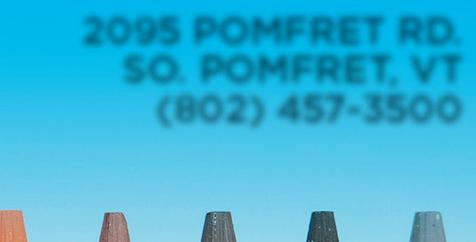




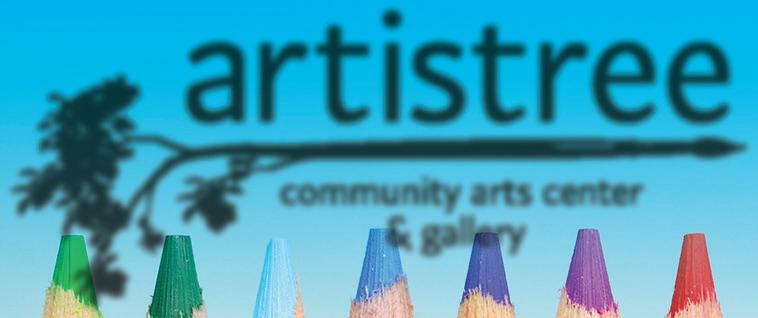


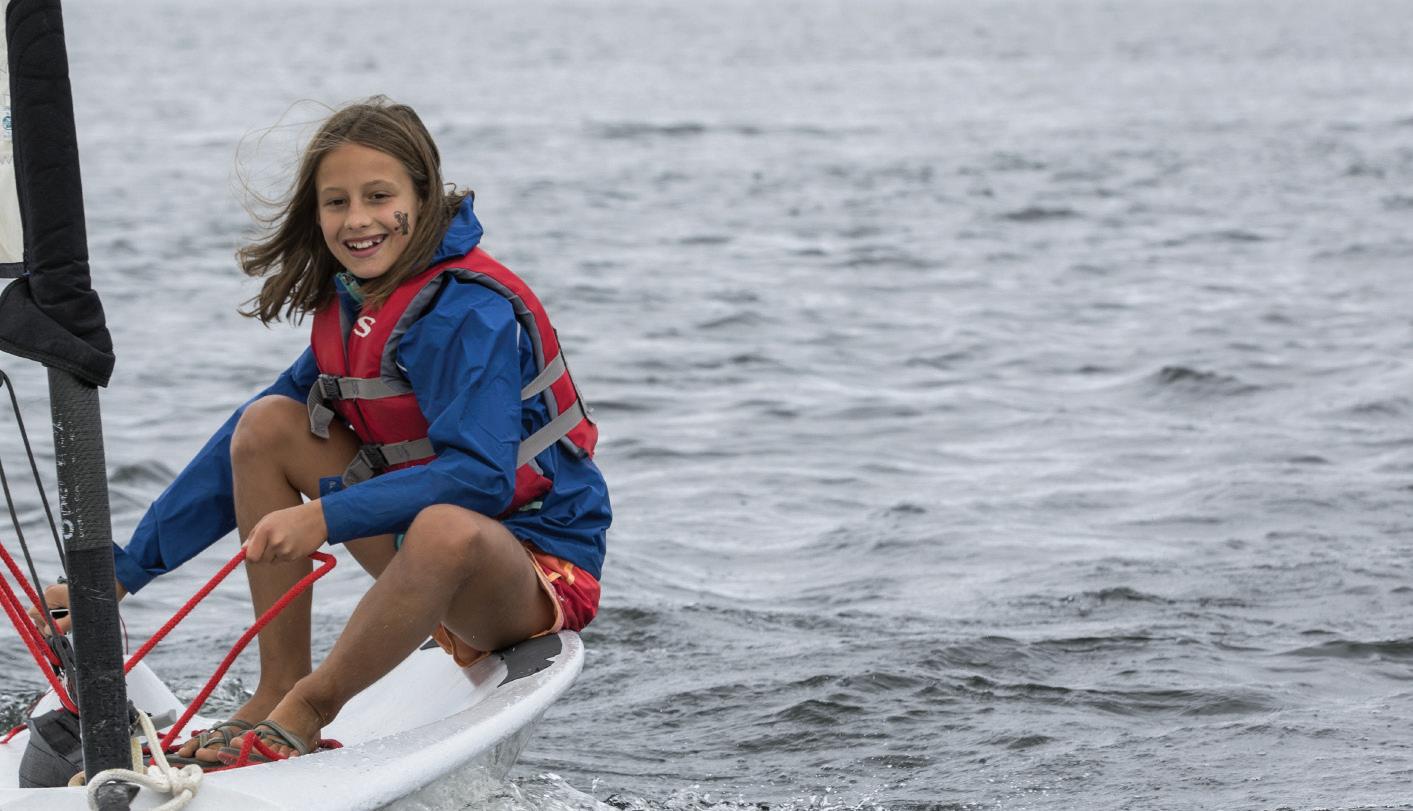













































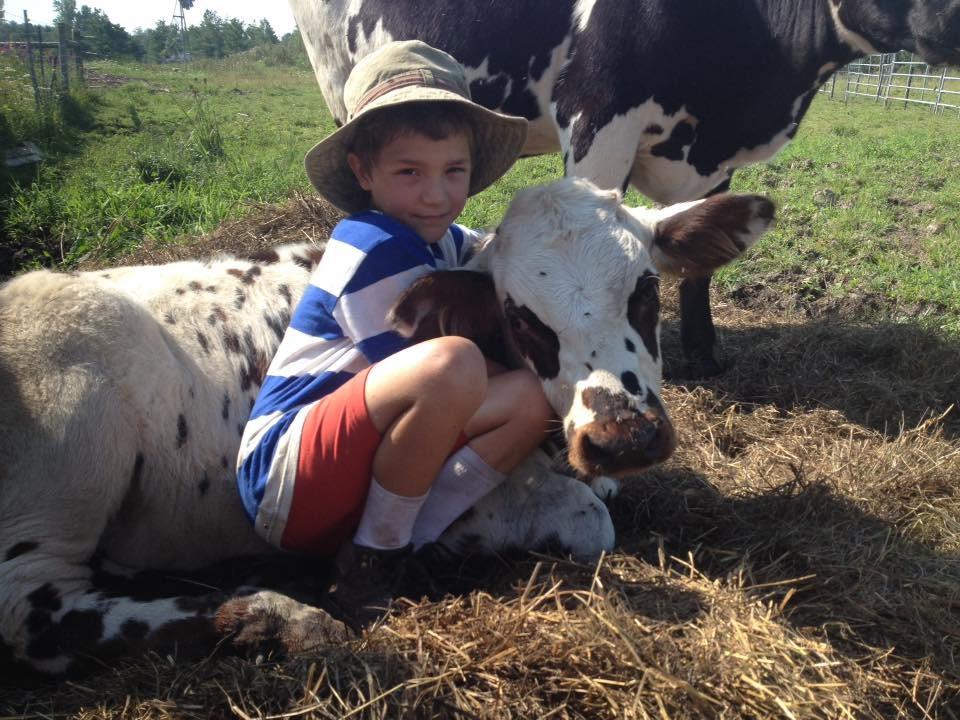
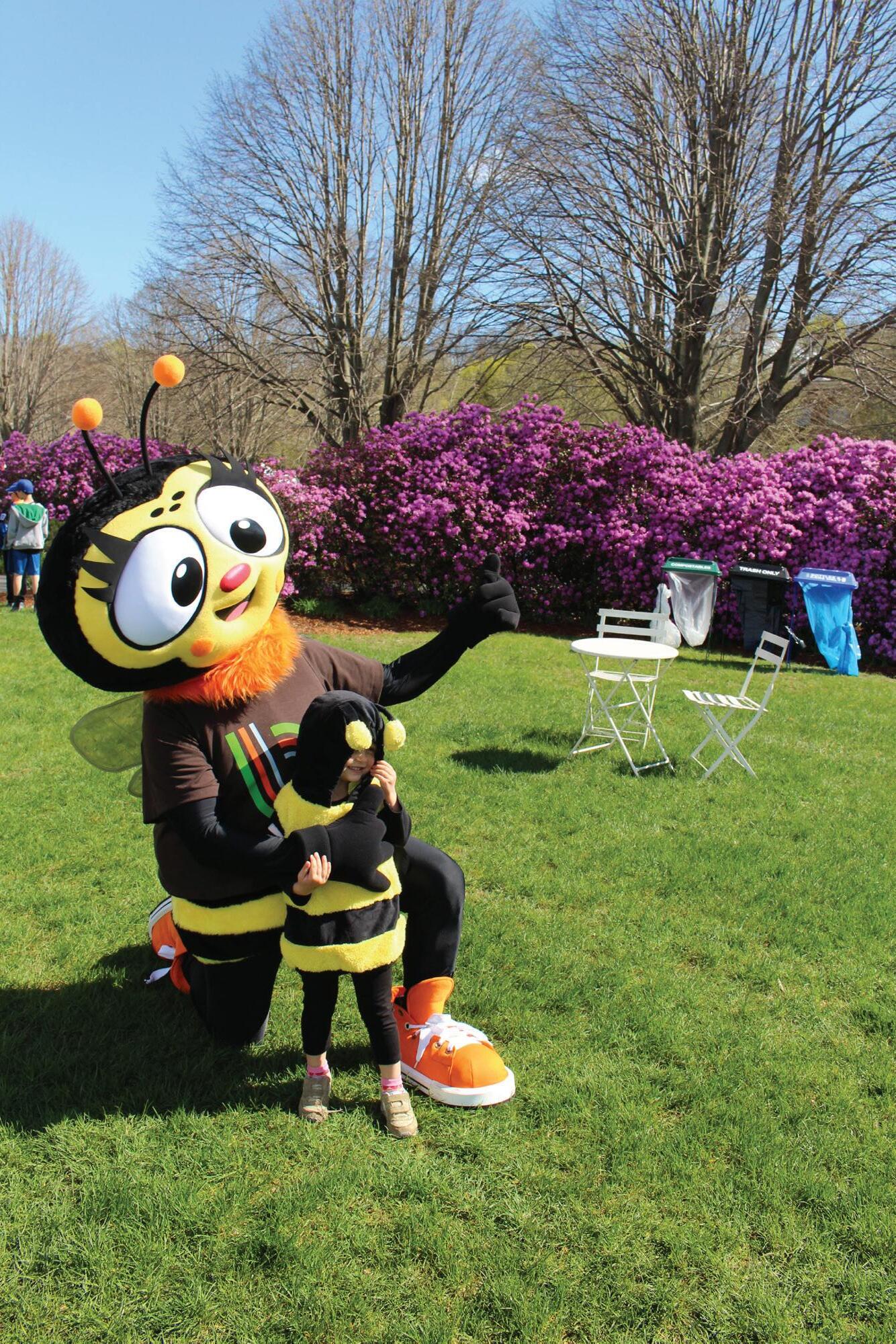

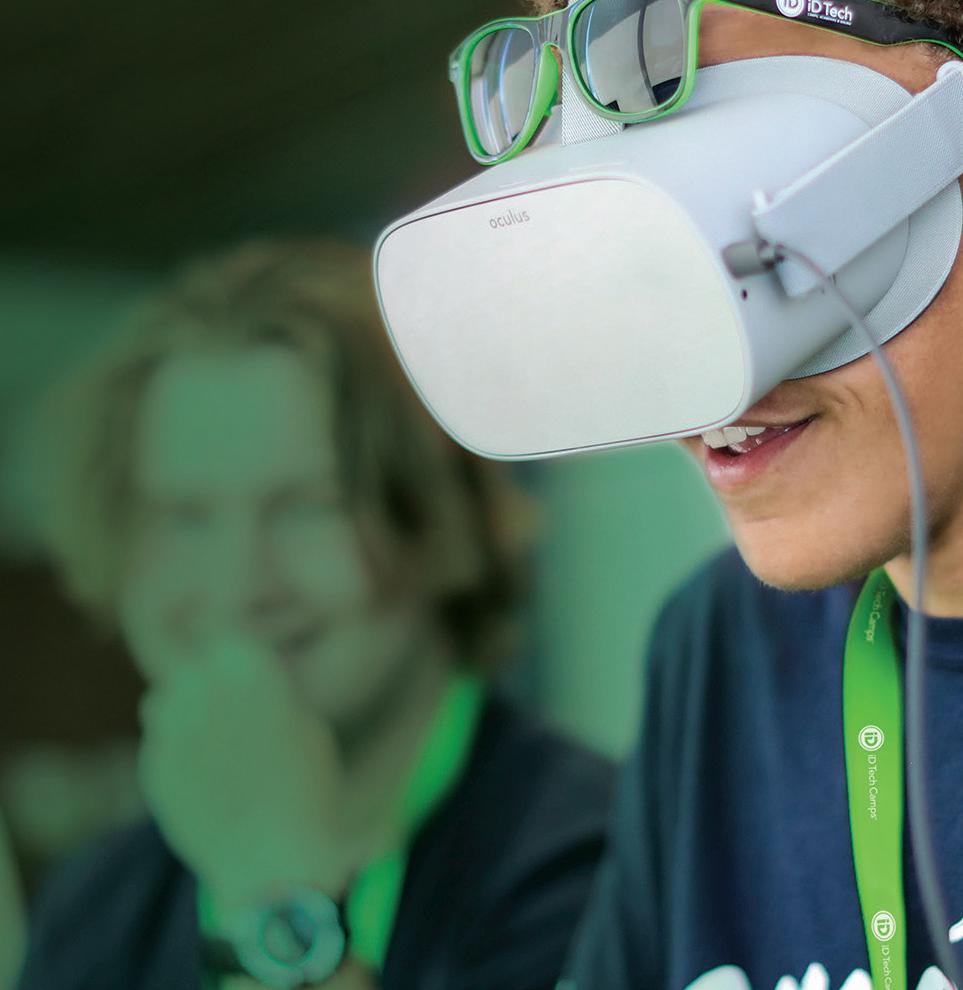
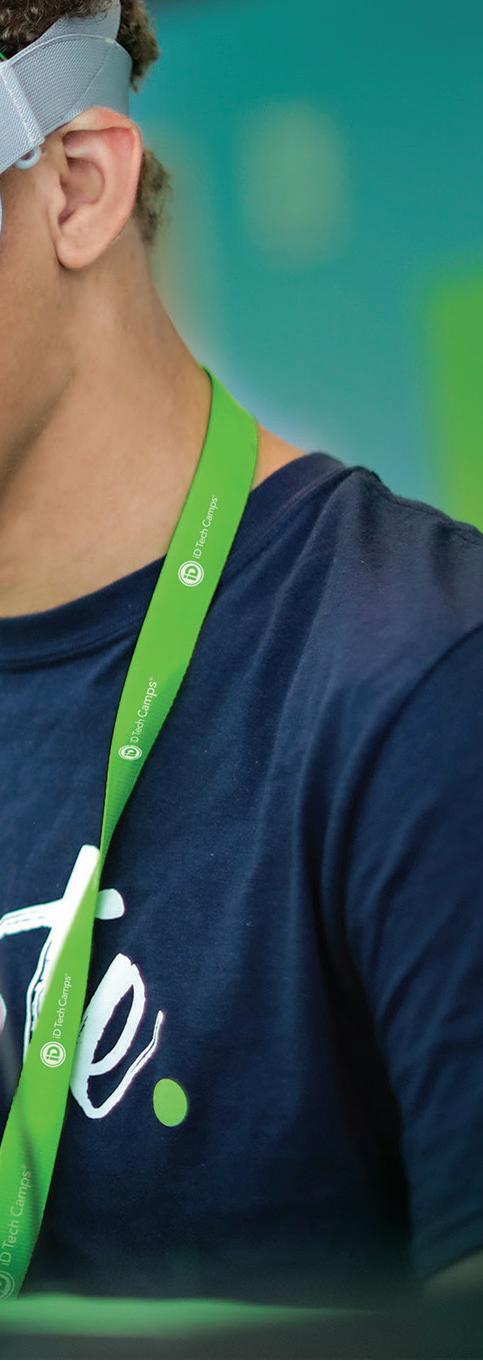

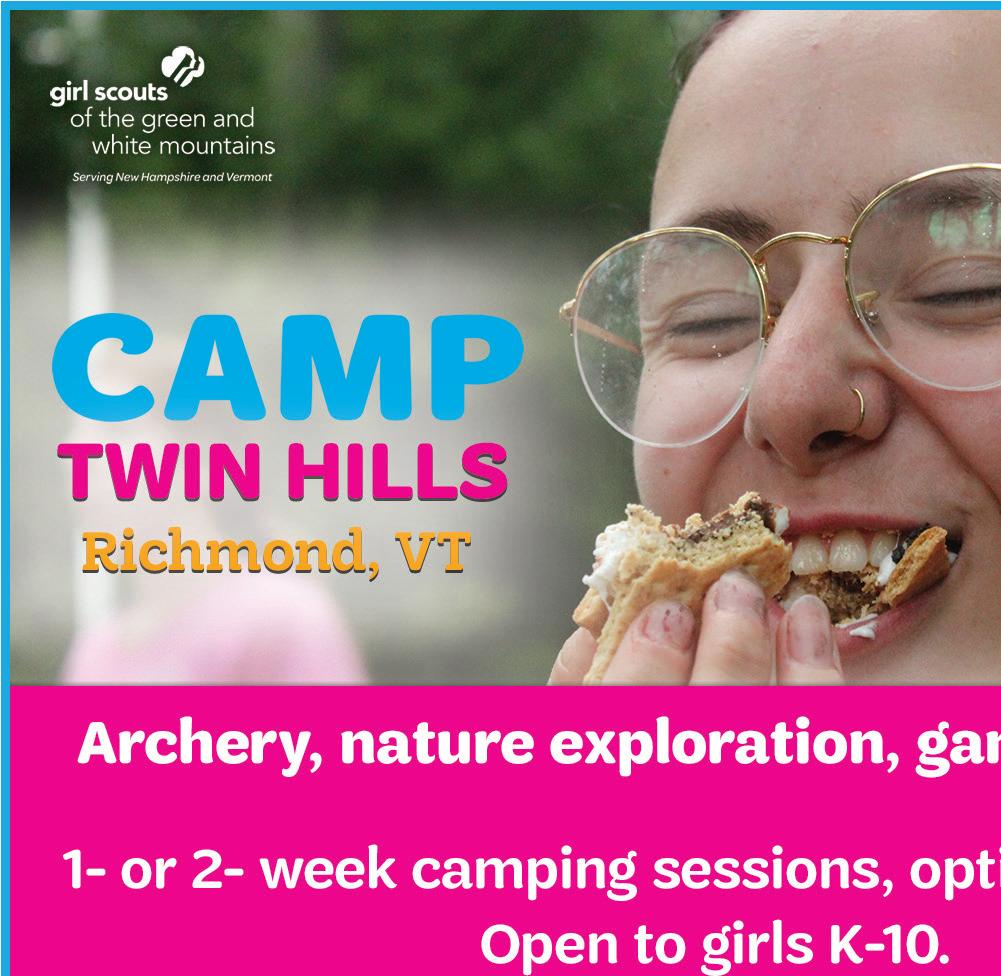


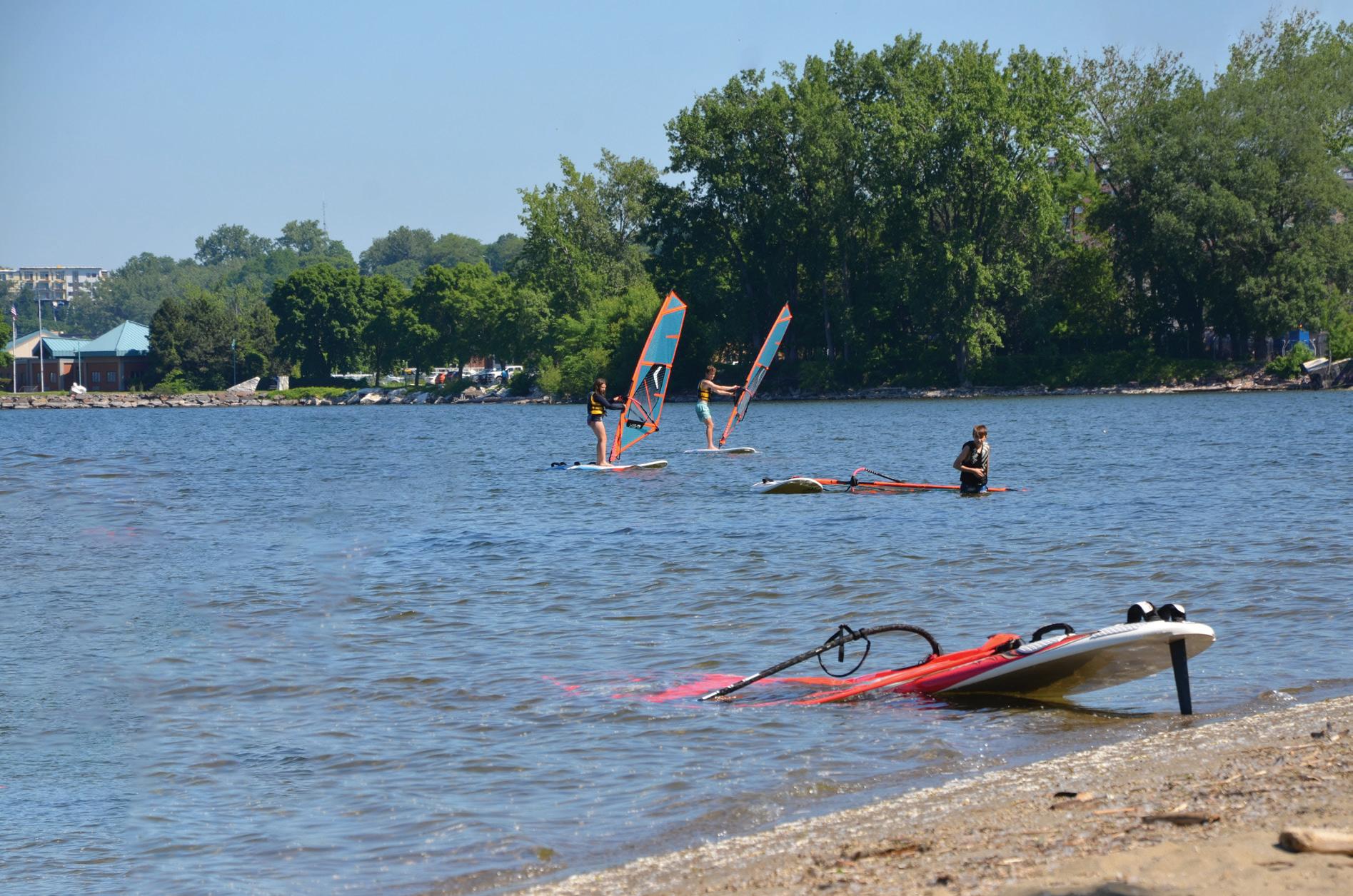
For kids who are wild about animals!
A unique learning experience for children who share one thing in common: their love for animals
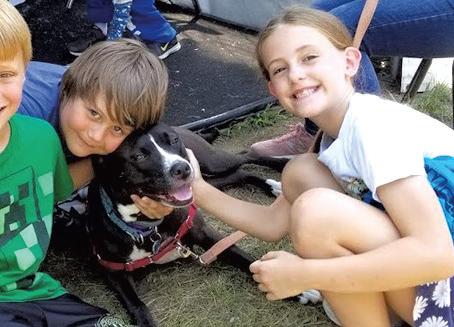
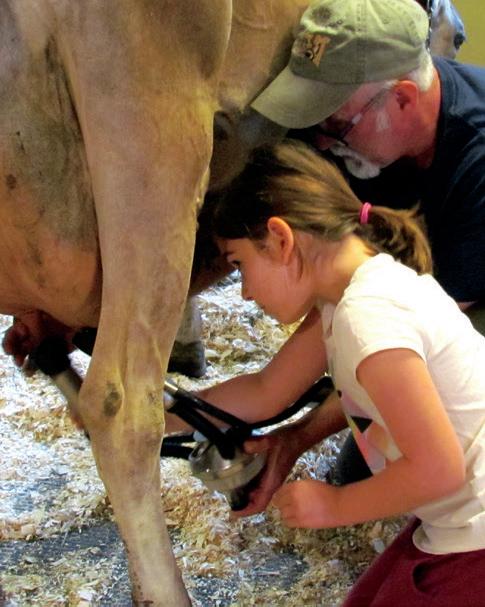

Animal
Kids Ages 5-6: $250
Week 1: Monday-Friday
July 6-10 • 8:30AM - 12:30PM

Summer
Week 2: Monday-Friday
Kids Ages 10-12: $390
Week 5: Monday-Friday
August 3-7 • 8:30AM-3PM
Week 6: Monday-Friday
August 10-14 • 8:30AM-3PM
July 13-17 • 8:30AM-12:30PM

Summer Safari (ages 10-12)

Full-day camp: A few slots available


Animal Welfare

Kids Ages 7-9: $390
Register: (802) 862-0135 x
July 27 – July 31● Aug 3
Week 3: Monday-Friday
Warriors: $250
Monday-Wednesday
Before & after care hours are available.
August 17-19 • 9AM-3PM
July 20-24 • 8:30AM3PM
Register: (802) 862 -0135 x 12 Or visit chittendenhumane.org.

Week 4: Monday-Friday
July 27-31 • 8:30AM-3PM
Scholarships funded by Redducs Foundation


This elevated learning experience is for 13-15 year olds who are motivated to understand and be active in the world of animal welfare.
*This is not your average animal lover’s program! Students will be involved in hands on learning and exploration.
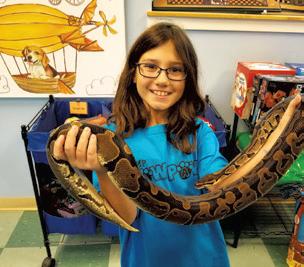

Camp does not just provide a child with a fun experience; it can be life changing.
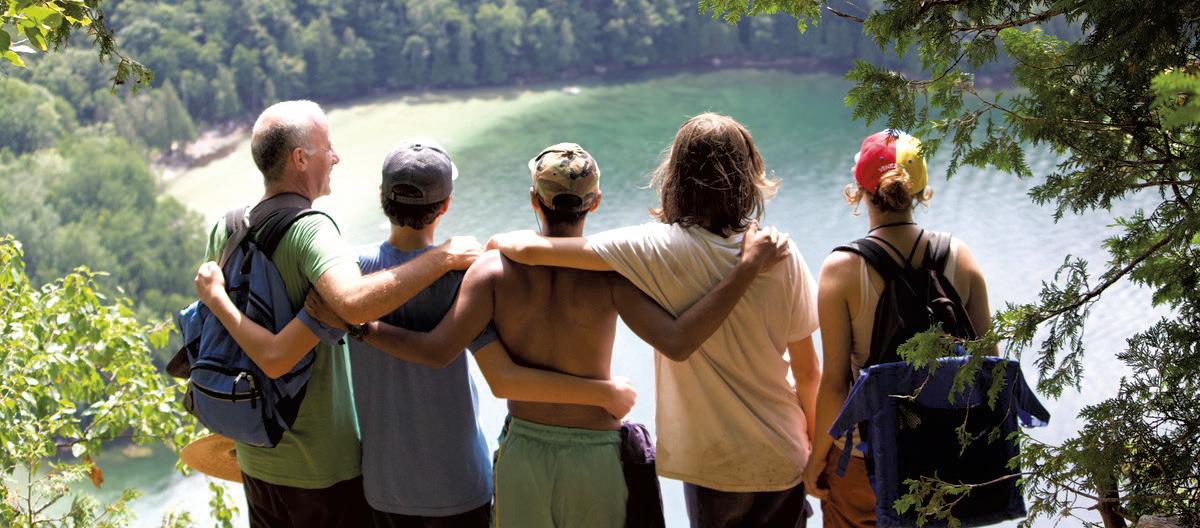
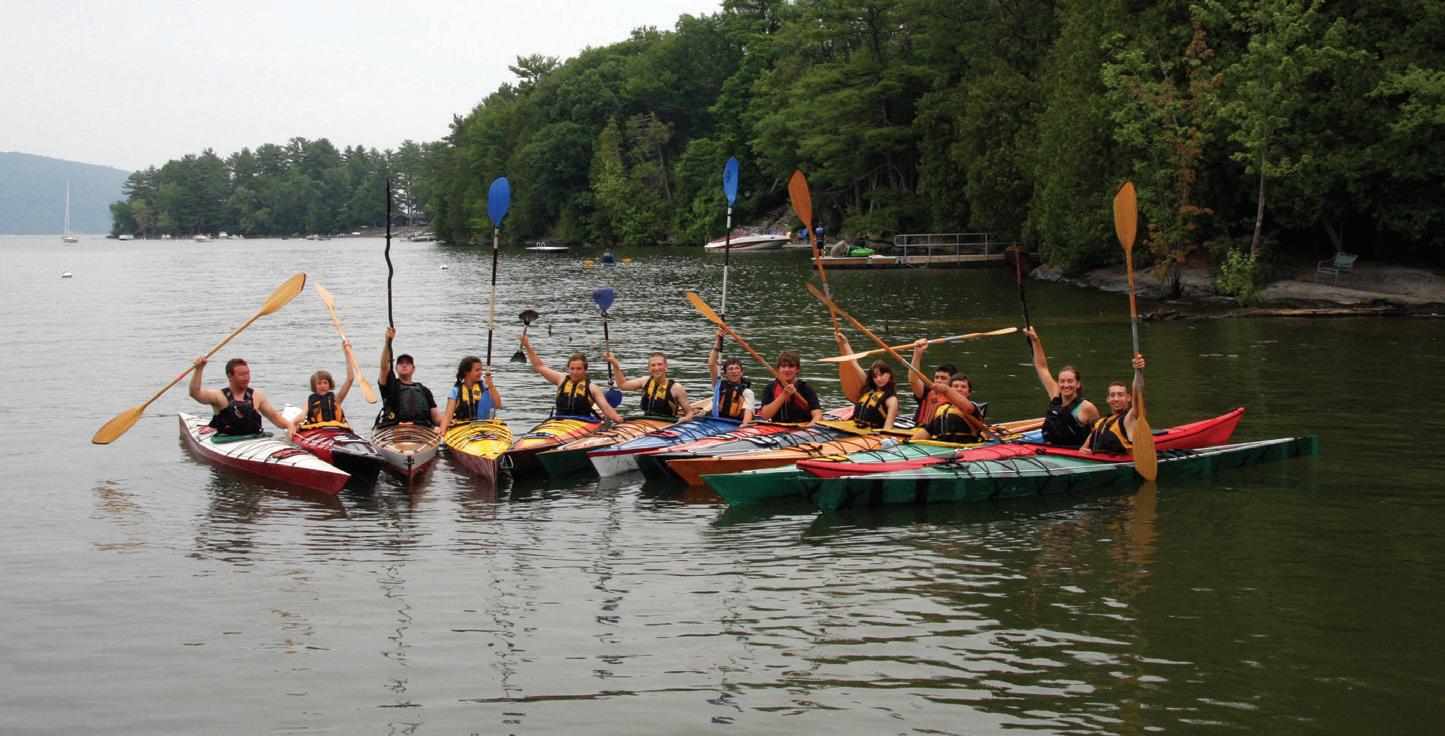
Lessons learned… Independence gained… Responsibility embraced… Confidence developed. All among loving friends, supportive staff, and beautiful nature.
Located in New York’s Adirondack Mountains
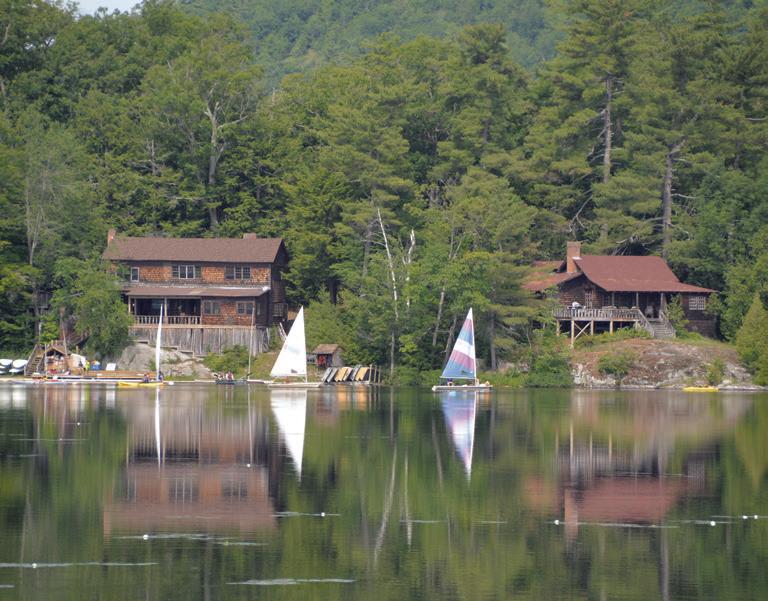


For 116 years - owned and operated by one family

Flynn summer camps spark discovery, collaboration, and joy. We make




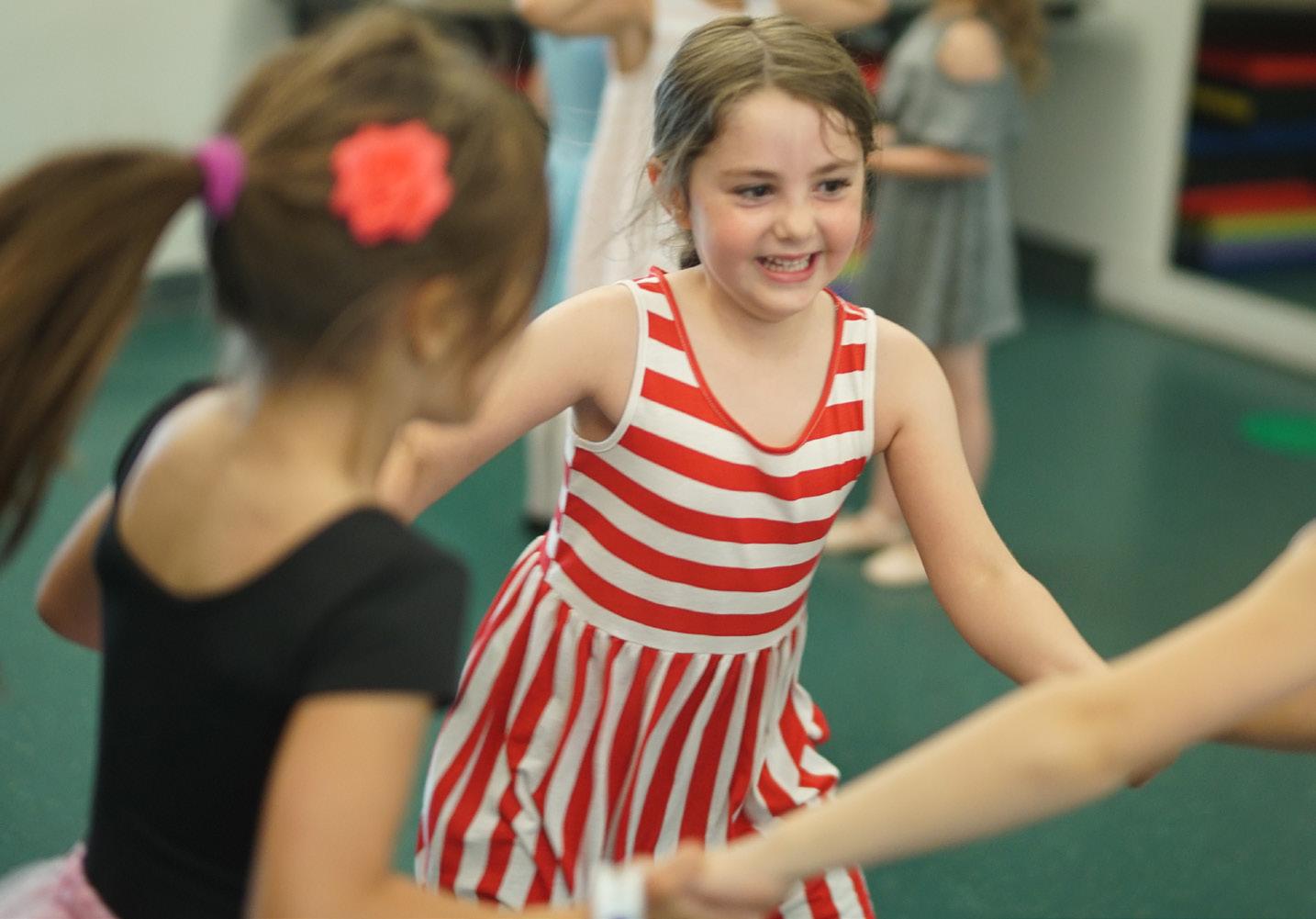
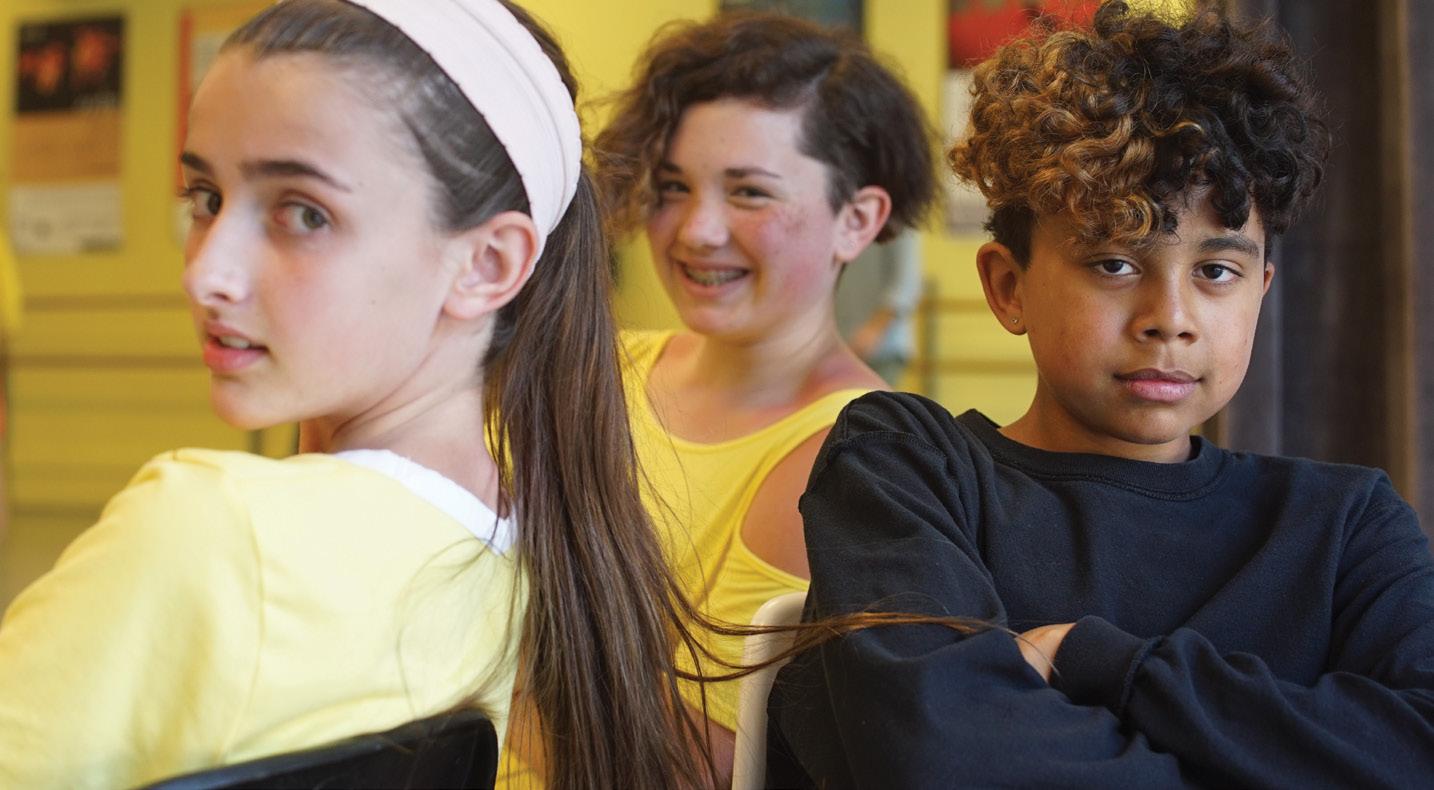
kids, ages 3-20, to participate in the arts.





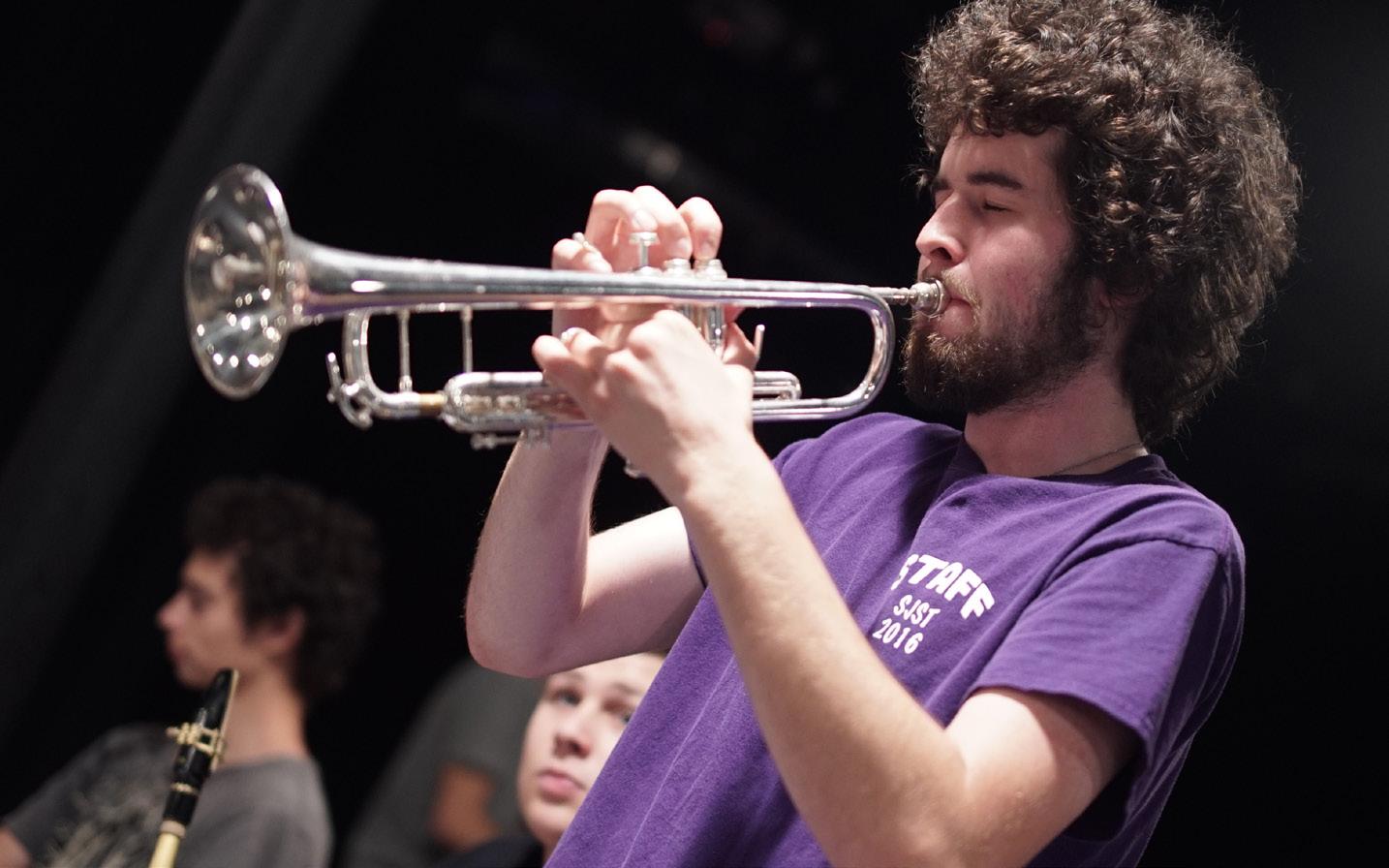


Send Kids VT your works of art electronically this month by April 15. To do so, scan your coloring contest page or take a photo of it with your smartphone and send it to art@kidsvt.com. Be sure to include the info at right with your submission. We will do a random drawing to select three winners to receive yearly memberships to the Fairbanks Museum & Planetarium in St. Johnsbury, and will also publish a selection of entries in the May issue of Kids VT.
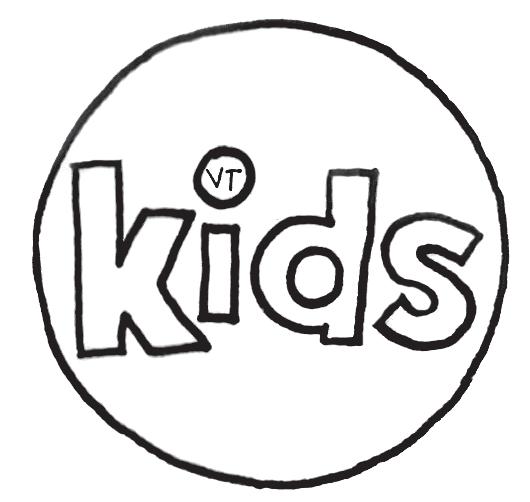

To enter, submit information using the online form at kidsvt.com/birthday-club.
Just give us your contact info, your children’s names and birth dates, and a photo, and they’re automatically enrolled.
The winners of annual family memberships to the Fairbanks Museum & Planetarium are…







ROSE lives in Montgomery and turns 8 on April 9. She is a spunky, creative and funloving kid. She participates in ballet and skis on the Jay Peak Freeski & Ride Team. She loves to spend time with her friends, play baseball and ride her mountain bike. Some of her favorite things include pizza, arts and crafts, and the color turquoise.
This month, we chose coloring contest winners from the entries that were submitted electronically in March. Thanks to all who entered — and apologies that we couldn’t do a proper judging of the contest this month! Seeing your artwork brightens our day, so please send your coloring contests to us via email this month.

AMELIA lives in Colchester and turns 5 on April 10. She is a firecracker who loves riding her bike, camping and playing with her friends. She does hip-hop dance and loves to bust a move! Her favorite sport is bobsledding, and her dream is to drive a bobsled in the Olympics.
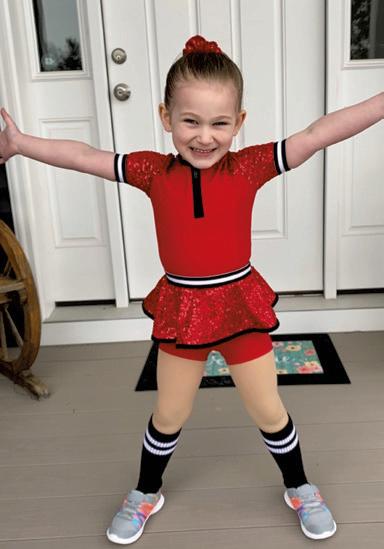
ELLA lives in Fairfield and turns 8 on April 10. She is kind and caring. Some of her favorite activities are snowboarding, playing Minecraft and hanging out with her Maine coon cat, Teddy. Her favorite vacation spot is Disney World.
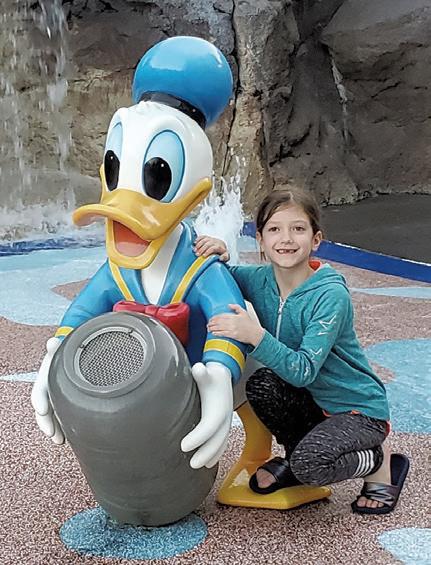
Rose, Amelia and Ella each win a



“FEELING GOOD”
Alister Griffin, 7, North Ferrisburgh
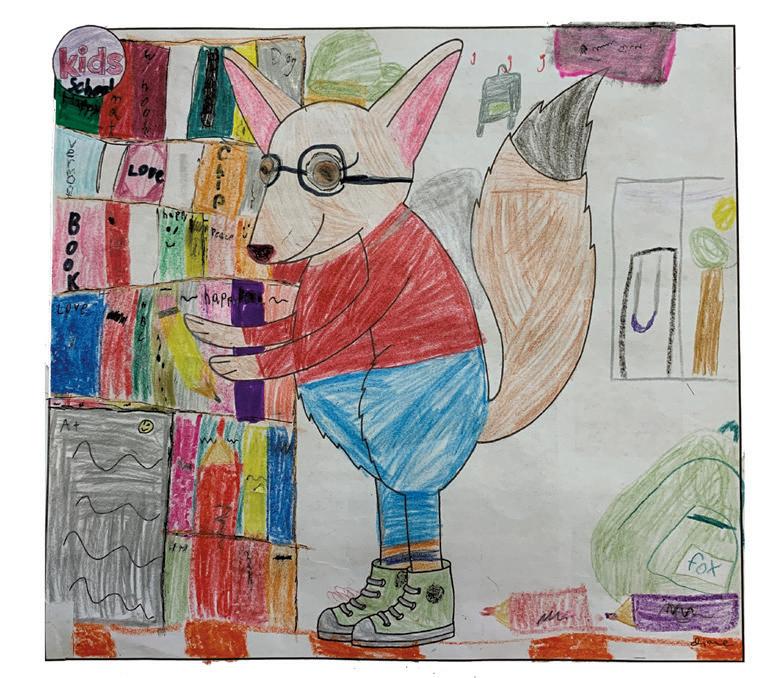
“FOX IN THE WOODS”
Alessandra Thompson, 5, Essex
“FREDDY”

Oliver DePaolo, 8, Hyde Park
“GABRIEL THE FOX”
Zeke Lovitz-Slason, 4, Hinesburg
in the Kids VT Wee-Mail. Visit kidsvt.com/ wee-mail to subscribe today.
“FOXY”
Xavier Many, 8, Swanton
“FOX IN THE WOODS”
Amelia Dabritz, 5, Burlington
“SKI FOX”
Nash Boehm, 5, Burlington
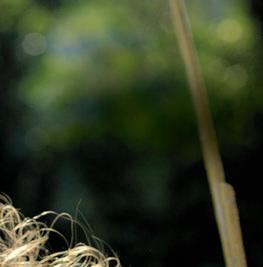
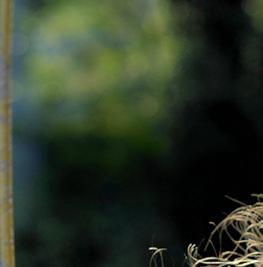
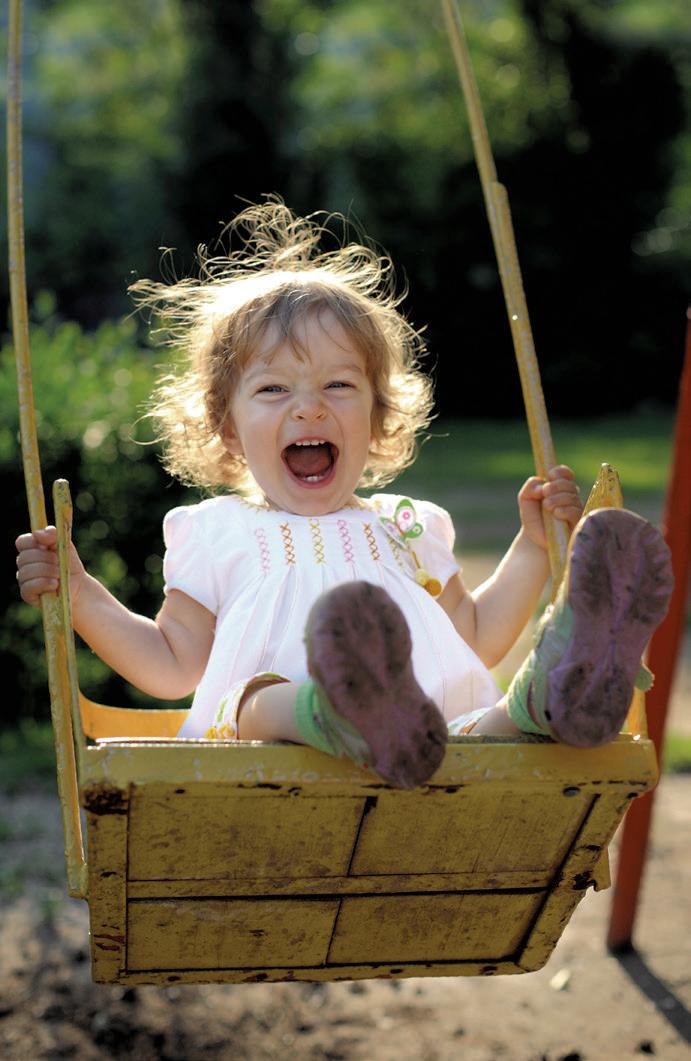
“FOXY FOX, WHAT TIME IS IT?”
Find “Colorful” Brody Edgerley, 5 GEORGIA
Florence Johnson, 7, St. Johnsbury
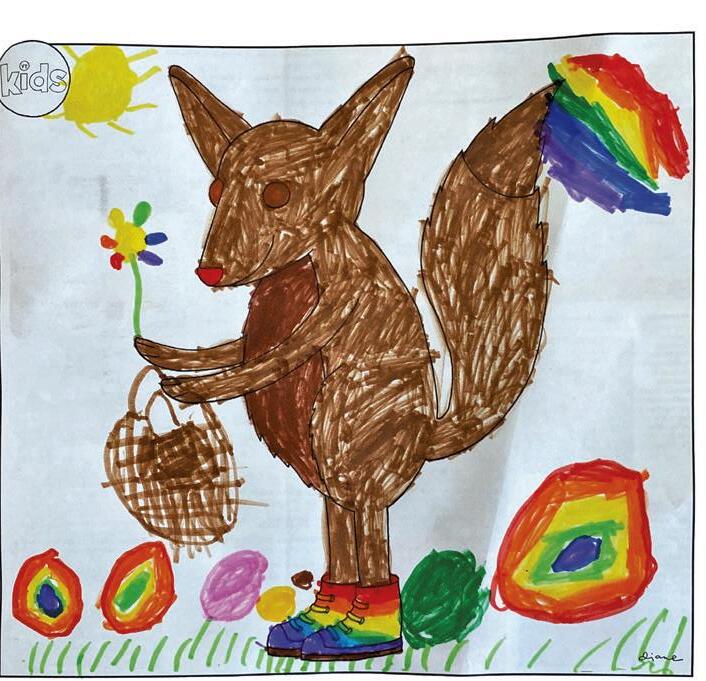
“BABY TREE”
events and parenting 5 & under “Welcome to School Fox” Aili Olson, 8 WINOOSKI
Evelyn Huard, 8, Craftsbury
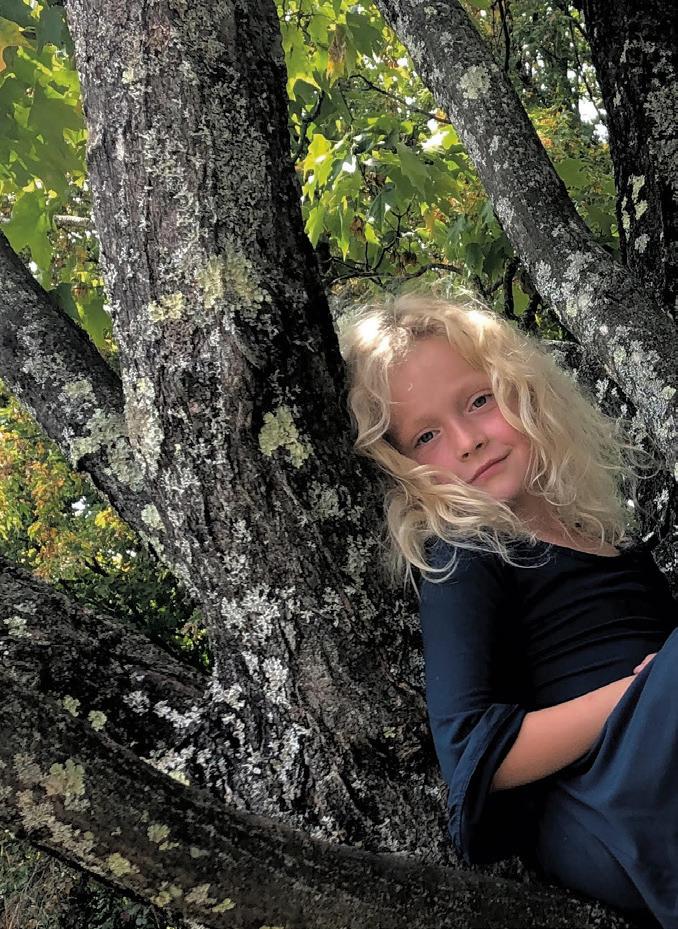
“PARTY FOX”
Viva Cleland, 7, St. George
“PETE THE FOX”
Sakhira Subba, 9, Winooski
Thursday 9 to 12
“FLOWER FOX”
Iris Bogart, 7, Bolton
and 6 to 8 “Spring is Here!” Olivia Neilson, 10 CHARLOTTE
This month, we want to see your writing and drawing talents! We’re so curious about what everyone has been doing in their homes for the last few weeks! Use the panels below to create an original comic that shows what you’ve been doing since your family got the order to stay at home.
SPONSORED BY
Change each letter to the one that comes immediately BEFORE it in the alphabet to find a riddle and its answer. Here’s a copy of the alphabet to guide you:
ABCDEFGHIJKLMNOPQRSTUVWXYZThe letters of these crazy words are all mixed up. To play the game, put them back into the right order so that they make real words you can find in your dictionary. Write the letters of each real word under each crazy word, but only one letter to a square.
Name Age Town Email Phone
Send us your writing contest entries electronically this month. To do so, either scan your comic or take a photo of it with your smartphone and send it to art@kidsvt.com. We will select two winners of $25 gift certificates to the Crow Bookshop in Burlington, which can be redeemed when the store reopens.

You are now ready to solve this month’s Jumble For Kids. Study the picture for a hint. Then play around with the letters in the circles. You’ll find you can put them in order so that they make your funny answer.
Print your answer here:
Title: ANSWERS

We asked parents to send us photos of art created by their kids while they’re staying at home. We loved seeing all the bold, beautiful, creative works of art. Find a selection below.


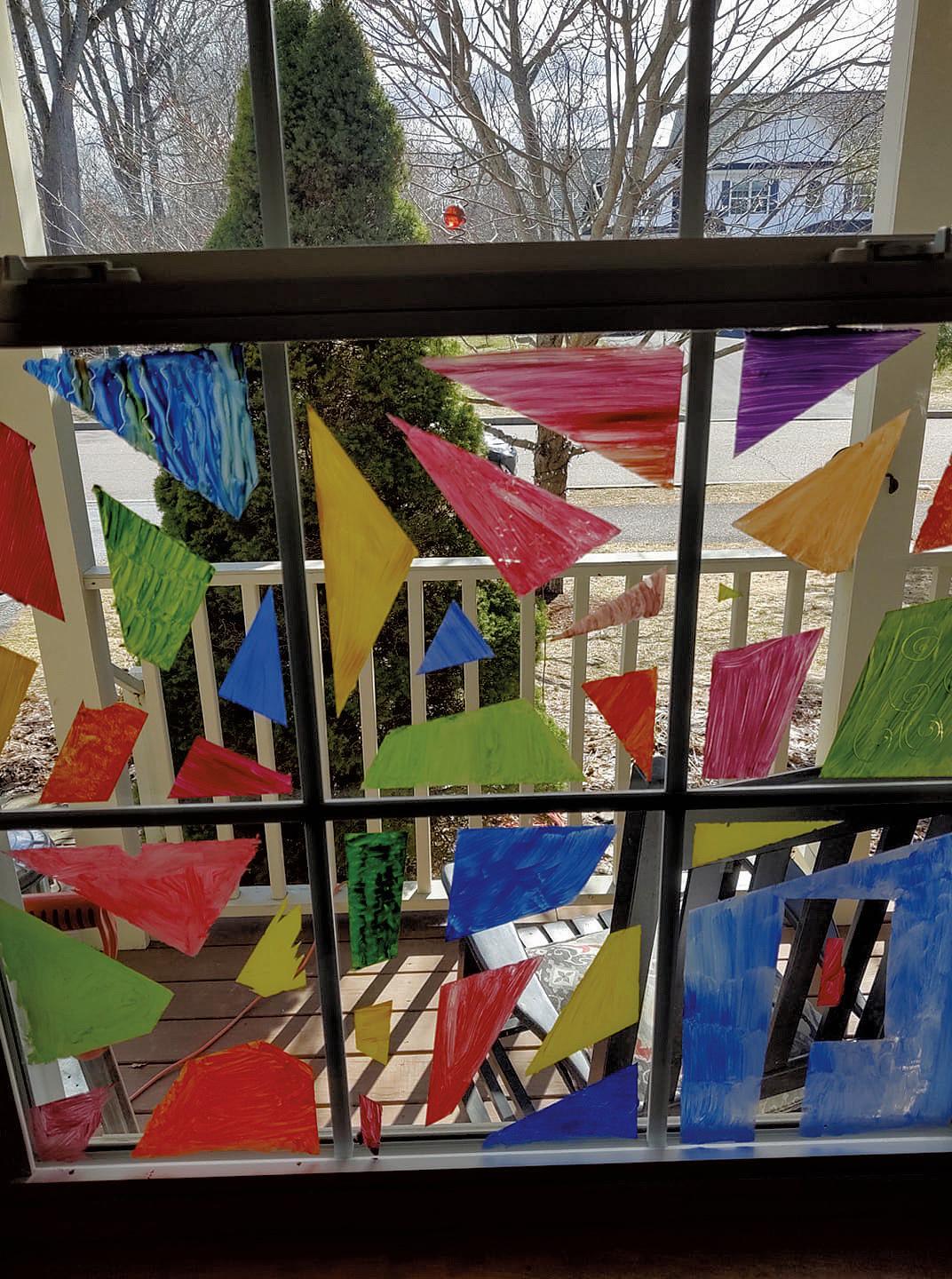
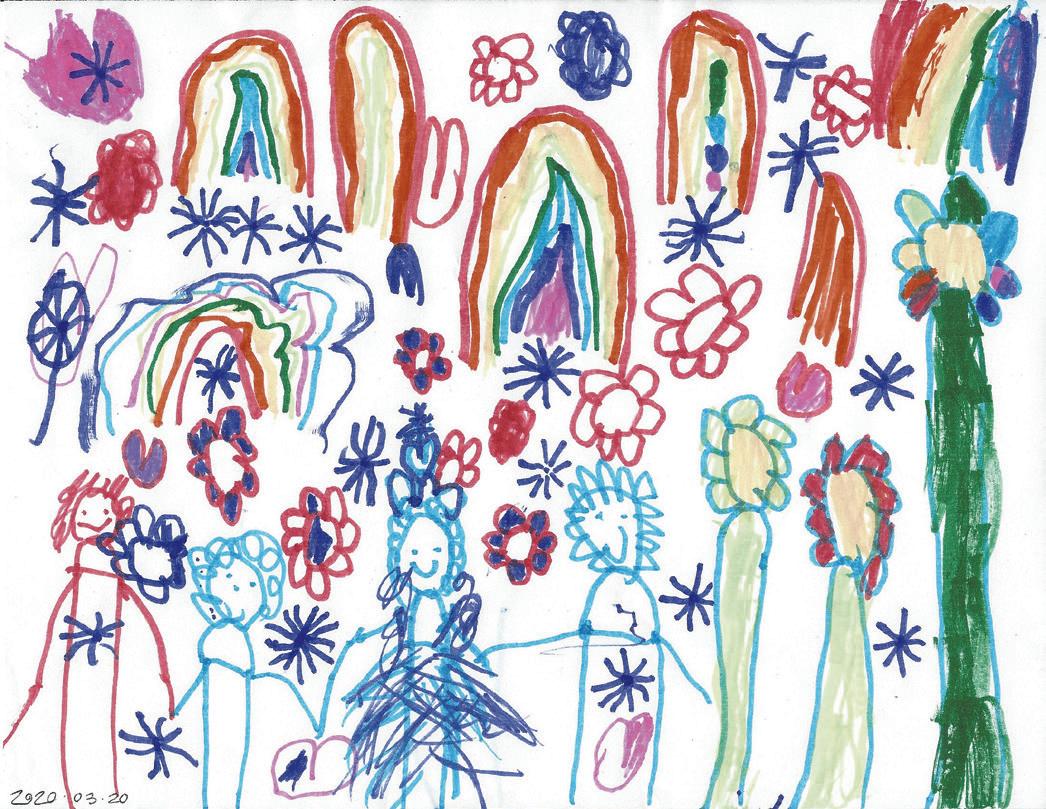


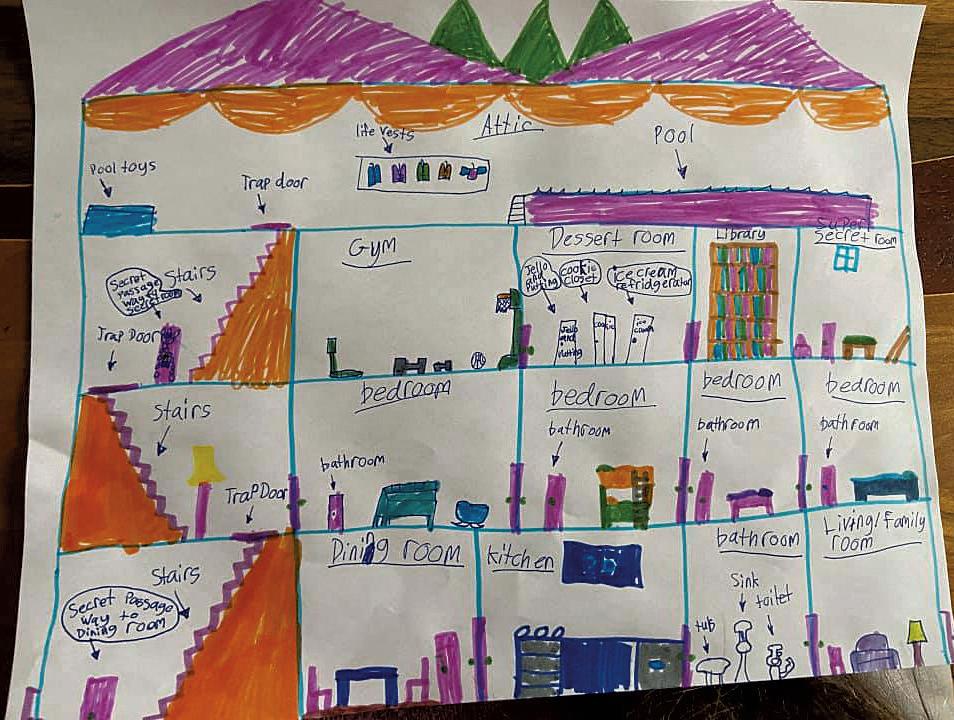
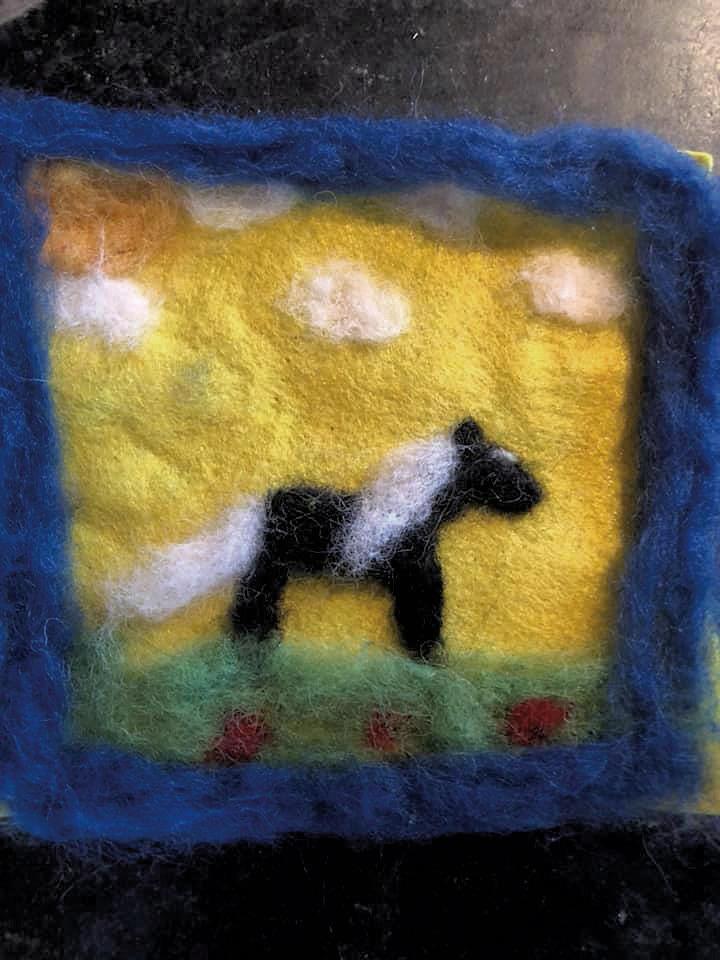
We started advertising in Kids VT to share our summer camp programs, scholarship opportunities and benefits of outdoor, screen-free experiences with our immediate community. We have consistently seen growth in camp enrollment from our local community. Our records indicate that more than 30 percent of our new camp families noted Kids VT as the mechanism through which they found and chose Camp Hochelaga.
Kaitlin, our Kids VT account executive, is amazing. She answers our questions promptly and always gives us genuine advice about how and where to center our marketing funds. As a nonprofit operating on a tight budget, we appreciate that Kaitlin always makes sure that our marketing investments give us the biggest possible community impact and exposure. I would absolutely recommend Kids VT to other businesses. We have seen endless engagement from local families as a result of advertising campaigns.
CONTACT KAITLIN MONTGOMERY AT 985-5482 OR KAITLIN@KIDSVT.COM
KESSONFamilies who unschool or homeschool — at least 2 million kids in the U.S. — usually reach this decision after much deliberation and after weighing innumerable factors: available time and energy, capacity, desire, and finances. Now, overnight, we have hundreds of thousands of young people with no school to go to — compulsory unschooling. While many families will manage to cope (those with resources for alternative childcare, those who can work from home, those with good internet access and lots of available books and materials), many more are making painful choices. Do I leave the kids home alone? How will they keep up with their schoolwork? Will they graduate? Others are dealing with even more grave issues. How will I pay my rent? How will my child get their meals? How can I keep them safe?
Like the proverbial butterfly wings in chaos theory, which flap over the Amazon and create a cyclone in China, an invisible molecular particle encircled by a crown emerged in China and created a global firestorm. It has thrown our multiple and interlocking global and local systems into chaos. If there is anyone out there who was not aware of the fragile interdependence of our lives before, they are now. The cracks in our system have been revealed as gaping caverns; as is the case in many crises, the people who will suffer the most are low income, food and/or housing insecure, or dependent on lowwage jobs that demand their physical presence (waitstaff, cleaners, clerks), and emergency responders and health care workers. Stay home? Not possible for the half million homeless people, including more than 100,000 schoolchildren in New York City alone who are in shelters or temporary, transient housing. Take sick days? More than 34 million nationwide with no paid leave for illness. Seek medical treatment?
Another 34 million with no health insurance. Keep your distance from other people? 2.2 million incarcerated people, crowded in cells, and innumerable refugees detained in horrific conditions along our southern border. At the very minimum, this crisis may demand that we work tirelessly to eradicate the deep inequalities that have come to represent our (United States) society.
It’s hard to consider the big picture when personal crises demand
immediate attention. For many families, the present crisis revolves around questions like, What will this mean for my child’s academic future? and What in the world am I to do all day with the kids? If you are a parent of a suddenly unschooled young person, I offer here some words of hope, some rays of possibility to grasp, as we seek the collective meanings of our experiences.
Our family was far from privileged when we embarked on our five-year unschooling adventure. We lived in a 984-square-foot, Depression-era shack that we relocated onto 20 acres of land in rural Oklahoma. We had an uncertain income stream (which often slowed to a trickle) and no health insurance for our family of six. There was little cash to spend on fancy educational resources, but we did the best we could with what
academic achievement, their habits of mind, their behavior, etc. In Vermont, we have legislation guaranteeing that every child has the right to a personalized education, which has been a very promising development. The current enforced unschooling, which is challenging in so many ways, offers an opportunity to interrupt practices that depersonalize learning and give your child a jump-start on discovering the interests and curiosities that may encourage them to design their unique and amazing personalized learning plan.
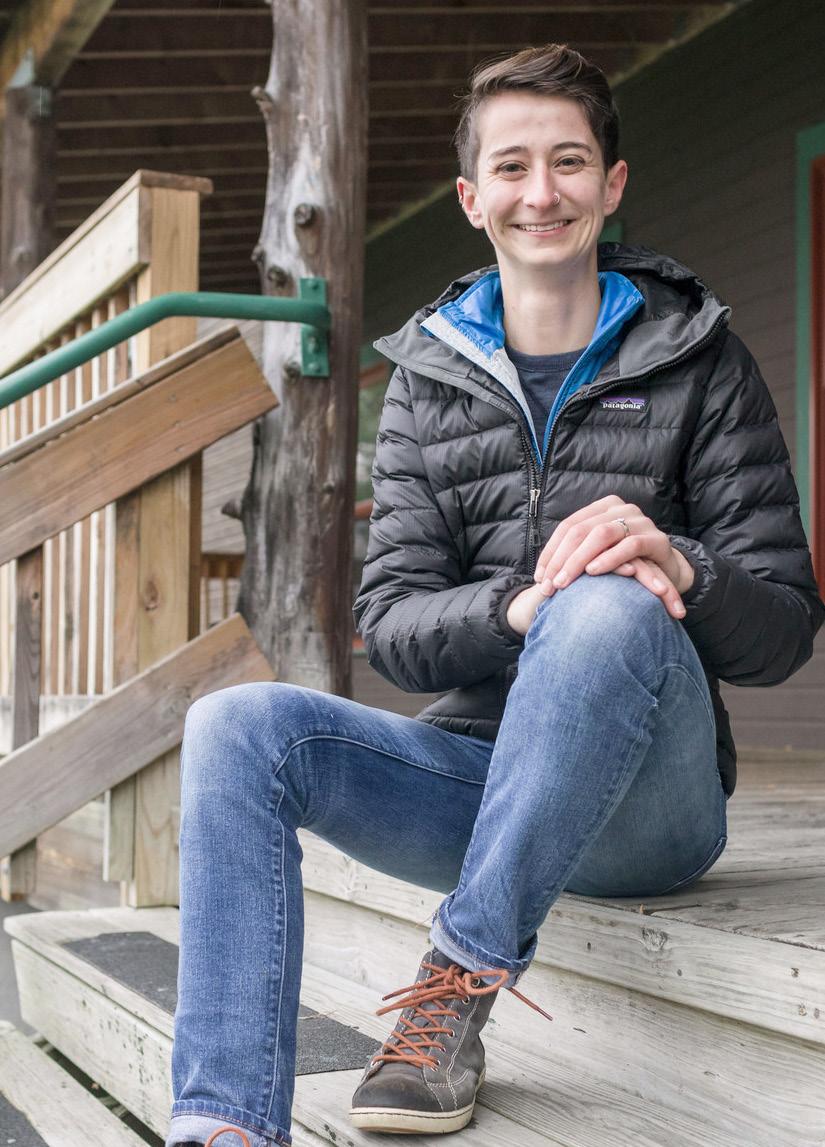
2. If your child seems to crave the structure of completing their internet assignments or packets that their teachers have laboriously put together (bless their collective hearts for caring), by all means encourage them. Whatever gives young people a sense of security and continuity. But, as unschoolers have learned, the work required in most classrooms can be done in much less time than it generally takes to get an entire class rolling. They are likely to have time on their hands, even if they meet all their structured requirements.
we had. Actually, duct tape might have been our largest single expenditure (that was the year my 8-year-old spent constructing cardboard and duct tape swords and shields to reenact his favorite myths with his younger brothers).
Despite these very real challenges, those five years were some of the best in our lives. With no lesson plans, no tests, no grades, no textbooks and no “donows,” our four boys managed to learn a whole lot about the world. But I think I learned even more than they did.
1. Personalize learning. For the most part, conventionally schooled children and teenagers follow structured curricula with predetermined (often by testing companies) learning goals and anticipated outcomes. Their physical movement is limited, and there is an emphasis on “accountable” behavior (raising hands, lining up, staying on task, not talking out of turn, etc.). They are monitored, judged and assessed on every aspect of their experience — their
3. Don’t panic if your child complains, “I’m bored.” Boredom can be productive. Children are by nature curious about the world and eager to learn new things. Pardon me for saying it, but schooling, with its curriculum mandates, lesson plans, pacing calendars, Carnegie units and assignments, tends to eradicate these healthy natural instincts. John Holt, the renowned scholar and educator who wrote the pivotal book on unschooling, Teach Your Own, suggested that children only become self-directed learners after they “detoxify” from the demands of schooling for a period of time. (If you want to learn more about self-directed learning, see the Alliance for Self-Directed Education at self-directed.org.)
4. Get outside In our unschooling experience, the most profound moments of learning happened outdoors. Indigenous scholars and educators teach us that the land itself is the best teacher. If you have any access at all to the surrounding countryside or a body of water, go there. Right now. Listen for the birds, watch for signs of spring, feel the wind brush against your face, smell the forest floor. Learn to listen to
With no lesson plans, no tests, no grades, no textbooks and no “donows,” our four boys managed to learn a whole lot about the world.CAMP DIRECTOR, YWCA VERMONT CAMP HOCHELAGA
the trees, and think about the amazing underground “Wood-Wide Web” through which these upright relations of ours communicate with each other. The world is facing multiple ecological crises, of which COVID-19 is only the most apparent at the moment. To survive and thrive, young people will need to become attuned to the deep interconnectedness of all species and the wisdom the land has to offer us.
5. Play is not just for preschoolers. Play is freely chosen. Play is pleasurable. Play is engaging, engrossing, spontaneous, imaginative, self-directed, experimental, improvisational, purposeful, absorbing and transformative. It is a negotiation between the inner world of the child and the environment. In play, we try on the world and see how it fits. Isn’t this what learning should be all about?
6. Tell stories. Unhook from the screen for as much time each day as you can bear. Tell your children stories — stories of their grandparents and their greatgrandparents, how they lived, the challenges they met. Tell them about your life before kids. What were your visions and your dreams? What do you care deeply about? Look at family pictures, laugh and remember. Relationship is probably the most significant aspect of learning.
7. Do things together. Peel vegetables, start a compost pile, make a cake, plant seeds in pots and put them in a sunny window (spring is coming), play board games, make board games. Our kids learned many of their basic math skills playing Yahtzee. Fold laundry. Teach your kids to sew on buttons. If you are alert to it, there’s a lot of learning that can happen in everyday tasks.
Vermont’s esteemed philosopher John Dewey taught us that real life experiences should be at the heart of learning. It is only through the “doing” and the “making” that a kid’s brain can easily connect to and retain more abstract knowledge. Dig deep and find those connections between life and academics.
8. Take things apart. Have an old alarm clock or typewriter? A broken toaster? Hopefully you have a few basic tools around — hammer, screwdrivers, etc. There’s a lot to learn from looking at the innards of objects. Of course, you need to remove hazardous stuff like used batteries. Build stuff. Those toilet paper rolls are even more valuable than you thought. Make wind socks, castles, trains. Combined with other stuff you usually recycle or throw away, your kid can make amazing junk sculpture. Some of our greatest, most ecologically conscious artists nowadays are those using recyclable materials in novel and creative ways.
9. Read aloud. Our whole family once read Hamlet over a couple of weeks. Even the 2-year-old was captivated by it. Read alone — take some time to enjoy your own novel or catch up on that nonfiction you’ve been meaning to read. Seeing an adult enjoy reading is how young people become readers.
10) Value the learning process over the products We are obsessed with the “results” of learning. But it is in the doing, the making, the questions, the exploration, the mistakes that learning actually happens. Let go of caring about the end result and focus on the learning itself. Observe your child as they go about exploring and making — you will be surprised at what you learn about who they are and how they think.
I could go on. But my best counsel is to take a deep breath and engage in the moment as mindfully as you can. Your child will be learning major life lessons from how you live in and through this crisis. What’s the worst that might happen if your young person leaves behind the race to the top for a time? If they were to spend most of their days outdoors? Breathing fresh air? Looking at the sky, noticing the clouds? Spending unlimited amounts of time simply reading books of their choice? Daydreaming? And, OK, watching a few choice documentaries on TV. Young people are very resilient, and I am deeply grateful that this disease is proving to have little (physical) effect on them.

Chaos is destabilizing. But chaos theory teaches us that systems reorganize, often in surprising new ways. Our way of life has brought us to a tipping point, of which the coronavirus is only the most urgent evidence.
We will undoubtedly be faced with more crises in the future that require us to think in new ways about all aspects of our social life: How do we create strong communities? What do we collectively value? How can we build networks of support so that all are cared for?


And in terms of our youth, and their education: How do we create educational approaches that value human development, equity and joy over test scores and academic achievement? What is worth learning, and how can we best prepare young people for the actual future that is evolving before our eyes? What needs to be in place to match up learners with the right resources at the right time, so that they might become self-directed and fulfill their dreams?
And for us oldsters: How can we behave more responsibly toward the generations to come? What do we all need to learn about making our communities ecologically sustainable? How do we establish more harmonious relations with the rest of the natural world?
We are all of us, young and old, unschoolers now, and the curriculum for our complex times is emergent, nonlinear and unpredictable. Systems demand that we evolve and adapt. And remember that butterfly effect: Small actions can have big impacts. Our collective small actions, mindfully taken, could have important collective impacts, so let us proceed into this new experience as thoughtfully and compassionately as we can. K
This column is excerpted from an essay that first appeared at kathleenkesson.com.

Do you know a local kid (age 17 or under) who's recently done something amazing? Won a spelling bee?
Written an opera? Raised a bunch of money for a great cause?


Tell us more! They could be featured as One to Watch in an upcoming issue of Kids VT. Visit Kidsvt.com to tell us about this local superhero.






SEE PAGE 36 FOR PUZZLES



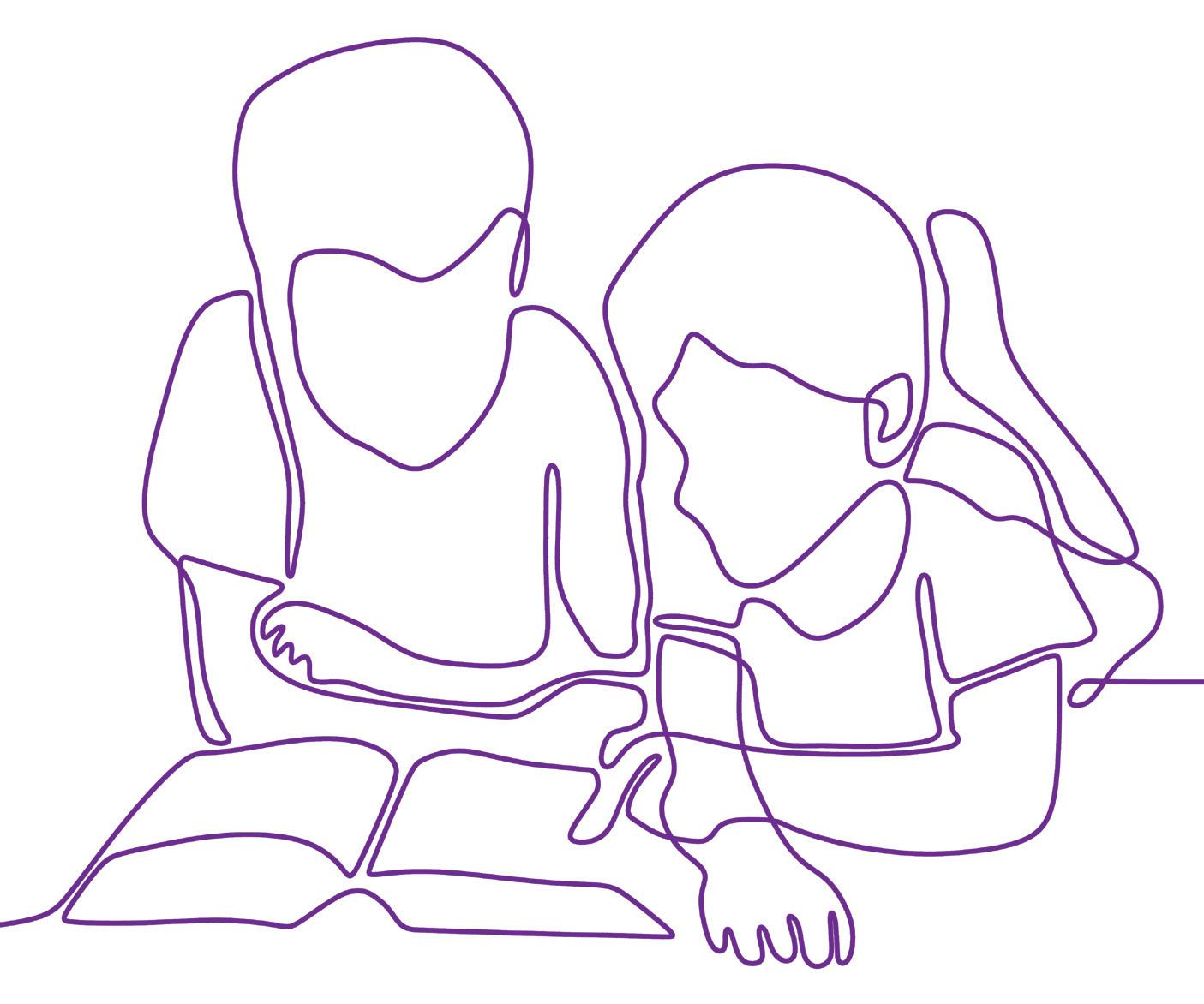
TOMORROW


Answer: What’s always coming but can’t arrive today?
Jumbles: MOM, WORM, TOSS, GROW
JUMBLE:




Because it ran a hop sign.
CODED RIDDLE: Why did the Easter Bunny get a ticket?








It's a bird, it's a plane, it's....



